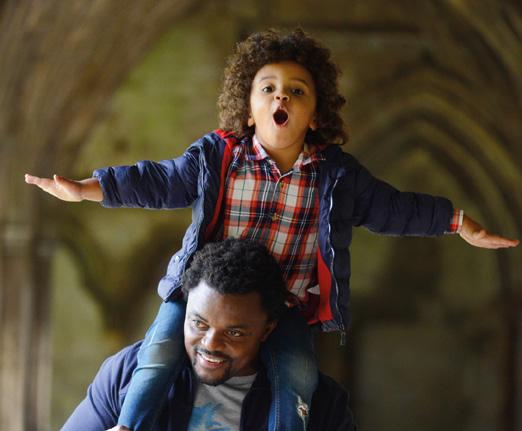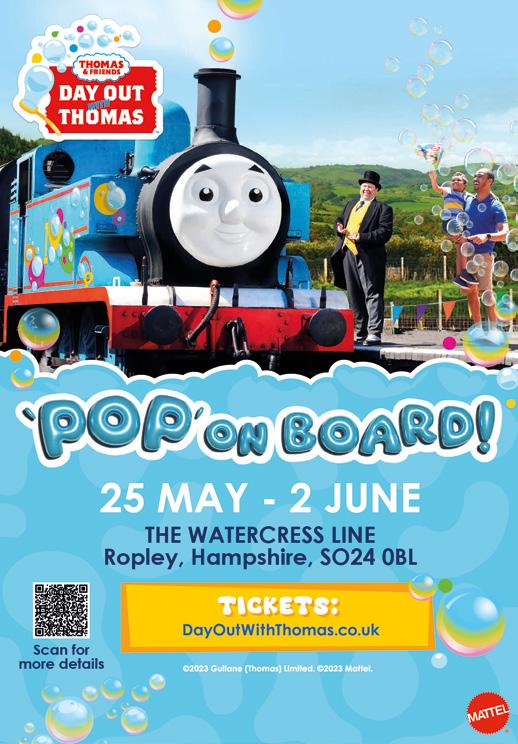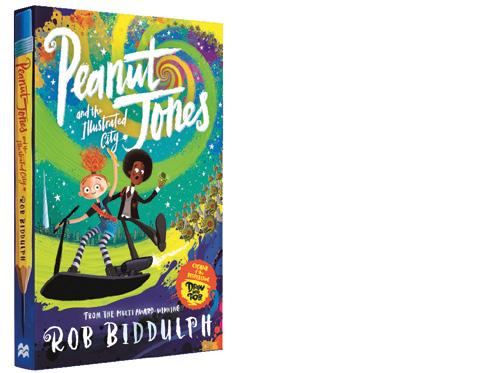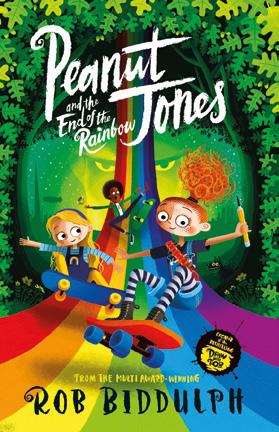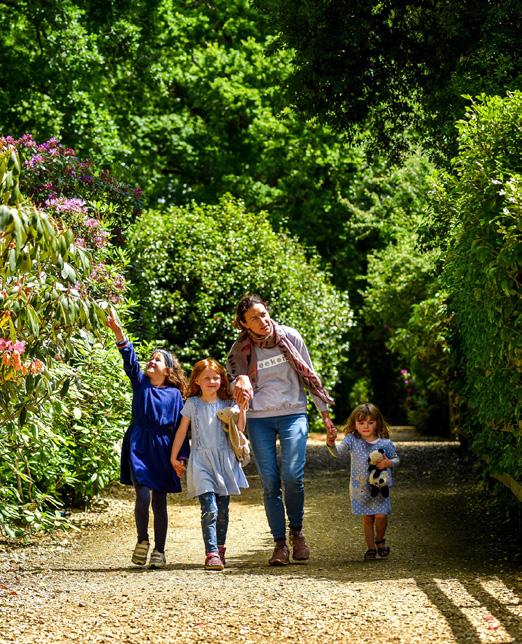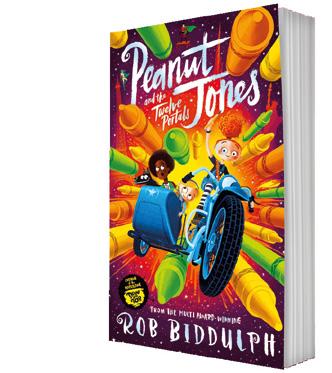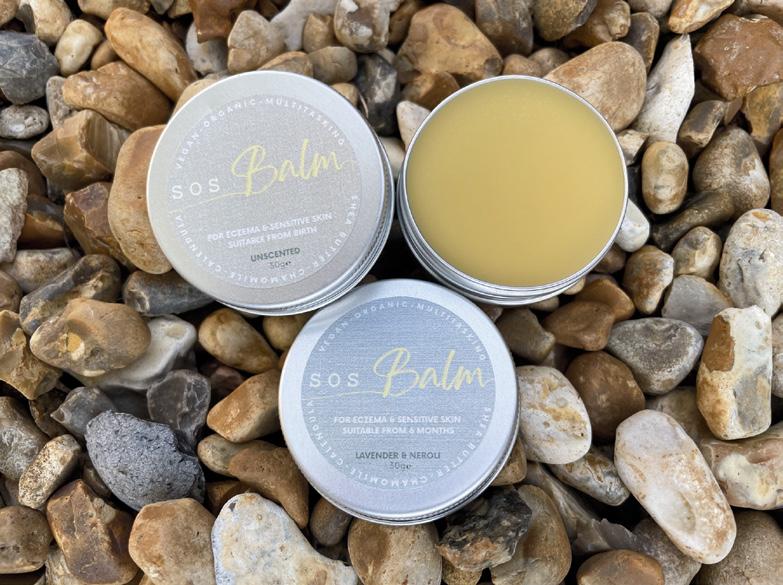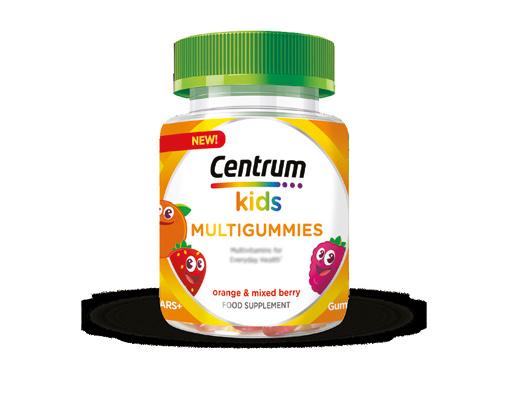
TO COOK AS A FAMILY RECIPES

KIDS
The best EAT FOR FREE THIS EASTER
baby carriers
How to
create a wildflower meadow
The UK’s Number 1 Brand for Follow On Milks

ENRICHED WITH VITAMIN D


TO COOK AS A FAMILY RECIPES

KIDS
The best EAT FOR FREE THIS EASTER
baby carriers
How to
create a wildflower meadow

ENRICHED WITH VITAMIN D
Welcome to the spring edition of Family First. In this issue, we offer top tips on how to tackle the dreaded spring cleaning, why planting your pants (yes, we mean your underwear!) can help educate children on nature and soil health, as well as potty training advice and ways to maximise your morning routine.

with a focus on pelvic floor health. And if you are having your first, second or third baby, The Positive Birth Company talks about why there is no such thing as the ‘perfect birth’.
We were thrilled to sit down with Kelvin and Liz Fletcher to find out about how they balance life running a working farm with raising four children, and how their journey has been documented in the TV show Fletchers’ Family Farm. We also spoke with Olympic athlete, Jess Learmonth, about taking time out to have a baby and how this has impacted her training,
COVER CREDITS:
Cover Stars:
Kelvin & Liz Fletcher
Executive Editor: Lee Gatland
Art Director: Richard Hejsak
Editor: Georgina Probert georgina@sevenstarmedia.co.uk
Sales Team: 01959 543 650 sales@sevenstarmedia.co.uk
Published by SEVEN STAR MEDIA LTD
184 Main Road, Biggin Hill, Westerham, Kent
Tel: 01959 543659 sevenstarmedia.co.uk

Disclaimer: Family First is published bi-annually (twice per annum) by Seven Star Media Ltd. No part of Family First may be reproduced, stored in a retrieval system or transmitted to any form without permission. Views expressed in the magazine are not necessarily those of Seven Star Media Ltd, and are included to provide advice only. No content is a substitute for professional medical advice. During printing, images may be subject to a 15% variation. © Copyright of content belongs to individual contributors with the magazine copyright belonging to Seven Star Media Ltd. All rights reserved. Please either keep this magazine for future reference, pass it on for somebody else to read, or recycle it.
We have also learned a lot about why choosing the right fitting trainers for your kids is so important for their foot health and how we can teach children about the importance of sustainability, from the cofounder of Dubs Universe, Stuart Davis. We discovered the wonders of West Kent and have rounded up some of the best familyfriendly activities to do outdoors in the Garden of England, as well as giving you the low down on what to see and do during a family day out at Knowsley Safari Park in Prescot, Merseyside.
Wishing you a fun-filled spring, Georgina
This issue we’re speaking to...
Kelvin and Liz Fletcher about their journey from actors to running a family farm


having a

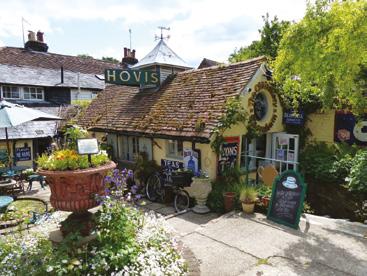



























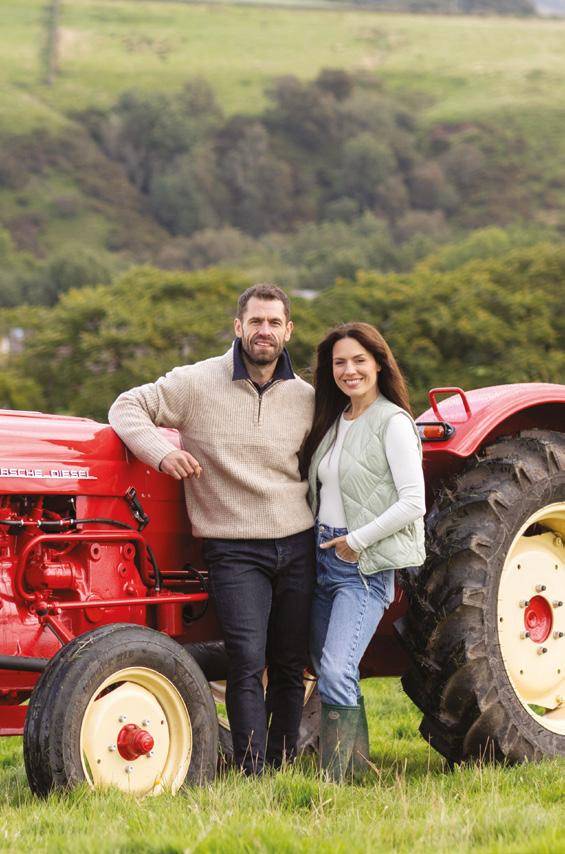
32 The importance of reading – HFL Education
36 Start the day together
38 Put their best foot forward – Dubs Universe interview
10
08 Editor’s picks FAMILY FEATURES
10 Escape to the country
–
18 Spring cleaning tips for busy parents
20 Keep them close –WearMyBaby
26 What is a ‘perfect’
44 5 signs your child is ready for potty training
48 A pet is for life…
52 Win a fantastic family day out at Gloworm
89 Kids eat for free this Easter – Special offers

62 Plant your pants!
TRAVEL
68 A home away from home – Hand Picked Hotels
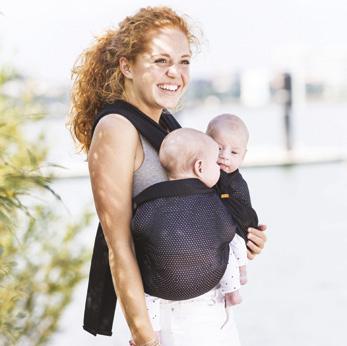
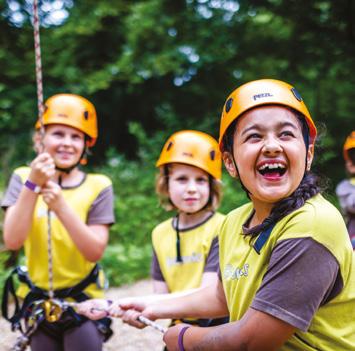
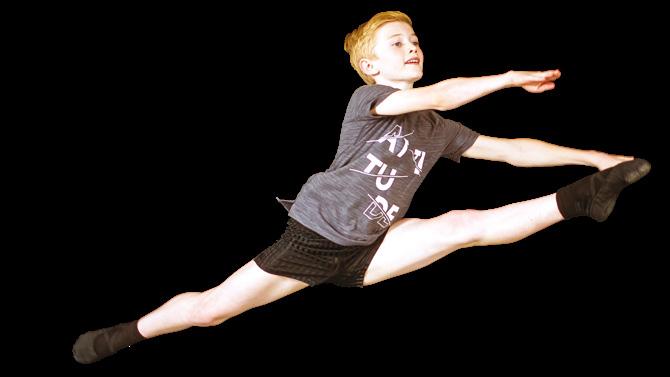
54
70 Discover the wonders of West Kent
72 A wild day out! –Knowsley Safari Park
SPORT 4 ALL
76 Let’s dance –Royal Ballet
82 “The pregnancy was a silver lining after my injury and recovery process” – Jess Learmonth interview
86 Cricket for all – England and Wales Cricket Board GET COOKING
98 Cook as a family! – Benji’s Bites Toddler Food
100 Meals to make together – RECIPES


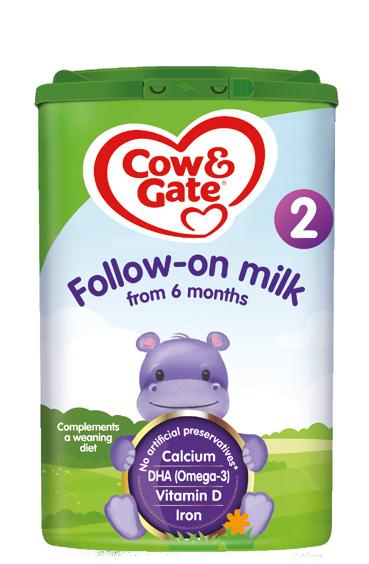

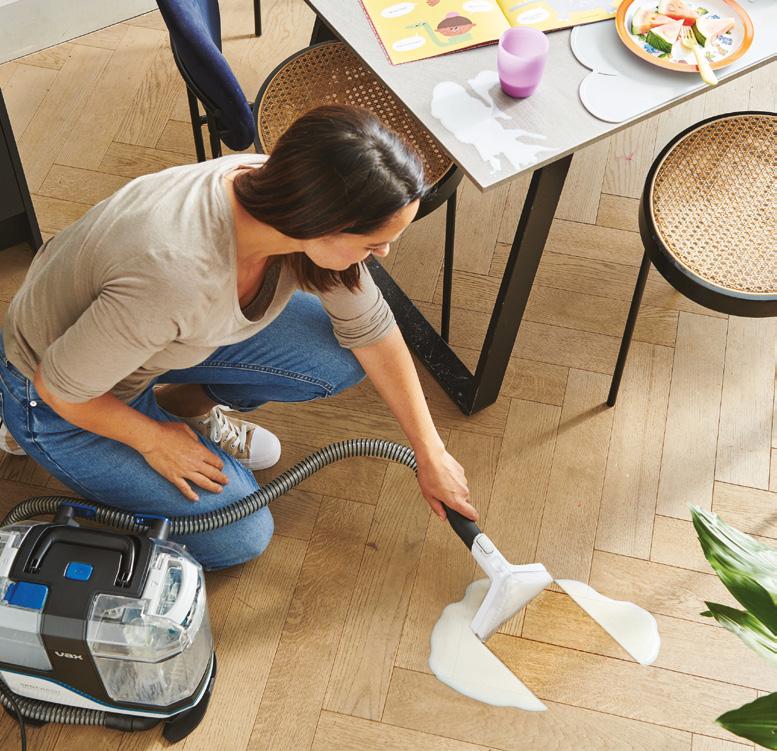


Our hand-picked selection of family-friendly items we wouldn’t be without this spring.
THE SILICONE STRAW COMPANY
While we know that plastic straws are bad for the environment, how many times have your kids used a paper straw that has gone soggy before they have finished their drink? Step in, The Silicone Straw Company. The reusable straws are made in the UK using the highest quality food-grade silicone meaning they can be used with hot and cold drinks, and are dishwasher safe. Plus, they can be cut shorter for use in smaller cups. Coming in a handy travel tin, they are easy to pop in your bag and take out and about. There’s also a larger tin that contains four silicone straws, which is great for big families.
Single straw and tin, £6.95; The Silicone Straw Company; thesiliconestrawcompany.co.uk
VAX SPOTWASH MAX DUO
Keeping your house clean when you have children and pets can be a nightmare. A product that makes parents’ lives easier is always a plus point in our books! The VAX Spotwash Max Duo takes the fuss out of cleaning your floors, carpets and upholstery, and has several different tools to easily lift dirt, spills and stubborn stains. We tested it out at home (two adults, two kids and a cat) and it managed to clean up milk spilt on the carpet, muddy paw prints on the kitchen floor and tomato ketchup on the sofa cushions! We love that it has double tank capacity, so you don’t have to keep filling it up. The interchangeable tools are great for all manner of spaces and surfaces, plus the VAX Spot Washer Antibacterial Solution kills 99% of bacteria, meaning that your home is clean and fresh smelling, too. VAX Spotwash Max Duo, £219.99; VAX; vax.co.uk
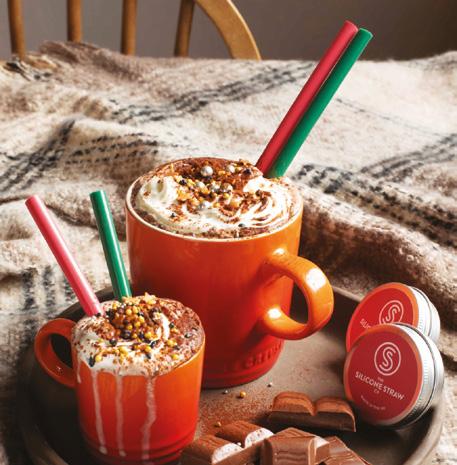

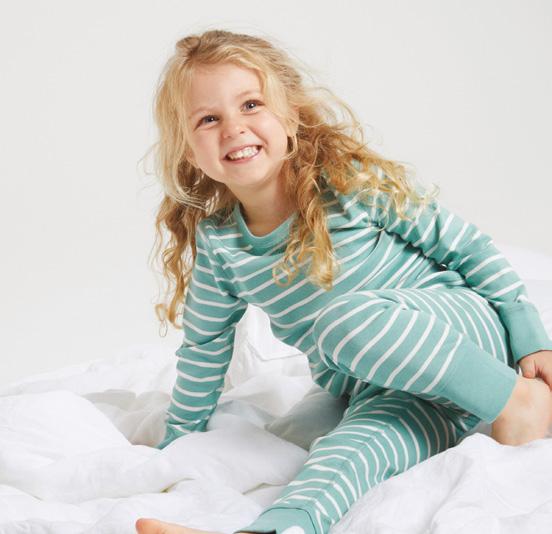
As grown-ups we love a bit of childhood nostalgia and nothing takes us back more than an oldschool instant camera. Instil a love of photography in your kids with the Photo Creator Kids Instant Camera, which allows them to take photographs and videos, add fun effects and then print them instantly. They can customise their pics with markers and stickers to create fun and unique photos. The camera is aimed at kids aged 4+ and is available in pink and blue. It also comes with a wrist strap, four markers, a sticker sheet and a USB cable.
Photo Creator Kids Instant Camera, £60; Argos;


Swedish brand PO.P (formerly known as Polarn O.Pyret) is bringing back stripes for spring with their premium cotton tops and trousers. Their SS24 collection is suitable for ages 0-12 years and is made from the softest breathable 100% GOTS Organic Cotton. The top and trouser combos can be worn as pyjamas or loungewear for a cosy daytime look. And if you want to “twin” with your kids, they are available in adult sizing, so the whole family can join the stripes fun. This season’s colour palette is bursting with vibrant spring tones, from turquoise to purple, the brightest orange, a supercute pink and a striking cornflower blue. Cotton tops and trousers, from £22; Polarn O.Pyret; polarnopyret.co.uk
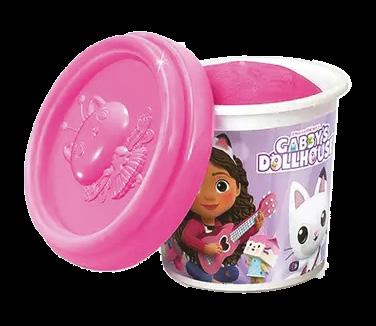

Two of our children’s favourite things have come together – play dough and Gabby’s Dollhouse! The Gabby’s Dollhouse Dough Backpack comes with two colourful pots of play dough, three moulds, a shooter and a tool, which is great for playing on the go. Our daughter (aged 3.5 years) loved making play dough moulds of her favourite Gabby’s Dollhouse characters and the backpack was a big hit when we took her out for lunch (we all know how hard it is to keep the kids entertained when you are eating out), as she could carry her own toys herself.

Gabby’s Dollhouse Dough Backpack, £12; Argos; argos.co.uk

“We want the kids to understand the privilege it is to live off the land”
Georgina Probert speaks to actors Kelvin and Liz Fletcher about how they swapped the glitz and glamour of showbiz life to run their own farm with their growing family.
Three years ago, Kelvin and Liz Fletcher made the huge decision to leave city life behind and move from their lifelong home of Oldham in Manchester to take on a 120-acre farm on the edge of the Peak District National Park. With four kids in tow – Marnie aged six, Milo aged four, and twins Mateusz and Maximus aged two – the Fletchers discuss their journey into farming, as well as balancing the demands of running a working farm with a busy family life.
best known for her role in the TV series In the Club, are used to the limelight. So what better way to share their new adventure than to create a TV series documenting the ups and downs of farm life – Fletchers’ Family Farm.

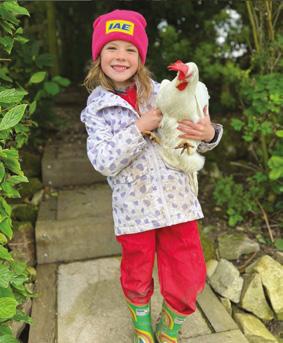
“It’s a bit crazy with two actors who live on a farm with four kids”
Kelvin, who played Andy Sugden in the ITV soap Emmerdale and won Strictly Come Dancing in 2019, and his wife Liz, who is
We sat down for a (virtual) chat on a rainy spring day to find out what made them take the leap into a completely different lifestyle and a career that neither of them had any experience of. “We were actually planning on moving to California in 2020 and then the pandemic hit and our plans changed,” says Kelvin. “What we were searching for was a new chapter, we just had no idea of what that would be. Then we came across a little farm in the Peak District and as soon as we walked in we got that feeling that it could be our home.”


“We want to encourage people to put in that conscious effort of giving yourself a break, being kind to yourself”

have horses, rare breed Cotswold sheep, pygmy goats and Oxford Sandy and Black pigs, which are a breed of domestic pig originating from Oxfordshire. They are keeping breeds that have not been farmed commercially for decades. “It’s a real appreciation and fascination of farming with nature. There’s a lovely balance and the whole thing becomes a bit of a bit of an honour,” explains Kelvin.
“We’re connected to the food we eat and where that food has come from”
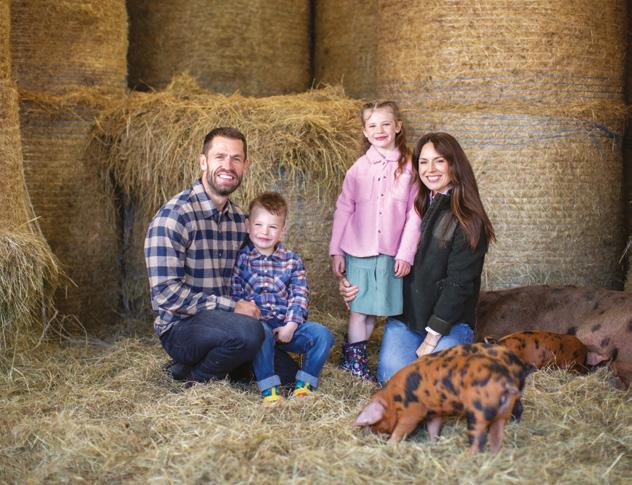
“Having children is without doubt the hardest and the most rewarding job I’ve ever had”
Chasing the idyllic rural lifestyle is one thing, but the Fletchers took on a working farm that started small and has grown exponentially over the past three years – all documented in their TV series. “We never set out to be smallholders,” explains Kelvin. “But by discovering farming, seeing it first-hand and learning about it, we became fascinated by it. Farming can be overwhelming at times, but that’s the challenge and the adventure.”
The couple, who have been married for seven years, didn’t know anything about farming before they took on the farm. “We started small and just got a few sheep initially,” says Liz. “And then before you know it, it becomes a subject that you’re obsessed with. You start reading up about it and learning more, and then you realise what more you can do and it grew from there. We went from 10 sheep in 2021 to 200 last season.”
The Fletchers focus on native breeds and
So how does farming work when you have a young family? “We’re teaching the kids what we’re learning, they literally learn along with us. And seeing them learning is so beautiful. They’re fascinated by stuff. We’ve started small, but seeing them live this life as well with us, it’s amazing,” says Liz. Creating a balance between running a farm and family life brings its challenges, as Kelvin explains: “I guess firstly is the task of running a small farm and getting up to speed on the responsibilities one has when you’re raising animals: whether that’s injecting them with a treatment, understanding different breeds, understanding your grazing systems, how grass grows, why it grows and how the farm works. I’ve got nothing but admiration for every other farmer out there because they do amazing work and it’s juggling so many different skill sets.
“And then there’s the family dynamic, constantly chasing that balance of not wanting to compromise yourself or your kids at any point. Family is the most important thing and we wanted to create a life and a business that we could operate as a family and become a way of life. But at the same time, we want the kids to understand the privilege it is to live off the land and provide and produce food.”
While most parents are familiar with juggling work, life and kids, farming has its own unique issues. “Do we balance it? No, I think like everyone with a job and being parents, you’re in a bit of survival mode,” says Liz. “What we’re very good at is going with the flow, but you have to sometimes be reac-tive, especially on a farm. I always say, you never know what’s going to happen. There’s an episode where it’s the twin’s first birthday
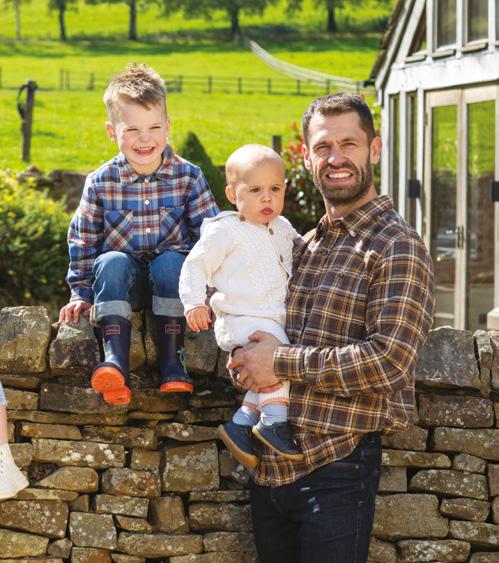
and we’re having a lovely family meal. We look out of the window and the sheep have escaped. So we all jump up from the table and head off to try to get the sheep back in – I think you just have to improvise sometimes.”
While the twins aren’t yet old enough to help out on the farm, Marnie and Milo are budding farmers in training. Farming livestock can be raw and hard at times, but Kelvin and Liz don’t shy away from dif-ficult conversations with their kids. Liz says, “Kids have a fantastic simplicity and an ability to grasp, death, life and the responsibility that comes with rearing animals. Marnie especially understands that we rear animals and we get to eat them. And when we’re eating our sausages in the morning, I will tell them that this is from the pigs that we’ve reared – and she loves the idea. I think that’s vital if she knows the work, care and love that’s gone in. We’re connected to the food we eat and where that food has come from. As a farmer, it’s something you cannot shy away from. We talk about it openly and discuss and teach them what is happening each season.”
There’s an age-old saying that you should never work (on TV) with animals or children – but Fletchers’ Family Farm does both. Liz laughs, “We’ve had our fair share of filming mishaps! But I think that’s a testament to the crew, because they’ve been able to shoot this as an observational documentary, it’s just happened. So we just kind of let it unfold and that becomes the story.”
“We wanted to create a life and a business that we could operate as a family”
Kelvin adds, “We want people who watch the show to get a sense of escapism. It should be a good, wholesome watch that the whole family can enjoy.



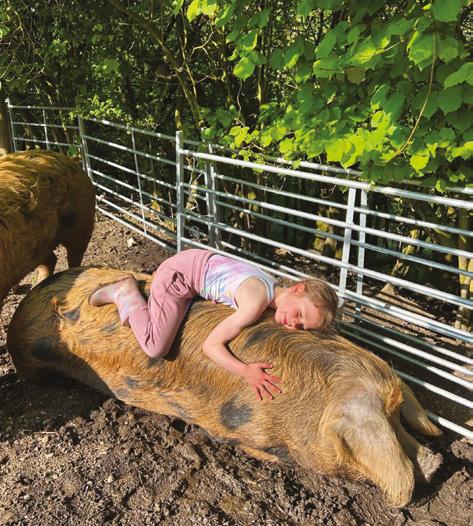
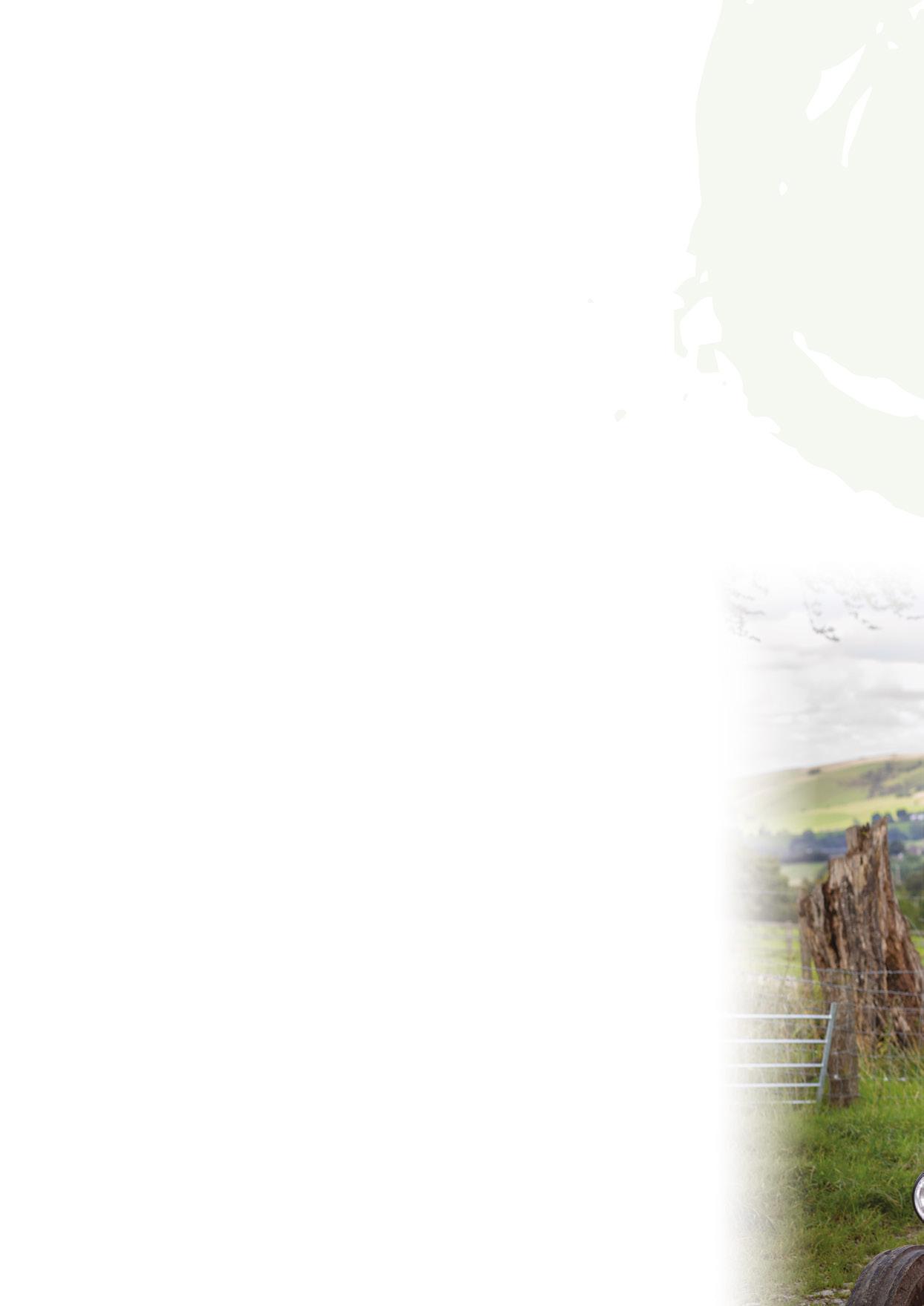
They can learn something and they can come on a journey with us in this new farm life and hopefully laugh along with us. Yes, it’s a bit crazy with two actors who live on a farm with four kids, but we’re still just normal people. We hope that everyone can take a piece out of it and children see farming through our kids’ eyes.”
While living on a farm means the Fletcher family has nature right on their doorstep, not all families have the same accessibility. If you want to get your kids outside and interested in nature, Kelvin’s ad-vice is to “get your coats on and get outside”. Whether that’s for five minutes or a longer walk, he says “you can find green space wherever you are in the country. When we lived in Manchester, we didn’t realise that within 20 minutes we could be in the Peak District in the middle of nowhere. I think you’d be surprised by how accessible certain National Parks are. Just get out and get active, walk and dis-cover what’s on your doorstep. Whether that’s just Googling your local parks or your nearest National Park or simply going into the garden.”
If farm and family life wasn’t busy enough, at the end of February Liz took to the stage for a charity performance of Gypsy the Musical
Liz adds, “There are so many resources online that you can print off to use at home, such as bird and bug spotting. It’s really simple and easy to do. You don’t need to overthink it. Get your shoes and coat on and just try. Kids have a great sense of adventure and can easily connect with nature if given the chance.”
The Mind Your Head (www.mindyourhead. org.uk) mental health charity is close to both Kelvin and Liz’s hearts – particularly as mental health is such a big issue with young males and farmers.
Kelvin explains, “The statistics are quite frightening in young males committing suicide (outside of farming). Mental health is a huge issue and the pressures in life can feel sometimes a little bit too much. We want to encourage people to put in that conscious effort of giving yourself a break, being kind to yourself and trying to put yourself in the best possible headspace. Sometimes that’s easier said than done. But if you can strive to be in a good, sound headspace, then everything else is so much easier. You can be a better parent, a better worker and a better friend. And it’s all comes from within.”
Mind Your Head promotes the message that it is ok to be open and honest about your feelings and that a problem shared is often a problem halved. Kelvin, who is an ambassador for the charity, says, “It is about letting people know that a community is there for you, especially within farming. It can be it’s tough, it’s 24/7 and it’s a lonely job sometimes. I think it’s about us being able to use our platforms to let people know that that help is out there. And sometimes we’re all feeling it, you aren’t alone.”
If farm and family life wasn’t busy enough, at the end of February Liz took to the stage for a charity performance of Gypsy the Musical: In Concert at
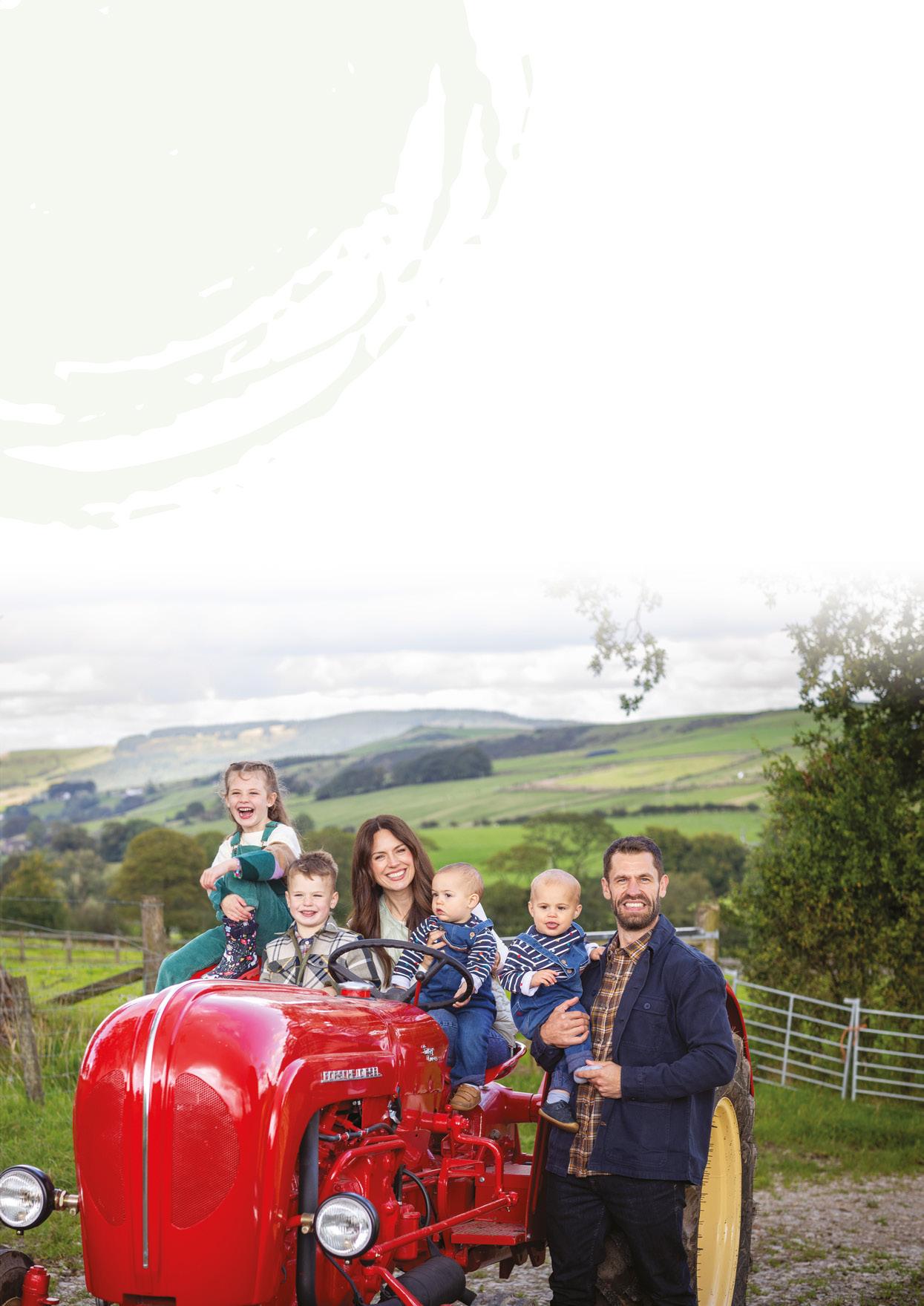
the Opera House theatre in Manchester. When we spoke to her before the performance, she explained, “I’m playing a role called Elektra who is a has-been burlesque dancer. I have this bold, light-up outfit. I’ve got to remember to sing, dance and turn on the lights on my outfit. It’s going to be a lot of fun! I’m performing alongside Harriet Thorpe, who’s an incredible actress and Divina de Campo, who is so much fun to work with – it’s an all-star cast. I wanted to get involved as it’s a one-night-only fundraiser to keep this amazing theatre going.”
“What we’re very good at is going with the flow”
While Liz is a seasoned actress, she actually has a background in musical theatre. “Not many people know this, but musical theatre was the foundation of my acting life as a young kid. I have not done a show for 12 years, but it’s like riding a bike. Once you get back into it you know exactly what you’re doing.”
All eight episodes of Series 1 of Fletchers’ Family Farm are available to view on ITVX. For more information, visit: itv.com/watch/ fletchers-family-farm/10a4512
Kelvin: “The worst thing is the best thing. It’s the most challenging job you’ll ever have. But nothing worth having comes easy. The hardest thing is questioning yourself as a parent. Am I doing the right thing? What should I do? What shouldn’t I do? I think the most important thing you can give a child and our biggest responsibility is to give that child love and a feeling of security. As a parent or guardi-an, you can make that child feel loved and safe. And I think that can be the hardest thing to do sometimes. Having children is without doubt the hardest and the most rewarding job I’ve ever had.”
Liz: “I mean it’s an absolute roller coaster, isn’t it? I think the main thing about being a good parent is that you create good human beings (hopefully!). And the best thing is seeing them shine in themselves, seeing them get independence and watching them work out life. You’re just there to guide them, let them feel heard and let them express themselves.”




As the flowers bloom and the sun (finally) peeks out from behind the clouds, it’s time to shake off the winter blues and embrace spring. For parents, spring cleaning can seem like a daunting task, especially when juggling the demands of a busy family life. However, with some strategic planning and a few handy tips, you can transform your home into a tidy and welcoming space without adding stress to your already jam-packed schedule.
Make a plan: Before diving into spring cleaning, take some time to create a plan of action. Break down tasks into manageable chunks and assign them to specific days or weekends. Having a clear roadmap will help you stay organised and motivated throughout the process.
2 Declutter:
Start by decluttering your home room by room. Encourage your children to join in by sorting through their toys, books and clothes. Donate or
discard items that are no longer needed or used. Decluttering not only creates more space, but also makes it easier to keep your home tidy on a day-to-day basis.
3 Set realistic goals: Don’t overwhelm yourself with unrealistic expectations. Set achievable goals for each cleaning session and celebrate small victories along the way. Remember, even small progress is still progress.

“By staying on top of maintenance, you can avoid the need for intensive spring cleaning in the future”
4 Get the kids involved:
Turn spring cleaning into a fun family activity by involving your children. Assign age-appropriate tasks such as dusting, vacuuming or wiping down surfaces. Make it a game or challenge to see who can finish their chores first. Not only does this lighten your workload, but it also teaches your children valuable lessons about responsibility and teamwork.
5 Establish daily routines:
Top
Set achievable goals for each cleaning session and celebrate small victories along the way
Implementing daily routines can help maintain order in your home amidst the chaos of family life. Set aside time each day for quick tidy-ups, such as picking up toys before bedtime or clearing the kitchen after meals. Consistency is key to keeping clutter at bay.
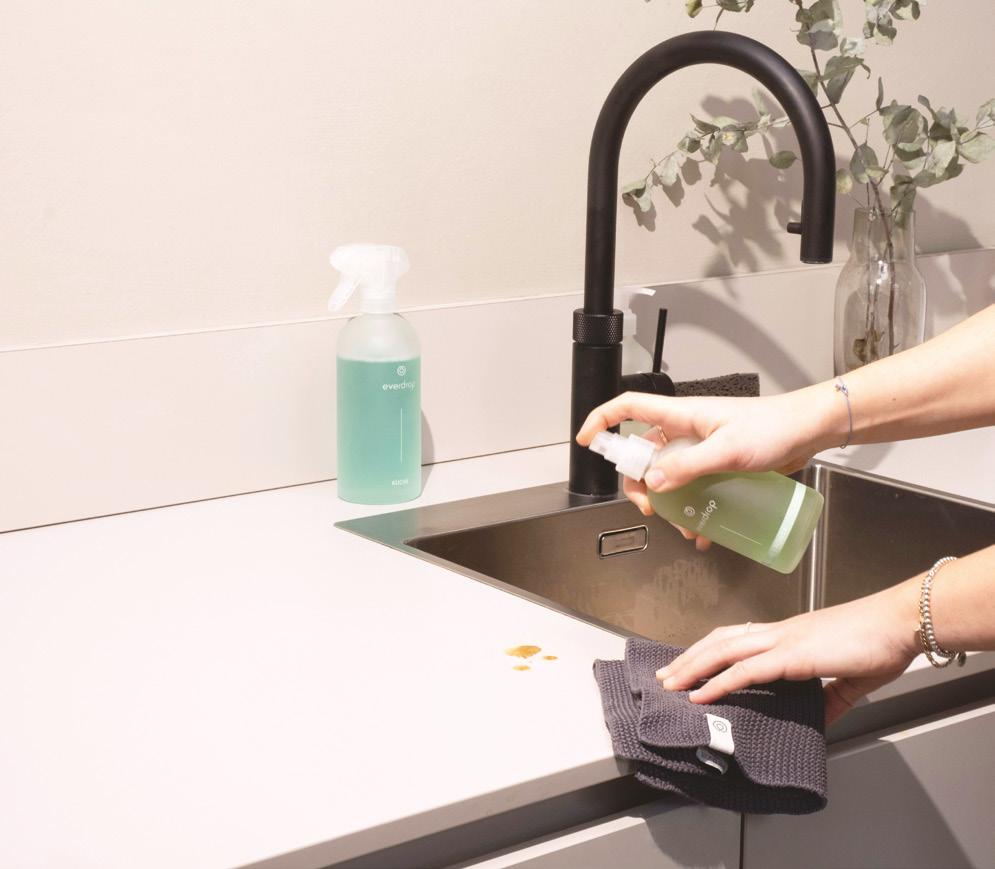
6 Invest in solutions:storage

Invest in storage solutions that help keep clutter out of sight. Use baskets, bins and shelves to organise toys, books, and other belongings. Consider multipurpose furniture with built-in storage to maximise space in smaller rooms.
7 Streamline cleaning supplies: Simplify your cleaning routine by streamlining your arsenal of cleaning supplies. Invest in multi-purpose cleaners and microfibre cloths that can tackle multiple surfaces with ease. Keep supplies easily accessible in a designated cleaning caddy to save time and effort.
8 Schedule maintenance:regular
Prevent dirt and grime from building up by scheduling regular maintenance tasks. Set aside time each month for deep cleaning tasks such as washing windows, scrubbing floors and cleaning appliances. By staying on top of maintenance, you can avoid the need for intensive spring cleaning in the future.
9 Don’t forget the outdoors: Spring cleaning isn’t just limited to the indoors. Take advantage of the milder weather to spruce up your
outdoor spaces. Sweep patios, clean outdoor furniture and tend to garden beds to create a welcoming outdoor oasis for the whole family to enjoy.
10 Practice self-care:
Lastly, don’t forget to take care of yourself. Schedule regular breaks, stay hydrated and enlist help from friends or family members when needed. Remember, a happy and healthy parent is better equipped to tackle the challenges of maintaining a tidy home.
With these spring cleaning tips in mind, you can achieve a clean and organised home while still enjoying precious moments with your family.

“In your baby’s first months, they may be happily carried for a large proportion of the day”
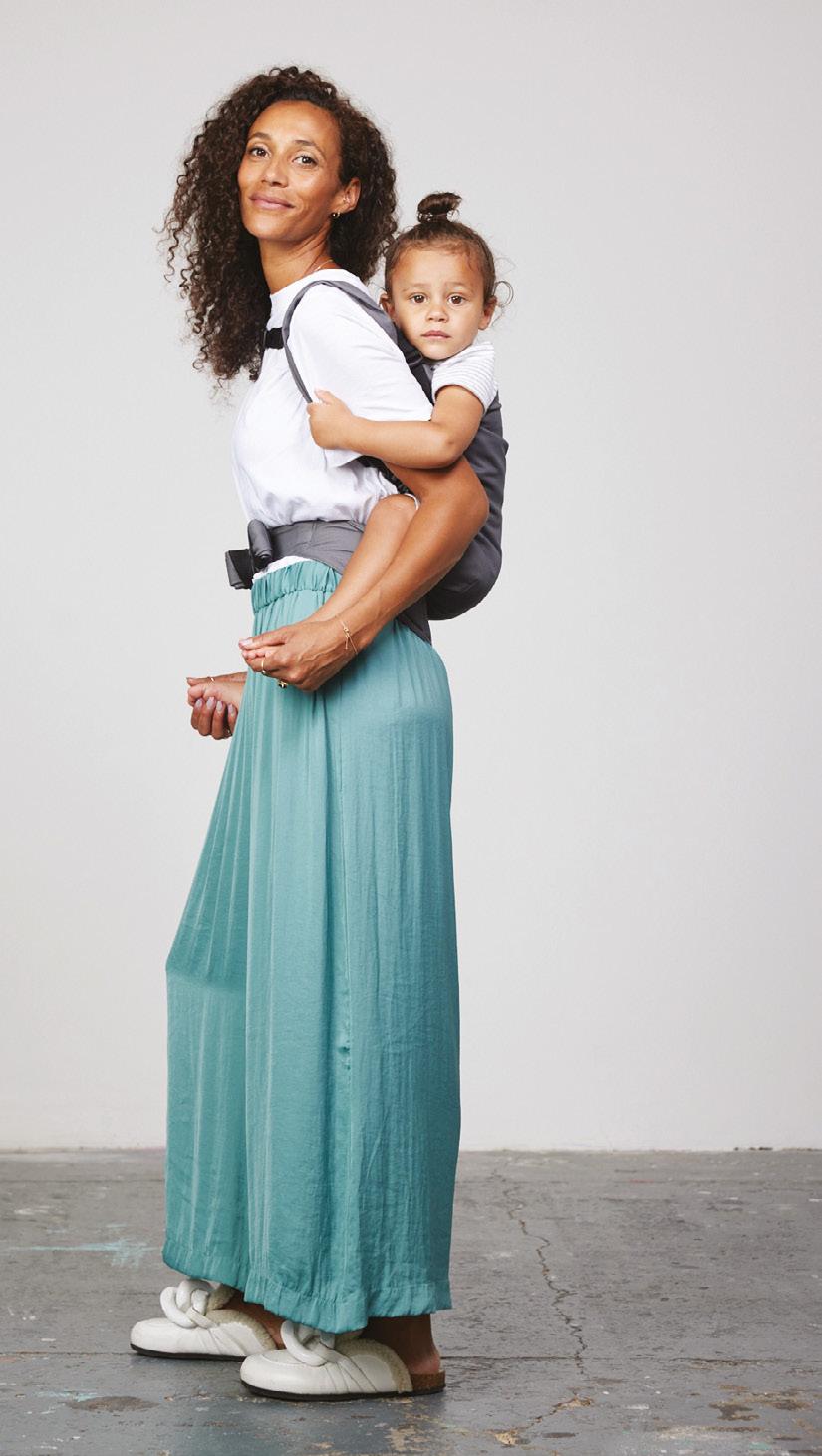
Hannah Wallace, a baby carrier expert, explains the benefits of “babywearing” for both parents and their babies –and toddlers.
What are the benefits of babywearing? Carrying your baby has huge benefits for all the family.
First up, you’ll get your hands back! It makes day-to-day life with a baby so much easier: from making (and actually drinking) cups of tea to getting around the supermarket or public transport.
Your baby will be comforted by being close to you and from the movement of your walking, breathing and heartbeat. Newborns in their ‘4th trimester’ who are still adjusting to life outside the womb often prefer to sleep on someone than in their cot. This is biologically appropriate, not a bad habit and will not last forever.
Wearing your baby can support mums’ postnatal recovery, gently improving their posture and core strength. Simply walking with your baby in a carrier is a brilliant way to improve your fitness, without any strenuous

postnatal exercise regimes. It’s great for babies’ physical development and gives many of the same benefits as tummy time. It’s also good for their cognitive and emotional development. Babywearing gets the hormone oxytocin flowing, encouraging parent-child bonding and can help ease symptoms of postnatal depression.
Just as there isn’t an upper limit on how many hours a day you can spend cuddling your baby, there’s no upper limit for how long you can spend carrying them – so long as you’re both comfortable. (This is very different to the upper limits for car seats, as in a car seat they’re not held upright with their airways fully protected like they are in a correctly adjusted sling).
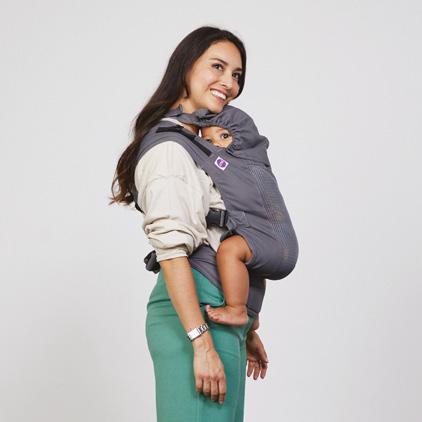
A baby wrap is a long piece of (usually stretchy) fabric. You tie it to your body, then pop your baby in and out as needed. They’re super comfy and perfect for the first few months. A bit like shoelaces, they’re really easy to use after a few goes. Baby carriers are more structured; they clip on using buckles, offer a range of carrying positions and are often longer-lasting than a stretchy wrap. ‘Sling’ is a generic term that covers both wraps and carriers.
Yes. Always read the instructions and make sure your baby is carried:
HIGH: enough on your chest that you’re able to easily kiss the top of their head – without craning your neck forwards. Be sure to check on (and kiss!) your baby regularly.
TIGHT: around you and your baby, to help ensure that your baby cannot slump down inside the carrier, so their airways are protected.
IN SIGHT: always ensure you can see your baby’s face and check on them regularly.
In your baby’s first months, they may be happily carried for a large proportion of the day. As they get older and become more alert and awake for longer periods, they’re going to be more keen to get down, explore on the floor, play and come up to you when they’re tired and ready for a snuggle. Toddlers are usually happy to be carried when very tired, teething or poorly!
“Your baby will be comforted by being close to you”

If your carrier fits you and your baby and is adjusted correctly, it should NEVER:
1. Make your back, shoulders or neck feel sore or painful
2. Cause you to lean in any direction
3. Make you want to rip it off after 20 minutes
A sling should always mimic how you carry your baby in your arms: snug and high up on your chest so they’re close enough to kiss. Tightening your carrier (usually) or loosening it (very occasionally sometimes) just a few centimetres here and there can make a vast difference. As can positioning the waistband higher up on your body. If you need help getting comfy in your carrier, you can book a one-to-one video consultation with the experts at Wear My Baby (wearmybaby.co.uk)
Yes, but take it very slowly and listen to your body. A baby wrap or a carrier without a thick, structured waistband are the best options. They’ll help keep your baby’s weight away from your lower abdomen. If possible, enlist the help of other family members or friends to do most of the carrying for the first 4-8 weeks.
It’s like asking what’s the best brand of jeans or trainers: different ones suit different people! It’s about how well it suits your body, your baby’s age and stage, your budget –and what you like the look of.
Likes shoes, you’ll use different slings for different ages and activities. Most families will, ideally have three slings: a soft newborn wrap of carrier for the first few months; a sturdy, multi-position carrier for long days out with bigger babies; and a light carrier for quick up and downs, and travel, with toddlers. So there is no one ‘perfect carrier.’ If you have a sling library or babywearing consultant near you, be sure to book in and get some advice. Trying before you buy is always the best option. If not, you can book in for a video consultation at Wear My Baby. Their expert term will recommend slings for your family, based on your body shape, your personal preferences, your budget and your lifestyle.

Best twin carrier:
MINIMONKEY TWIN CARRIER
Want to carry two babies at once? You need a Minimonkey Twin Carrier! Although a stretchy wrap is great for carrying newborn twins, this clever carrier is ideal from 6-8 weeks (adjusted) to around 6-12 months (max weight of 12kg per baby). Perfect for around the house and short trips out, you can position smaller babies on your front, or older babies on your hips. (RRP: £145 from http://tiny.cc/y18jxz)
Essentially a rucksack with two big compartments –one for your stuff and one for your baby! A superb back carrier for babies from 6 months to 2 years+ (max weight 15kg/ 33lbs), it’s perfect for long walks when you have lots to carry. Your child sits high on your back with a great view – but not so high that you feel unbalanced.
Unlike most big heavy, framed hiking carriers, the Traveller Little Life S4 Child Carrier truly fits mums and dads comfortably. (RRP: £159 from https://shorturl. at/pKOW2)


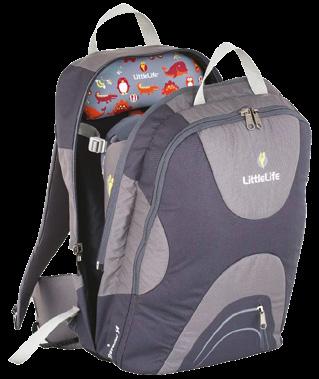
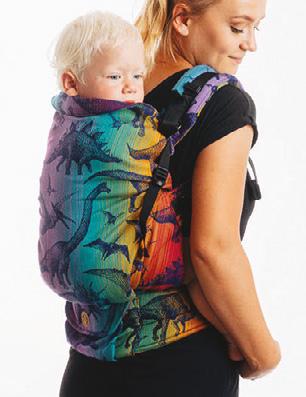
The Lenny Lamb Preschool Carrier is the most adjustable toddler carrier on the market. It’s comfy for all parents and for toddlers aged 15 months to at least 7 years – with an impressive upper weight limit of 30kg (66lbs)! It’s marshmallowy-soft, yet supportive enough to wear for hours at a time, plus it’s ideal for buggy-free days and a total game-changer for older kids with additional needs. (RRP: £129 from http://tiny.cc/n18jxz)
IZMI BREEZE TODDLER CARRIERIf you want an ultralightweight, just-in-case carrier for when little legs get tired, you won’t get more compact – and great value – than the Izmi Breeze Toddler Carrier, perfect from around 9 months to 3 years. With super light soft mesh fabric, it’s ideal for hot days and travelling. Packs down super small to shove in a bag. Genius. Also available in a baby-size version (0-12m). (RRP: £95 from http://tiny.cc/s18jxz)
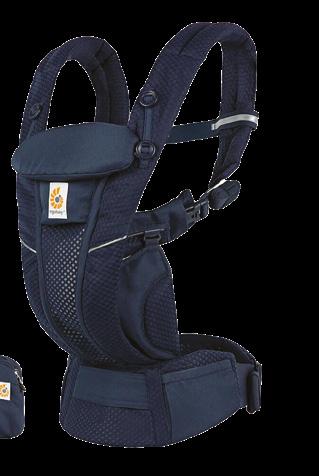
The Ergobaby Omni Breeze is a brilliant multi-position carrier and the most clever and adjustable carrier in the Ergobaby range. While not as light and cool as the name suggests, its thick padding and ergonomic design makes it super supportive for long days, up to around 18 months+. If you want your baby to be able to face forwards (from 4-12m), it’s a great option. The built-in hood and storage pocket are very handy. (RRP: £184.90 from http://tiny.cc/g18jxz)
Complicated, bulky baby carriers can be a headache. So, Izmi designed a super easy, compact baby carrier that packs down tiny and is perfect for newborns. Adjustable from 0-12 months, this soft little baby carrier is brilliant from day one –even with smaller newborns from as small as 2.3kg/5lbs. No faff,
no bulky padding. It’s perfect for wearing at home, as well as outdoors, as you can actually sit down comfortably in it.
Both mums and dads love it, and it fits mums from a UK size 6 to 26. It ergonomically adjusts to grow with your baby and is the perfect carrier to use after a c-section thanks to its unpadded waistband. So if you’re looking for something between a soft wrap and a more structured carrier, this is the perfect in-between carrier. (RRP: £75 from http://tiny.cc/718jxz)

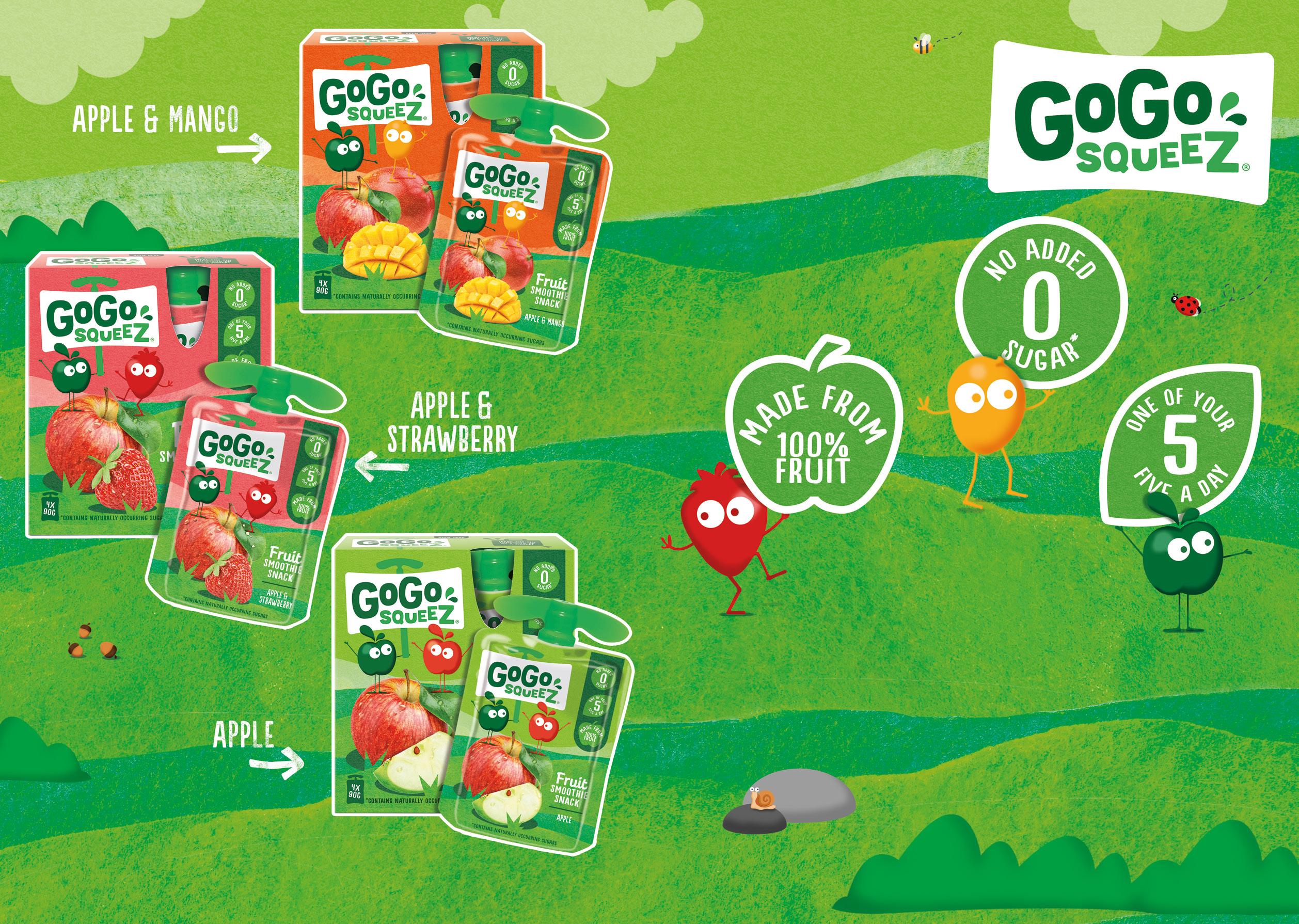

The Positive Birth Company looks at why mums experience pressure to have the perfect birth and how it’s impacting their mental health.
We recently surveyed The Positive Birth Company community and found that 60% of expectant parents felt under pressure to have the ‘perfect’ birth and 53% of those stated that this pressure had impacted their mental health. The survey found that the pressure to have a ‘perfect’ birth came from a number of different places; from social media, to friends and family and even medical professionals, such as midwives and Doctors. There was also an acknowledgment from some that they put this pressure on themselves.
After investigating further to understand what people meant by a ‘perfect’ birth, it became clear there was no holy grail; approximately half the people surveyed reported feeling they should avoid pain relief in order to achieve a ‘perfect’ birth, whereas the other half reported the opposite and felt pressured to accept pain relief. Others shared that they felt they should give birth in a certain setting to achieve a ‘perfect’ birth, but again, the settings varied.
What we were able to conclude was that there is no such thing as a perfect birth, or at least not one type of birth that is perfect for all; your idea of a perfect birth might be completely different to someone else’s. What we do know is that birth is unpredictable, so having a fixed idea of how things will be can be very detrimental and lead to immense disappointment if things don’t pan out as hoped. This is something we desperately want to address and change.
Becoming a parent is tough enough without any added pressure, especially
Top tip You need to be able to advocate for yourself, so that you receive personalised care, not just a conveyor belt of one-size-fitsall care


pressure that can impact your mental health. That’s why we are encouraging people to focus on birth being a positive experience, rather than a perfect one…
As many Family First readers can attest, having a baby is a really big deal; you will remember the day you gave birth for the rest of your life! And your experience of birth really matters, because it has been found to have a significant impact on your mental health and wellbeing during the postpartum period. That said, the idea of a ‘perfect birth’ is a myth, an unhelpful one and


damaging one! (Repeat: There is no such thing as a perfect birth). So here is our message to youwhether you’re preparing for your first baby or your fourth - try and release any ingrained ideas that there is a right way or wrong way to give birth and instead focus on making the experience of giving birth as positive as possible.
There are lots of things you can do from transforming your birth space into a calm and relaxing environment to getting clued up about the options you have to increase your comfort.
For your FREE positive birth training plan, email ‘FAMILY FIRST’ to hello@thepositivebirth company.com
“Positive birth experiences come from a feeling of being in control, being listened to and being respected”

A positive birth is defined by how you felt during the experience, rather than what happened. This usually means you felt calm and in control, were listened to, respected and supported in your choices. At The Positive Birth Company we equip people with knowledge and practical tools so they are empowered to advocate for themselves. We believe maternity care should be personalised because when it comes to birth, there is no one-size-fits-all!
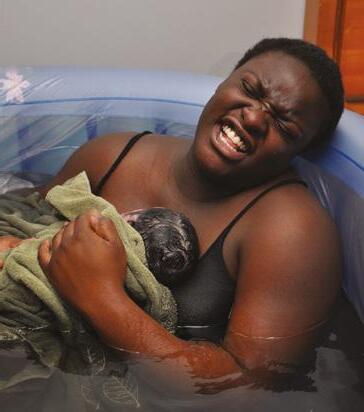
Think of preparing for birth like training for a marathon… You wouldn’t just rock up at the start line having done no practice runs! Now, I’m not going to get you doing hill sprints(!), but we do recommend you familiarise yourself with your hypnobirthing toolkit in pregnancy, so you are ready for the big day!
The good news is, that when it comes to preparing for birth, unlike running a marathon, it’s never too late to get started! Get your FREE positive birth training plan today by emailing ‘FAMILY FIRST’ to hello@ thepositivebirthcompany. com.
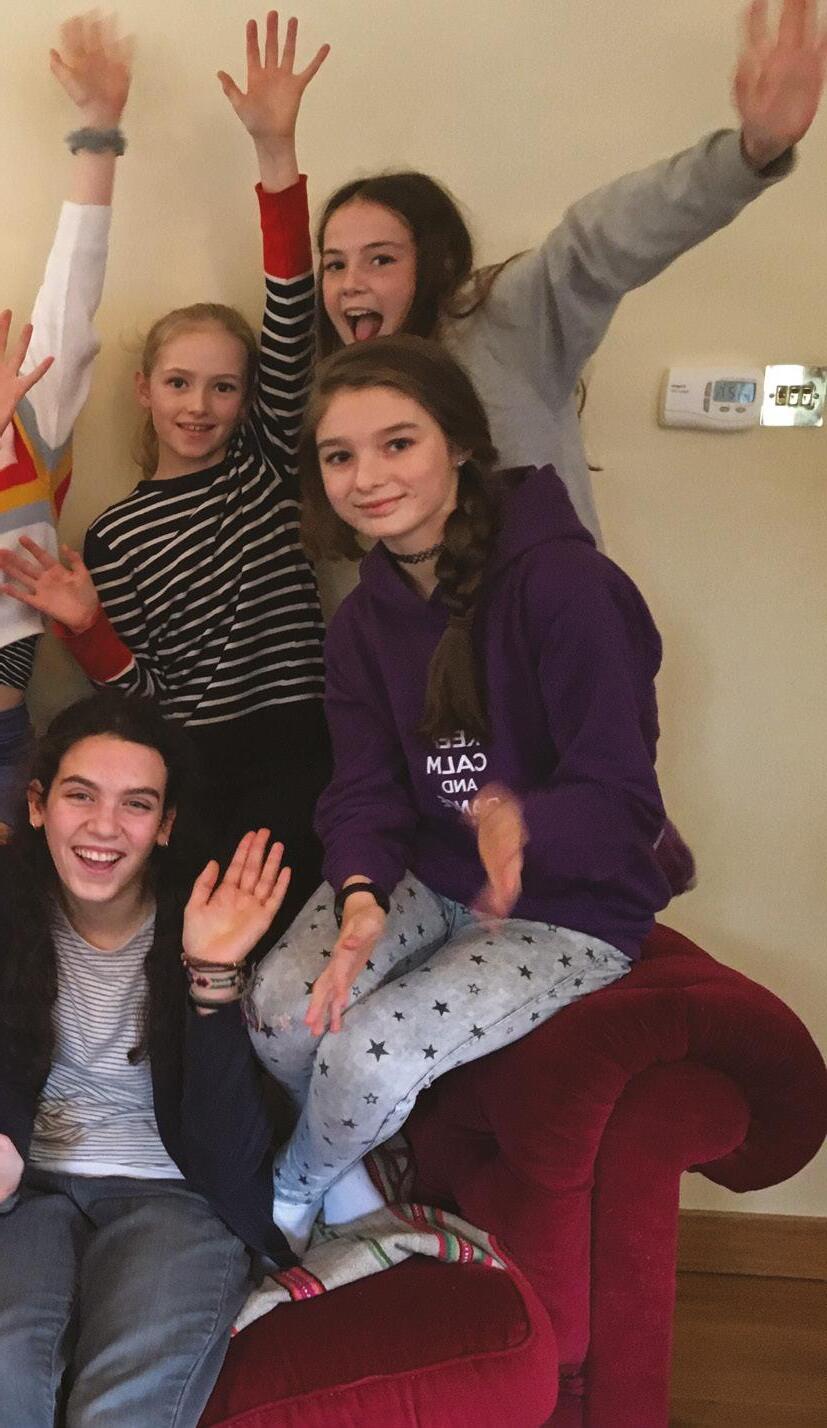
inspiration for how we can all play our part in creating the change we want to see in our world.

Years ago, when I was pregnant for the first time, I found myself weeping at every news broadcast, raging against this world I was bringing a new life into and feeling depressed by it all. So, I stopped engaging. It was too painful and I felt powerless. Then I gave birth to a girl and my head snapped up. “I must change the world for this child – growing up cannot be for her how it was for me.” So, I sought out meaningful work and Rites for Girls was born, with the mission to change the world – one girl at a time. What distresses you about the way the world is at the moment? Could some small part of your life be devoted to changing this? I believe we can all change the

Here are seven ways to be the change you want to see:
1 Play your part – take care of your corner of the world. We can all make a difference to someone or something. Think of something small and simple that you could do this week. And smile at someone today.
5 Cushion yourself from paralysing overwhelm –limit your exposure to the news. Dream instead. Everything good started with somebody’s dream. Dreaming is as serious a pastime as keeping up with current affairs.
“I must change the world for this child –growing up cannot be for her how it was for me”
“Change doesn’t have to be hard, it can be joy-filled too”
2 Want things to be different? Do something different. If we all carry on as we are, nothing will change. What can you do differently that would make a difference? Open the window right now and breathe deeply for a full minute while pondering what you could do differently…
3 Don’t underestimate the power of a small change. Think ripples from a small pebble dropped into a great lake or the domino effect. Every small improvement is a stepping stone into a better future.
4 What comes naturally to you? Do it more. Play to your strengths and bring to this life the best of what you can offer. Change doesn’t have to be hard, it can be joy-filled too.
6 Connect with others – be a part of something bigger. Not only will you be able to do more than you can alone, but it will give you a sense of belonging. Who’s already doing something that’s making the changes you want to see?

7 Play small, feel powerless. Step up, feel empowered. It is our light, not our darkness that most frightens us. Your opinions, your voice, and what you care about matters. Your holding back doesn’t serve anyone and feels horrible. Daring to show up feels good.
As adults, we can take care of the future by giving our attention to the next generation. Take notice of the younger ones around you, spare them a moment of your time. Most adults can remember someone who did something or said something to them as a child that made a real difference. Be that adult in at least one child or young person’s life today.
With Children’s Mental Health Week, which was held in February, highlighting unprecedented mental health issues among young people, at Rites for Girls, we have extended our outreach and invite women across Britain to facilitate our expanding programmes.
Together groups (GJT) offer a year of in-person monthly support for preteen girls, aged 10-12 (and their mothers via mothers’ circles), supporting their transition from primary to secondary school, as they practice being true to themselves, learn about puberty, share their hopes and fears, and help each other into their teens.

We have seen a dramatic rise in self-harming, eating disorders, panic attacks and school-refusing among girls at increasingly young ages since the onset of the pandemic, and yet there is a concerning lack of effective government support and school resources available in Britain to support these young people.
The need for solutions to this crisis has never been more urgent. Thanks to funding from the National Lottery Community Fund awarded in recognition of the effectiveness of our work generating high levels of mental well-being for girls in communities across the country, we are now able to offer fully-funded bursary places on our flagship Girls Journeying Together programmes to girls with otherwise limited access.
“Rites for Girls’ mission is to change the world one girl at a time, by making the lives of girls safer, kinder and better supported”
Rites for Girls’ mission is to change the world one girl at a time, by making the lives of girls safer, kinder and better supported. Since its inception in 2011, our CIC has welcomed more than 1,000 girls aged eight-18yrs to its programmes and feedback from the girls is overwhelmingly positive, with responses to a recent survey showing that 97% feel better about the future; 96% saying they now know how to take better care of themselves and 98% would recommend the programme to other girls.
With a focus on enhancing the mental wellbeing of girls preventatively, our Girls Journeying
With funding now in place to offer hundreds of fully-funded bursary places over the next three years, we are rolling out 10 new programmes across the UK in March and April 2024, with more scheduled throughout the year, enabling many more girls to access the programme. More information here: ritesforgirls.com/girlsjourneying-together/ As our programmes expand exponentially, we are calling for more women to train as facilitators to support our budding movement for social change. Beginning in June 2024, our next two-year Facilitator Training (ritesforgirls.com/ facilitator-training/) is an extraordinary opportunity to bring meaning and purpose into your life as you learn to support girls to journey safely through adolescence and emerge as strong, capable young women, equipped to remain true to themselves and to express themselves freely in the face of the many pressures confronting them from peers, social media, cyber bullying, and society at large.
Kim McCabe is the founder-director of Rites for Girls (ritesforgirls.com), an educational CIC working to prevent and alleviate the suffering and distress of preteen and teenage girls. The CIC trains and supports women to facilitate its life-changing programmes for girls and women in their communities.
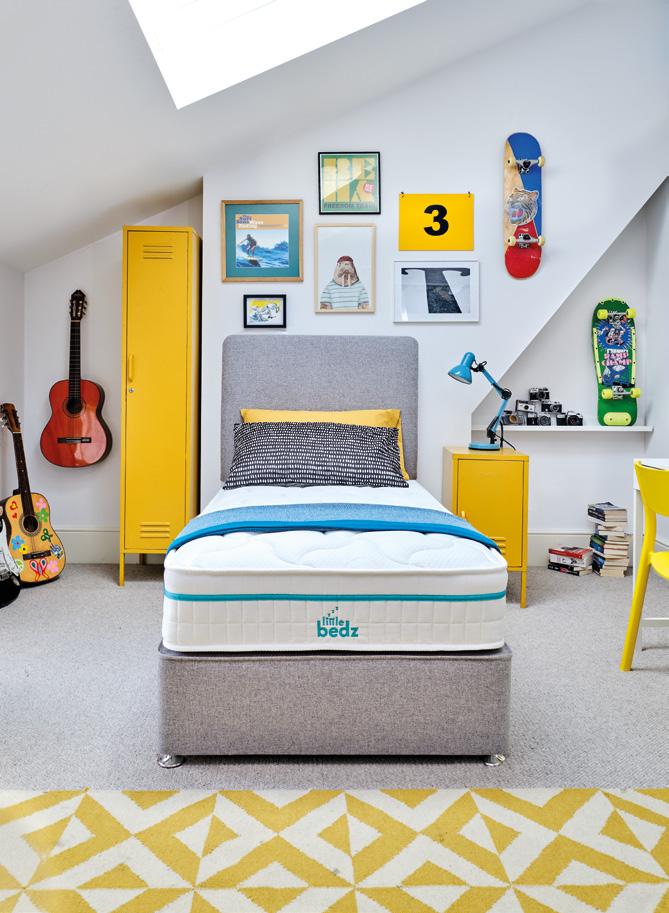
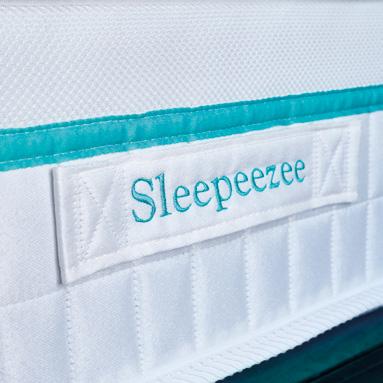
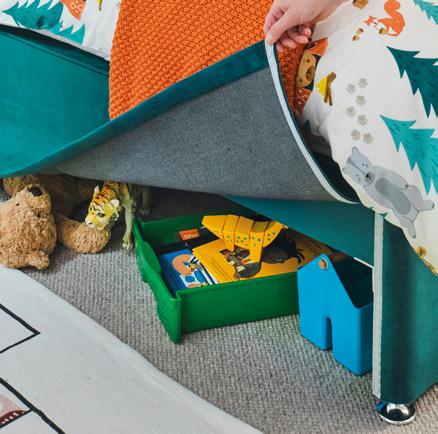
Primary schools are being urged to sign up for a Year 6 reading fluency trial. We find out what is involved and how your school can take part.
Primary schools throughout England are being invited to take part in a funded trial to assess the impact of reading fluency support on reading comprehension and SATs outcomes for struggling Year 6 students. 180 schools will take part in the trial in the 2024/25 autumn and spring terms to evaluate the impact of HFL Education’s KS2 Reading Fluency Project on pupils not currently on track to meet reading expectations by the end of KS2.
“Over 2,200 pupils have taken part in the reading programme”
The trial has been funded by the Education Endowment Foundation (EEF) through the Department for Education’s Accelerator Fund, which aims to expand the use of evidencebased programmes in schools across England.
Penny Slater, education development and partnership lead at HFL Education (formerly
Herts for Learning), said: “We know that ensuring all children can read with skill, confidence and enjoyment matters to teachers. When we enable our children to read well, we give them the opportunity to learn more about their own lives and the lives of others – as well as open doors to unlimited knowledge, joy and wonder.
“Our Reading Fluency Project has shown promise in improving reading skills for students working below agerelated expectations. Through this EEF-funded trial, we can gather further insights and knowledge about reading fluency which can be used to better support schools to achieve improved outcomes for all pupils.”
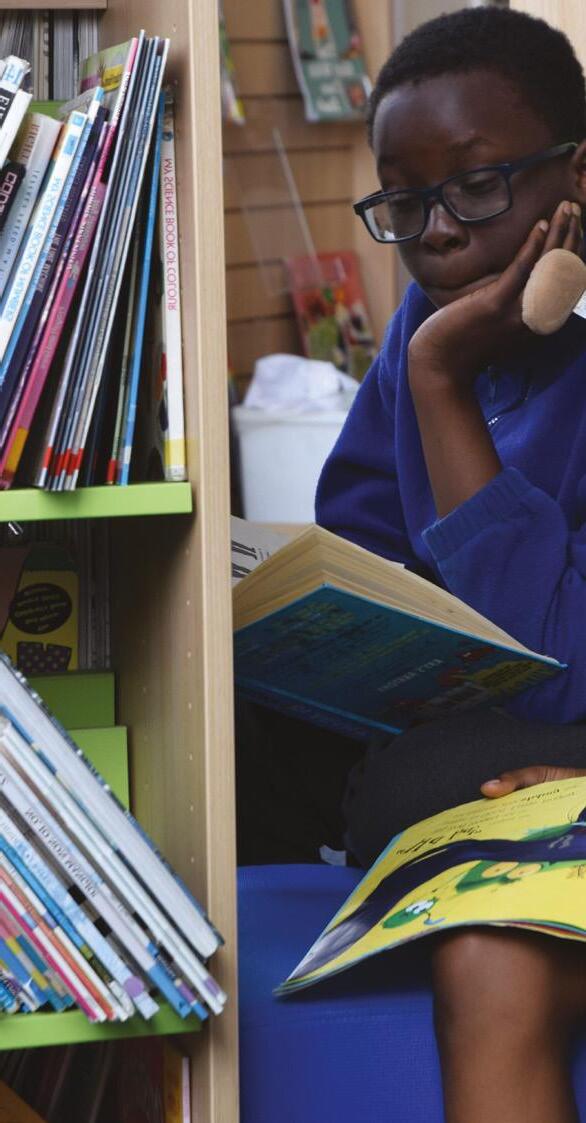
HFL Education’s KS2 Reading Fluency Project is a targeted intervention designed to improve reading comprehension for pupils in upper Key Stage 2 through techniques such as prosody (the

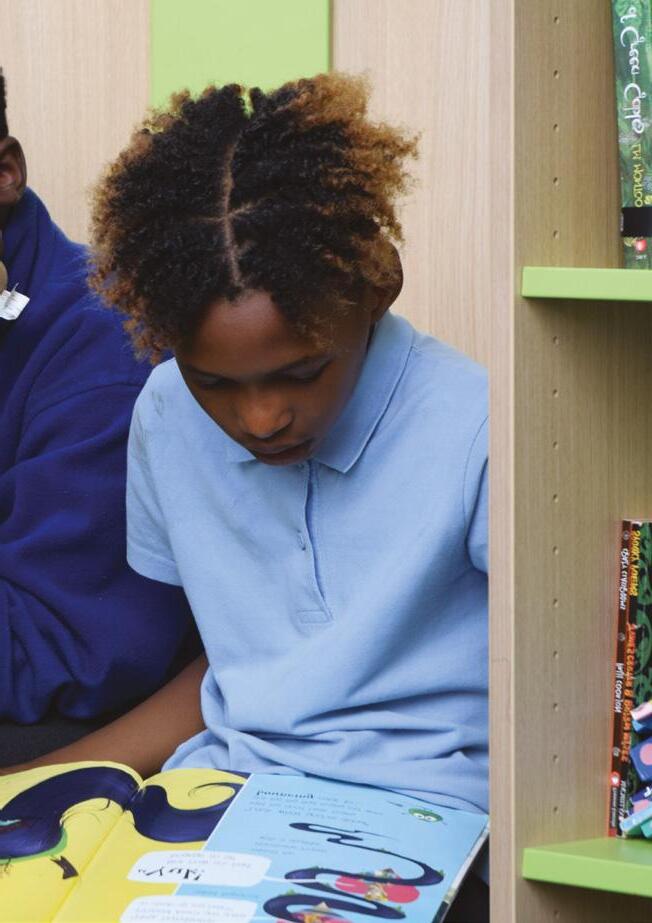

“Our Reading Fluency Project has shown promise in improving reading skills for students working below age-related expectations”
patterns and sounds used in the English language), echo reading (where the teacher reads first and the child repeats), and text marking. Over 2,200 pupils have taken part in the reading programme to date.
HFL Education’s KS2 Reading Fluency Project aims to support effective fluency instruction through the considered implementation of six core strategies:
“Ensuring all children can read with skill, confidence and enjoyment matters to teachers”
Modelled expert prosody
Echo reading
Repeated reading
Text marking
Performance read
Modelling comprehension
Speaking about their involvement in the project, a spokesperson from EEF commented: “We identified developing reading fluency as a high-impact approach in our KS2 Literacy Guidance Report, however to date, EEF has not evaluated many programmes that specifically focus on improving reading fluency. The approaches to the teaching of fluency included within this project align with the evidence base on how to teach oral reading fluency and provides schools with a clear and structured approach.
“Given the importance of reading comprehension and the potential of HFL’s KS2 Reading Fluency Project, we have commissioned this study to understand the impact of this approach on pupils at scale.”
The EEF-funded reading fluency trial will focus on the impact on between six and eight Year 6 pupils per school, and applications are now open for schools interested in taking part. Verian has been appointed as the evaluation team for this study, which will be conducted through a Randomised Control Trial (RCT) to give an accurate measure of the impact of the project.
Applications are now open for the Reading Fluency Project trial, with places allocated on a first-come, first-served basis. For more information or to sign up, scan the QR code, visit the trial information page on the HFL website: hfleducation.org or email: readingfluency.eef@hfleducation.org
HFL Education (formerly Herts for Learning) is a not-for-profit, schools-owned business providing a range of support services and resources for schools, settings and trusts to help them achieve long-term, successful outcomes for their children. Set up in 2013 as a social enterprise, HFL Education has, to date, reinvested over £1.2m back into the schools that own the business.






































































































We find out why your family’s morning routine can have a huge impact on family stress levels throughout the day.
New research has revealed the impact that morning habits can have on families’ stress levels during the school run and beyond. The survey among parents found that just 30% of families in the UK take time to sit down to eat breakfast together regularly. Yet, there are huge benefits for those who start their day in this way. In fact, children who eat breakfast with their families are 17% more likely to enjoy the morning routine than those who eat their breakfast alone, on the go, at breakfast clubs, or skip the meal altogether. Parents are also 15% more likely to enjoy their morning if it is family-orientated.
“Children who eat breakfast with their families are 17% more likely to enjoy the morning routine”
Eating breakfast together can further have a positive impact on the whole family’s mental health. The research, carried out by name-label manufacturer mynametags.com, found that families who eat their morning meal around the table together are 7% less likely to experience anxiety when they wake up.
“Research reveals that our morning routine can have a significant impact on our outlook for the rest of the day”

Plus, children who eat breakfast with their family are almost three times less likely to find mornings stressful than children who don’t have time for breakfast at all.
The way families travel to school can also impact mental health, with parents who walk or cycle with their children most likely to view the journey as a valuable opportunity to spend quality time with their children.
“A simple thing such as making time to sit down as a family for a meal can significantly reduce anxiety, stress and worry”
around making parents’ lives easier, so we were interested to explore the pressures facing modern families. As a parent myself, I know first-hand how the school run can impact family dynamics, both positively and negatively.
“Our research reveals that our morning routine can have a significant impact on our outlook for the rest of the day. A simple thing such as making time to sit down as a family for a meal can significantly reduce anxiety, stress, and worry, whilst an active journey to school can offer a great opportunity for families to spend time together and enjoy some exercise, setting everyone up well for the day.”
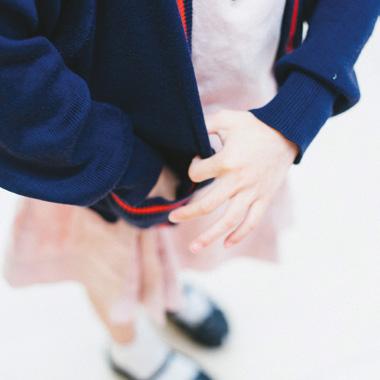
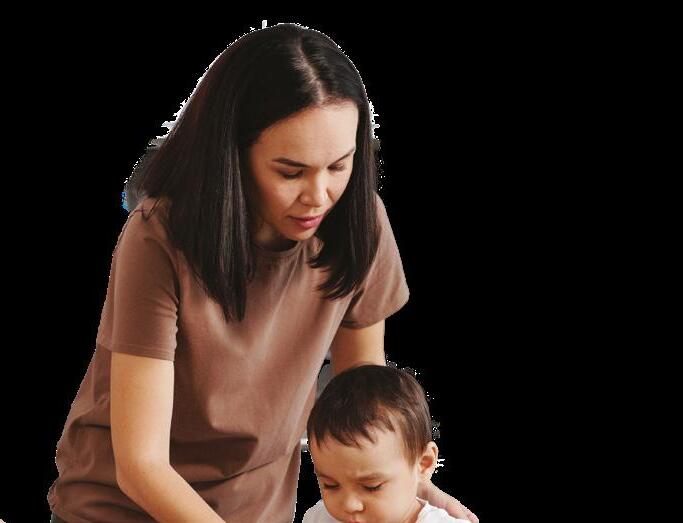
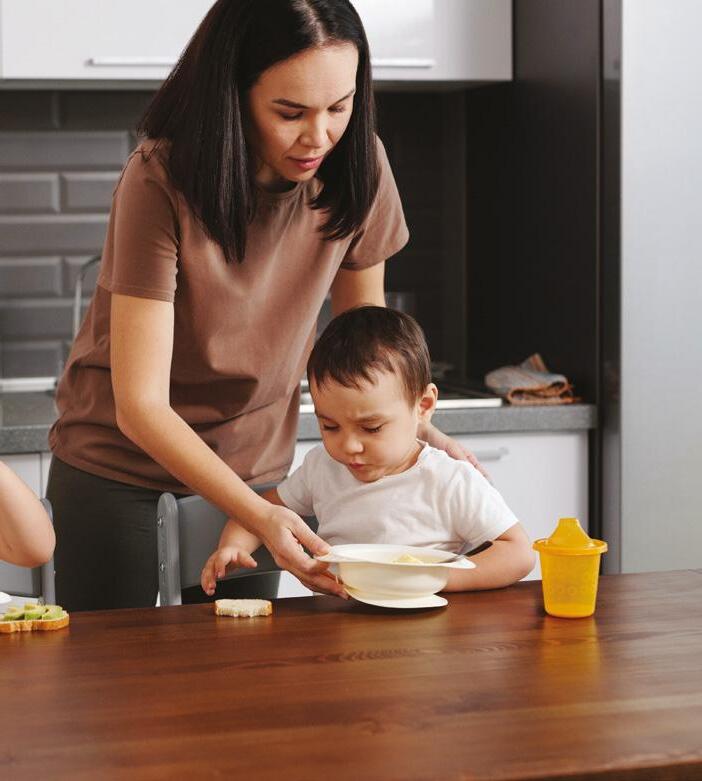
Not only this, but parents who cycle to school with their children are most likely to report waking up feeling excited about their day and the least likely to be anxious in the mornings. These benefits can be felt by the whole family, with parents who cycle also most likely to believe that their children enjoy the journey to school the most.
By contrast, those who use public transport or drive are 6% more stressed and 15% more likely to argue. It’s no surprise, therefore, that children who don’t have an active start to the morning are 14% more likely to go to school upset.
Lars B. Andersen, managing director of mynametags.com, comments: “Our work centres
The research was conducted by Observant on behalf of mynametags.com in June 2023, surveying 2,000 parents in the UK. mynametags.com is a UK manufacturer of easy-toapply sticker and iron-on name tags and has been reducing parents’ guilt about losing items since it was founded
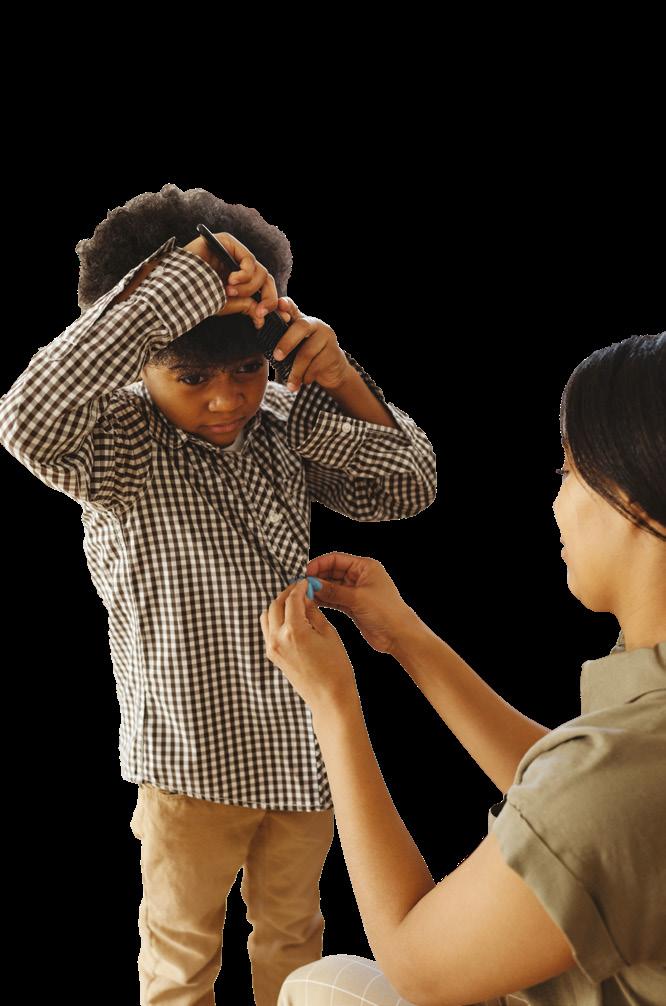
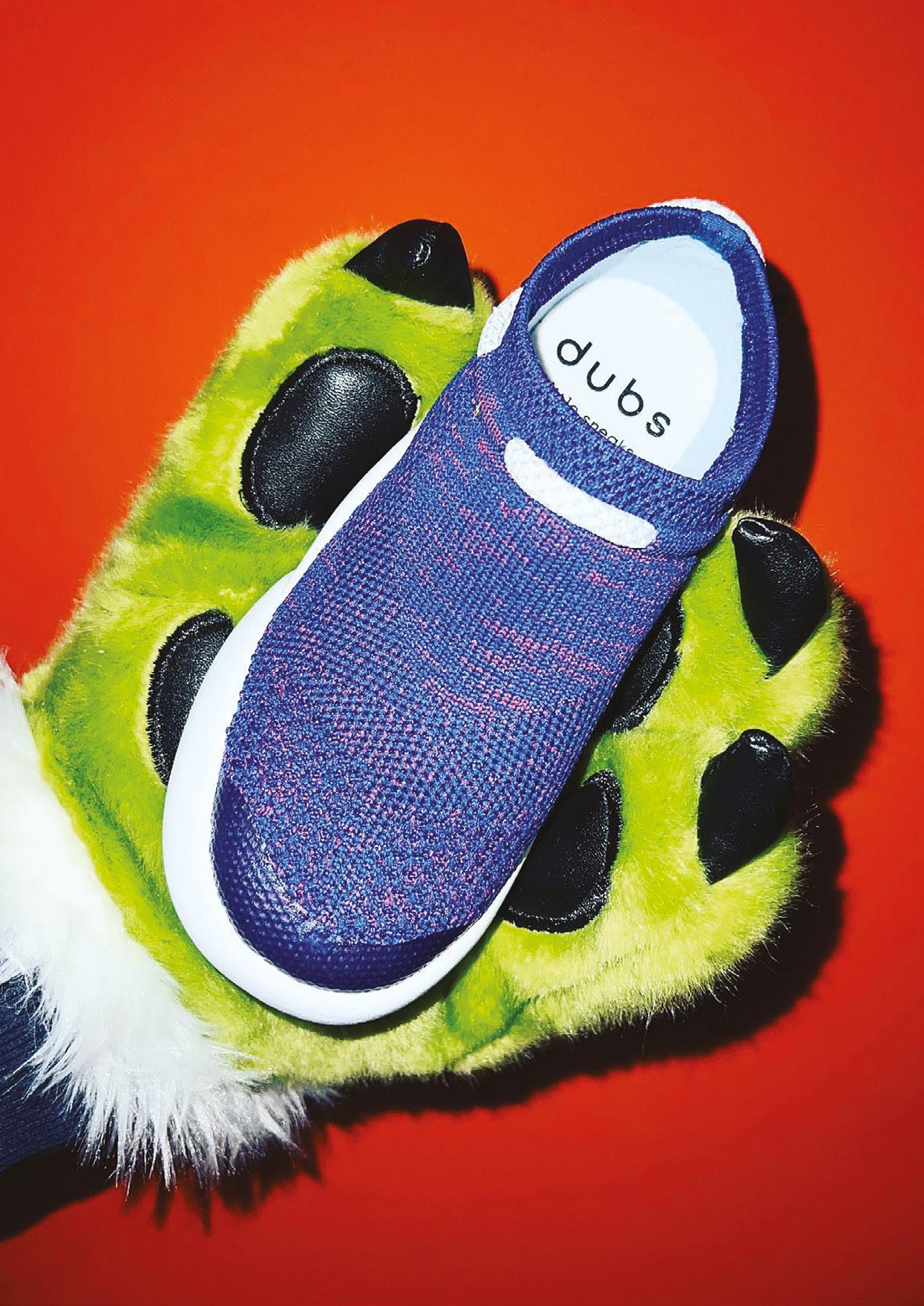
“The shoes are designed to look awesome and stylish, but also withstand heavy-duty wear”
Georgina Probert speaks with Stuart Davis, cofounder of ethical sneaker company Dubs Universe, about all things trainers, parenting and saving the planet one shoe at a time!
While many people started a new hobby during lockdown, you launched a business! With no previous experience in footwear, what made you decide to create Dubs Universe?
Stuart: I certainly would have less grey hair if I had learned how to make sourdough! But I have finally found a job that I love. My career was as a creative producer in the advertising industry. So, I have that creative streak in me and I love DIY and repairing things, too.
“A sustainable mindset constantly influences our design process”
When the lockdown hit, I lost my job. Luckily, my wife Kirsty was still working, so my bonkers, supercharged little girl Leila (who was 2.5
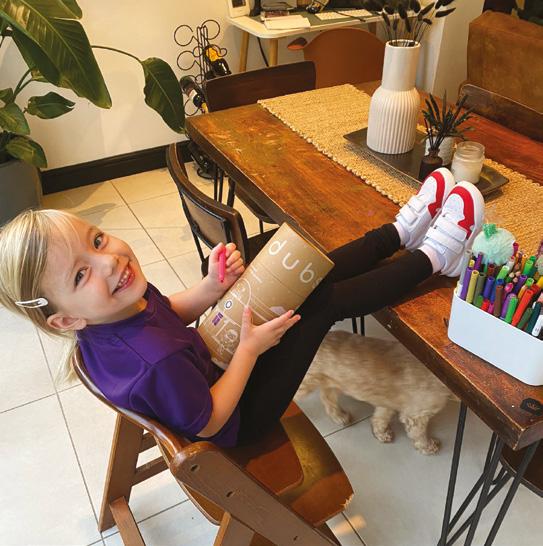
years old at the time) and I were stuck together. I spent my lockdown days trying my hardest to keep this ball of energy entertained. In and amongst all my crazy arts and crafts ideas, one of them was to turn her outgrown shoes into flower pots. The fact that Leila’s feet grew so quickly got me thinking about all the waste that children’s shoes cause.

My co-founder and good friend Gary is a graphic designer and, for sanity, we used to catch up on Zoom once a week. I happened to moan about how Leila had grown out of another pair of perfectly good shoes that she had only worn twice. He understood this all too well. He knew that comfort, looks and sustainability had to go hand-in-hand, but the amount of waste was out of
So, we set ourselves a rather ambitious challenge: “How do we make the immortal sneaker?”
Mercifully, Leila was still napping at lunchtime, so I used those 37 minutes to research, learn, re-learn and speak to everyone and anyone who had knowledge in shoemaking and sustainability. And eventually, Dubs Universe was born and we began to come up with answers to that question!
Did your daughter get involved in the design and testing of the trainers? Was her feedback helpful?
Stuart: Errr, yes. Caveat: everything I mention below is said with love! Leila is our chief wear-tester. I knew that if we made a pair of shoes that could withstand her energy levels, then we would have made a good product.
I aspired to create a pair of kids’ sneakers that adults would love. A pair I could wear with pride – a design that transcends gender boundaries. Drawing inspiration from classic brands, iconic silhouettes of the past with intricately woven-in modern elements of design excellence. Designs that pay homage to timeless classics, but also seamlessly embrace contemporary style. Nope. Leila and her crew wanted sparkles – lots of them. And a bunch of diamantés down the side.
I made a rod for my own back. On the one hand, I had an army of wear-testers and design consultants, eager to give their opinion… for free. On the other hand, I had some of the most brutal and
cutting feedback I have ever received in my career. Kids are so honest and unfiltered. Their feedback was worse than some of the art directors I used to work with: “Bit boring Dad”, “I prefer these” (pointing to another brand), “Tiger (Leila’s most treasured cuddly) does not like the rubber bit”. Plus, they also went on strike. More than once.
But, in the end, we’ve created designs that look awesome and, more importantly, are fitted for kids’ feet and are super comfortable. So it was all worth it. Plus, I can legitimately say that our shoes are designed by kids for kids. And maybe, one day you might see a pair with a teeny tiny bit of sparkle in them.
We love that your shoes are made from recycled plastic bottles, fly-knit uppers and sugarcane. How did you go about choosing sustainable materials that can be made into trainers?
Stuart: Lots and lots of research and testing. We looked at mushroom leather, plant leather, apple skin leather, and grape leather. However, the deeper we researched, the clearer it became that affordability was a significant hurdle. We just couldn’t afford some of these options.
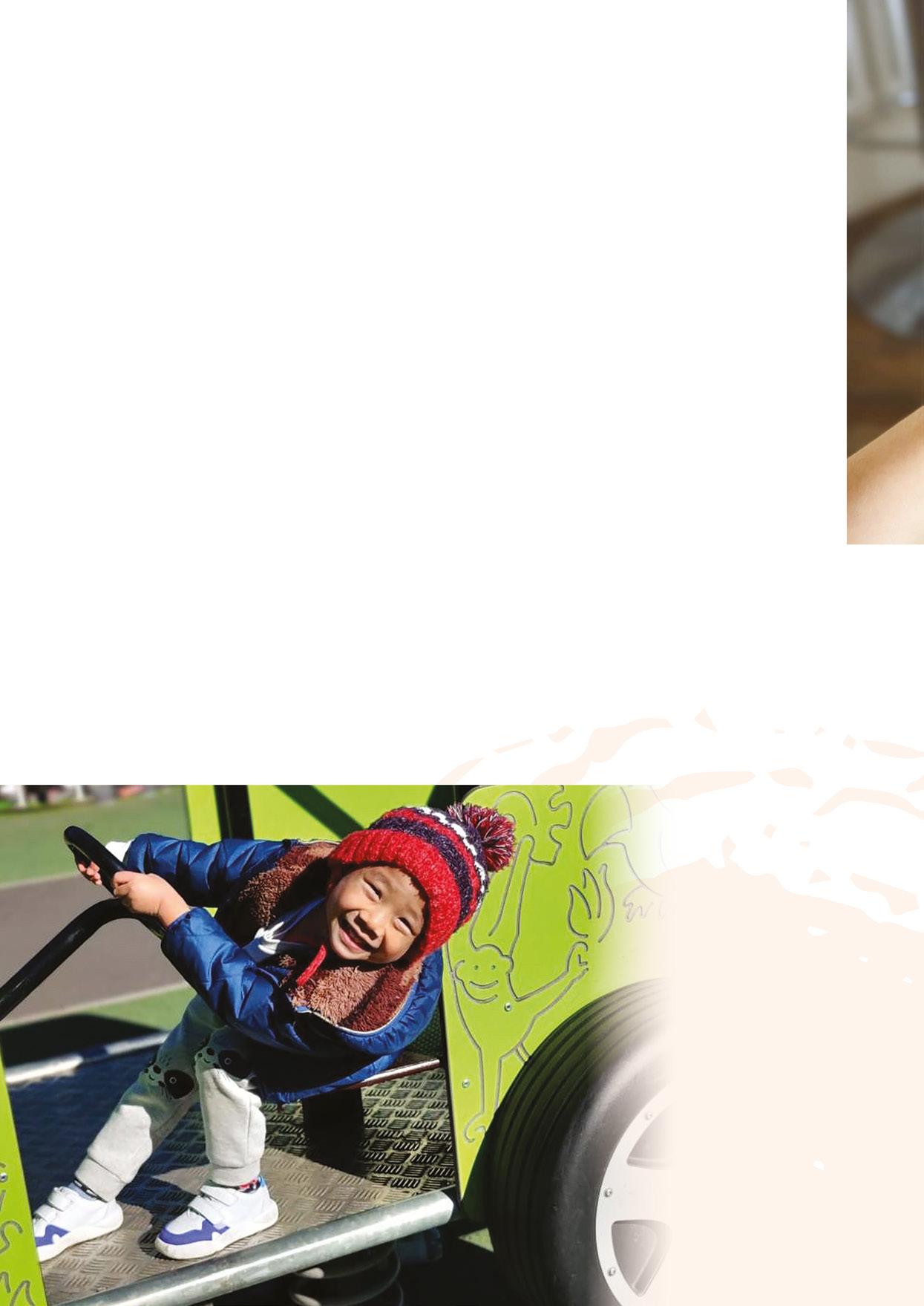
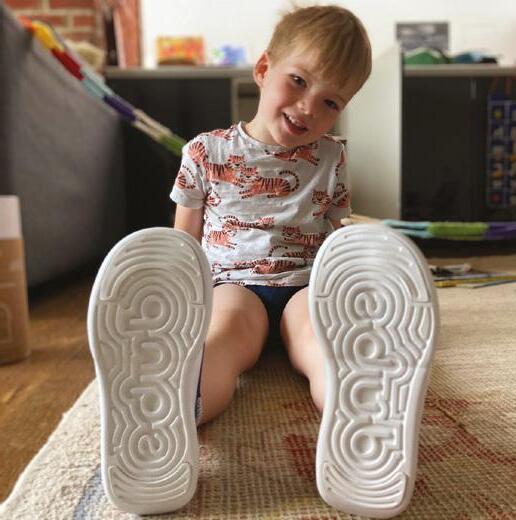
Furthermore, many seemingly viable materials revealed hidden complexities, which upon closer inspection were often laden with chemicals.
We also had to consider the fact that using planet-friendly materials is just the initial phase of our circular journey. We have grand plans for the future. We want to be able to recall, refurb and resell our products, ensuring they stay on kids’ feet and out of landfill for longer. A sustainable mindset constantly influences our design process, where we consider the shoes’ endof-life, emphasising the need for materials that are easily cleaned and refurbished.
Eventually, sugarcane emerged as the ideal material for our soles: tough, durable, flexible and renewable, it even removes carbon as it grows. And plastic bottles, when cleaned and spun, make a really strong, but oddly soft and comfortable

A lot of children don’t understand the concept of sustainability and why it is so important. Do you have any top tips that parents can use to explain sustainability to their kids?
Stuart: For me, as a dad first and foremost, it’s not so much about ‘sustainability’, it’s more about changing their perception and relationship they have with their stuff. Leila is now six and she comes home from school asking questions about climate change, plastic pollution and recycling. She has a real concern for litter she sees on the streets, which is fantastic – so I think schools are doing a good job in starting education in sustainability early.
At home though, I think we can do more. And rather than make this feel like even more homework, try to gamify it. Make it playful. Show the kids that buying second-hand clothes can be more budget-friendly, leaving spare cash to do other fun things, such as days out with the family or that mega bar of chocolate. Leila now loves a charity donation. When her toy box is full or when she has a bunch of clothes that she hasn’t worn for ages, we have a ‘give or keep’ game where we sit down and put stuff into piles that we are donating to charity or keeping. As long as we infuse positivity and excitement into the experience, highlighting the benefits and empowering kids to play an active role, shopping for their stuff could be a fun experience.
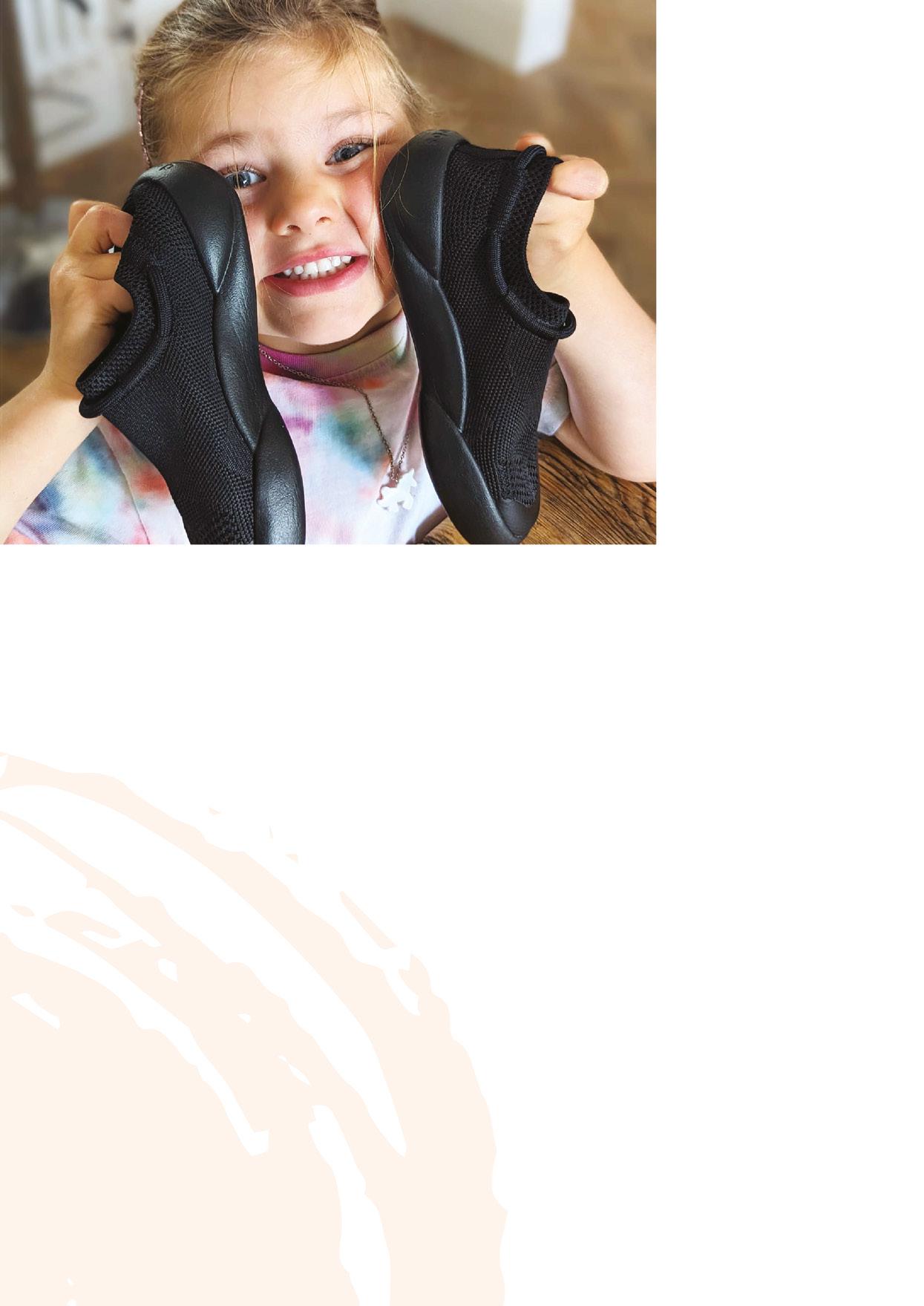
Your trainers are made in small batches, which can
mean longer wait times
Stuart: I think the way people shop is changing, with a noticeable shift towards consumption-conscious habits. This trend is particularly evident among parents, who are leading the charge in embracing mindful consumption. There’s a growing preference for locally crafted products that prioritise quality and purpose over massproduced items.

“Knowing the difference between kids’ and adults’ shoes isn’t just about style or size”
Crafting our trainers in small batches allows us to choose quality over quantity and emphasises our commitment to delivering purposeful and well-designed footwear. And hopefully, our customers will appreciate that. Our packing is super playful (and recyclable), and we keep chatting with our customers throughout the purchase journey, which helps build the anticipation and excitement of receiving a pair of Dubs.
How did the collaboration with the charity Sal’s Shoes come about?
Stuart: To be honest, very easily. One of the main sustainability pillars for Dubs is to ensure that our shoes stay out of landfill and in circulation for longer. Enter Sals Shoes (salsshoes.com). I knew of Sal’s Shoes anyway, so when the time came, I dropped them an email and asked if they would be interested in a partnership. I had a few chats with CJ, Sal’s founder, who is such an inspiration and just received an OBE for services to young people, education and the environment. She loved our brand and mission, and was happy for us to send shoes to her. So, if you are reading this and are surrounded by outgrown shoes, get them over to Sal’s Shoes. They’ll make sure they go to kids who need shoes the most!
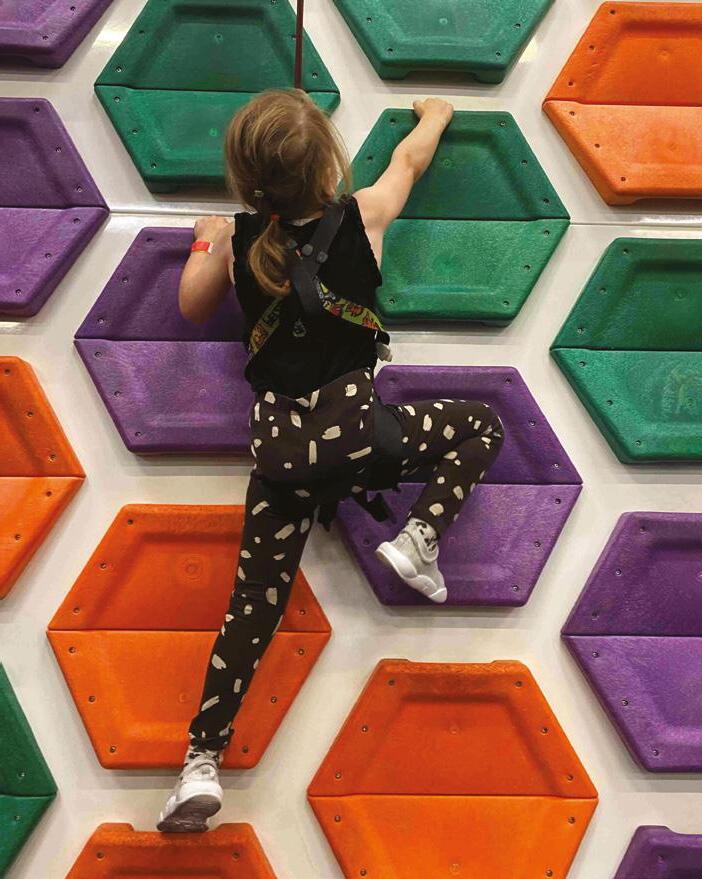
“The way people shop is changing, with a noticeable shift towards consumptionconscious habits”
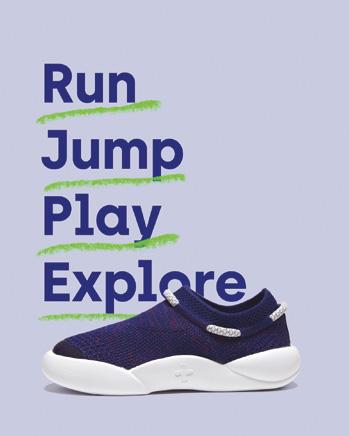
In terms of design, how do children’s trainers differ from adult shoes? What should parents who are buying trainers for their kids be looking out for – and potentially avoiding?
Stuart: This is one of my biggest issues. I think the best way to look at this is that they are totally different products. And any brand that tells you otherwise, avoid, avoid, avoid. Many High Street brands buy their shoe soles ‘off the shelf’ and shrink down adult sizes into miniature versions. But kids’ feet are different from adults’ feet. They are still growing. In fact, they don’t really have bones in their feet. Well, at least, not bones as we know them. They are essentially a bag of soft spongy cartilage. They are so soft that they
can be easily deformed by poorly fitted shoes. Experts estimate that 70% of adults suffer from foot health problems and that most of these problems are the result of wearing illfitting shoes in childhood.
Before my Dubs journey, I didn’t fully grasp the importance of kids’ shoes. I love trainers and as soon as Leila rocked up, I couldn’t wait to get her a pair of my favourite brand of sneakers. But I wasn’t aware that Leila had wide feet. We had her feet measured for school shoes, but with trainers, I just bought the same size. It turns out the trainers I bought were super narrow and her little toenail got squashed and deformed. Thankfully she is fine now, but my flippant attitude towards this was quite shocking.
When we started Dubs, one thing we were adamant about was not compromising on fit. We invested time and money to develop shoes tailor-made for children’s feet. We simply refused to shrink down adult sizes. In a nutshell, knowing the difference between kids’ and adults’ shoes isn’t just about style or size, it’s about taking care of your kids’ growing feet and ensuring their feet stay healthy. By choosing brands that put kids’ foot health first, you’ll ensure your little heroes have a lifetime of comfortable adventures.
Stuart: Our primary goal was to create shoes that allow kids to jump into action, have fun and ensure parents don’t have to worry about ill-fitting shoes causing discomfort. Equally, we aimed for practicality. The shoes are designed to look awesome and stylish, but also withstand heavy-duty wear.
Firstly, they are slip-on shoes for easy on and off, but we didn’t compromise on security. A collar around the foot entrance ensures a snug fit. This gives kids a sense of independence, with no grown-up required, which is also no bad thing for the parents.
Working with the best kids’ footwear technicians, we meticulously graded and fitted each sole for each size, so that they had the room, flexibility and support for growing, supple, energetic little feet. Rather than treating kids’ foot health features as a hindrance, we integrated them into the design, turning them into standout features. Attention to detail and design excellence sets us apart with features like:
Deep grooves on the sole provide excellent grip and efficient rain dispersal without being overly intricate and difficult to clean.

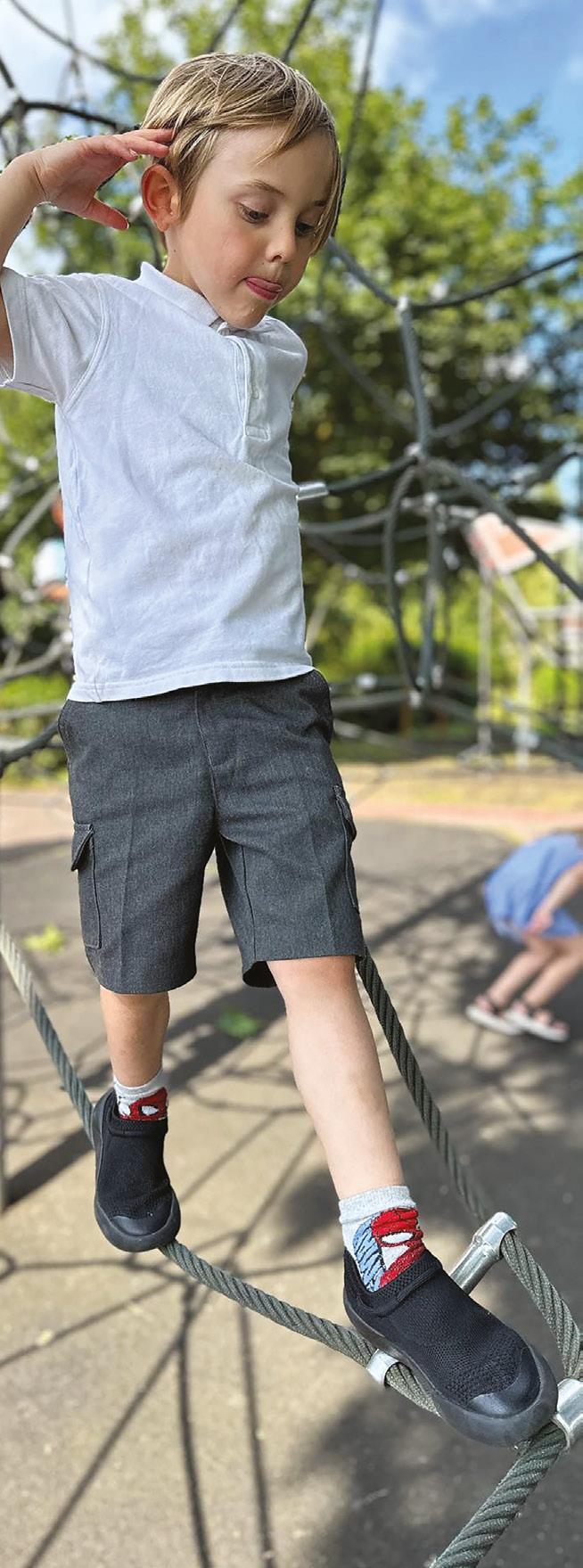
We made sure our toe box is a ‘window toe box’ as opposed to the more narrow ‘fashion toe box’. This ensures kids’ toes are not squashed and have enough room to wiggle.
We’ve incorporated a stylish loop into the design, not just for looks but also as a functional element to help ease the foot into the shoe effortlessly.
What we have ended up with is an awesome and exciting shoe that is tailor-made for children’s feet. They are not just practical for kids and parents, but also versatile enough to rock at a disco or party and conquer those tree-climbing adventures.
“Our primary goal was to create shoes that allow kids to jump into action, have fun”
Stuart: In addition to our footwear collection, we are passionate about offering a range of products that challenge the disposable nature of kids’ apparel items. From school bags and lunch boxes to T-shirts and beyond, these essentials are normally only around for only a single season before being binned. But the ultimate goal is for Dubs to be an educational platform for kids. Dubs is all about story-telling, so I’d love us to be able to influence a change in the relationship children have with the things they own; making them aware of how small changes in the way they view their clothes can make a big difference. We have the opportunity to champion sustainable fashion through the Dubs brand. From our messaging to the content we share, we can explain to kids that opting for refurbished clothes or garments crafted from recycled materials isn’t just environmentally responsible – it’s also a stylish choice that sets them apart as the trendsetter. Lastly, Dubs is launching a pre-loved site soon! Ooooh, I’d also love a cartoon series on CBeebies. That would be AMAZING
Avoid buying shoes that are too big, as toes gripping unconsciously can lead to tripping and affect development.
Ensure they have growing room, with a slightly wider toe box for natural growth – be careful of the ‘fashion toe box’ that is super narrow and make sure the sole has enough flex in it.
If possible, choose shoes designed for the specific activity your child will engage in, be it sports, casual wear or outdoor adventures.
For more information about Dubs Universe, visit: dubsuniverse.com
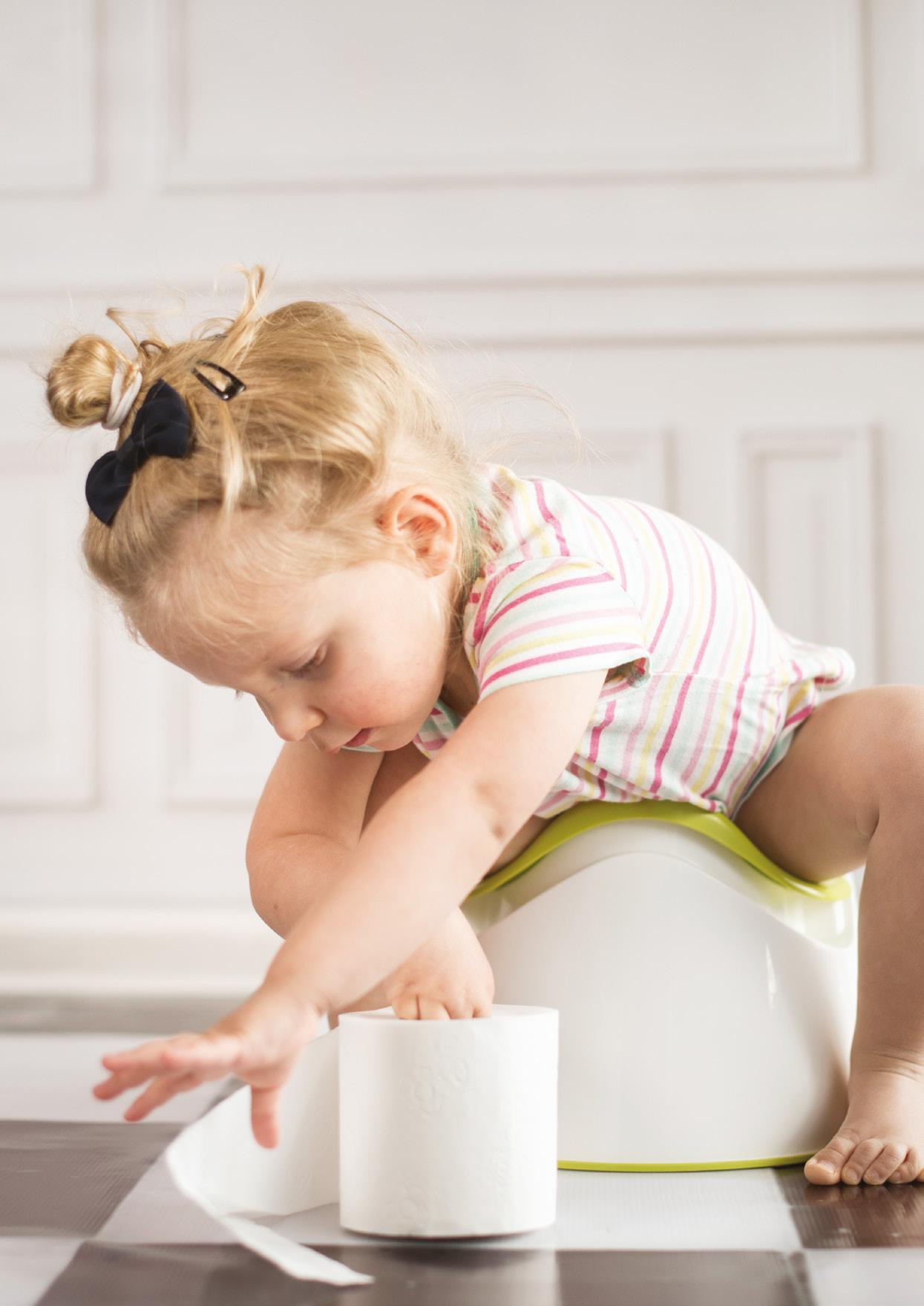
“As with everything, there’s no single ‘best’ toilet training method. It’s about finding the right one for both of you”
The experts at Andrex explain what to look out for in the run-up to potty training and give key advice on making it a smooth transition for both parents and toddlers.
Do you think your toddler is ready to start potty training? Read the signs. Don’t start toilet training until your child is ready, physically and socially. They need to recognise they need to go before you can even attempt to give it a, well, go! If they’re not there yet, you can still get them interested by doing things like teaching them to wash their hands.
Your child may start to show an interest in the toilet or they might start to copy you or their siblings when you head for a wee. They may talk about their friends using the toilet or notice that others are wearing pants, not nappies.
They may start to ask you a LOT of questions about wee, poo, nappies, pants, toilets, potties… Embrace the endless Q&A session!

1 2 3 4 5
Your child may start to tell you they need to wee or poo. That could be through words or gestures. They may start to realise when they have a wet or dirty nappy and want it to be changed.
“Your child may start to show an interest in the toilet”
Your child purposefully not using or needing their nappy is a good tell that they might be ready to transition to the potty. They should be able to stay dry for at least a couple of hours.
Play time, poo time. Your child may start playing games where they sit their toys on the loo, which is a sign of their awareness and significance of going to the toilet.

“Reward your child with cheers and positivity”
Is your child showing all the signs? Let’s get started! But where to start? As with everything, there’s no single ‘best’ toilet training method. It’s about finding the right one for both of you. Our advice? Try a few and see what suits you. Ditch any that you don’t like and stick with the one that does!
This is a gradual method of potty training where you take the lead. Think lots of celebrations and you both taking your time. Charts and stickers are gold when it comes to extra motivation.
Start by letting them watch you when you use the toilet. Go shopping and let them choose their own potty or training seat.
Set aside time each day for your kid to sit on the potty. Encourage them to wee or poo while seated. Celebrate and reward them when they do.
Once you’ve built up potty time, move onto the toilet with a training seat and step stool.
Bums out! This method lets your child spend some allocated time each day with that peachy bum free – it’s a no-nappy zone.
Keep an eye on your kid for signs they need to go (like squirming or holding themselves), then encourage them to sit on the potty.
Reward your child with cheers and positivity when they successfully wee or poo while seated.
As they’ll be bare bummed, don’t punish or shame them when accidents happen.
Gradually increase the time they have their nappy off then eventually swap to underwear or training pants full time.
Be prepared: this may not be the best approach for all kids.
Strong-willed kid? This could be the method for you. Let your child take the lead in deciding when and how to use the potty. They set the pace, not you.
Wait until your child shows signs of being interested in potty training. They could ask questions and start to show interest in the toilet.
Encourage and support them, but don’t pressure them to use the potty or toilet. It’s all down to them.
Celebrate their victories when they use the toilet or potty, but always avoid any shame when (and we don’t mean if) accidents happen. This method can take longer, but it can be very effective in the long run.

“They need to recognise they need to go before you can even attempt to give it a, well, go!”
Set regular times when you take your child to the potty or toilet, even if they don’t need to go. Over time they’ll recognise their body signals and head to the bathroom themselves. Like magic, just with toilets.
Take your child to the potty or toilet at regular intervals throughout the day. It’ll be lots of trips – every 30 minutes to an hour.
Encourage them to sit for a few minutes each time, even if they don’t need to go. Cheer, whoop and keep it positive when they do a poo or wee while seated.
Gradually increase the time between potty trips as they get into the swing of things.
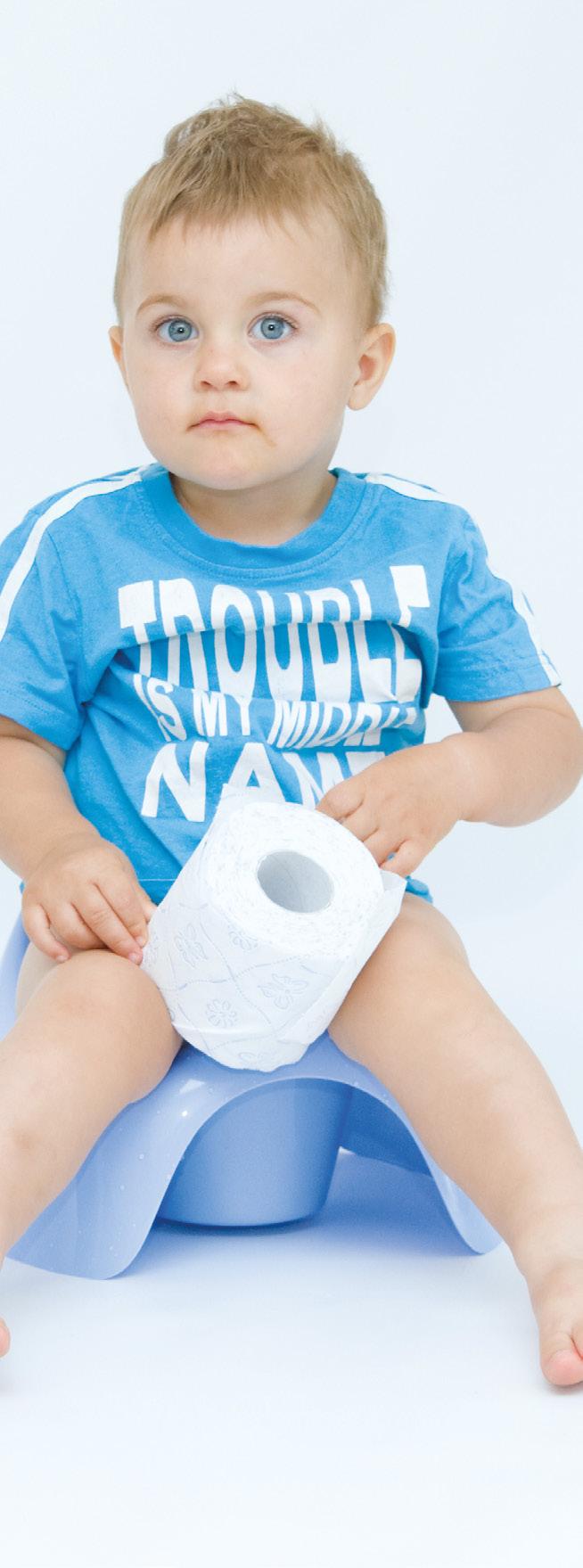
Regardless of which method you land on, here are some general tips for success.
Dress for success. Wearing the right clothes is always a good shout when toilet training. We’re talking elasticated waisted shorts, jogging bottoms or short dresses. Buttons are not your friend!
Kids love a reward. Whether it’s a toilet training sticker chart, their favourite snack or a little toy, treats are your friend when toilet training.
Stay positive and don’t get frustrated. Good vibes are so important, so make your bathroom a negative-free zone and be your child’s biggest cheerleader. As with all parenting, things rarely go smoothly so don’t lose your head. Stay calm and carry on.
Pick your moment. Knowing when to start toilet training is tough. Avoid starting during periods of change such as moving house or welcoming a new baby to the family.
1 2 3 4 5 6
Consistency is key. Practice makes perfect. Follow the same routine to make it easier for your child to pick it up.
Use the potty training app from Andrex. Intended to make potty training fun for both parents and children, the app is an interactive book designed for preschool kids as young as three years old where the kid becomes the teacher as they show Bunny and the Andrex puppy the steps involved in going to the bathroom.
Following a recent study by Andrex about how much time and money you could save by potty training your child from as early as 18 months, the toilet paper brand has launched a potty training app, which you can download for iPhone (http://tiny.cc/t0fjxz) here and Android (http://tiny.cc/s0fjxz). For more information on the results of the study, visit: andrex.co.uk/gotime/ perfection-stage/articles/nappy-time
A new study highlights the extent of pet homelessness around the world and looks at things to consider before welcoming a cat or dog into your home.
Anew report has found that one in three pets are homeless. The international study shows the global scale of pet homelessness, estimating there are almost 362 million homeless cats and dogs across 20 countries studied. The project was launched
by a coalition of leading animal welfare experts in partnership with Mars, with the shared ambition to end pet homelessness.
‘The State of Pet Homelessness Project’ set out to understand the scale of pet homelessness and factors that contribute to pets being on the streets or in shelters, shining a light on the needs of a huge hidden population of pets today.
The ambition of the project is to drive more informed and targeted action to help reduce homelessness and ensure pets get the care they need. The findings from the countries revealed a stark picture that almost 35% of cats and dogs are either living on the streets or currently in a shelter waiting to find a home.


“We know that pets bring enormous benefits to our lives, and we want to help ensure all pets get the care they need”

Across the 20 markets, there are 143 million dogs living on the street and 12 million dogs in shelters; and 203 million cats living on the street and 4 million cats in shelters.
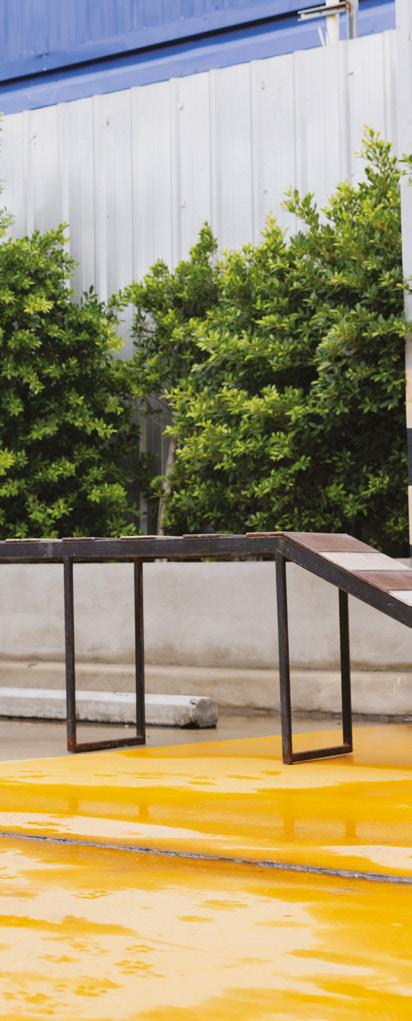
While each country has different challenges, the data also reveals several common themes across the 20 countries:
Pet–friendly housing limitations: almost one in five people that are considering giving up their cat or dog in the near future say it’s because they are moving home and cannot take their pet with them. And almost half of those who have rehomed a pet in the past did so for that reason.
Pet ownership challenges: globally around 15% of pet owners are considering giving up their pet in the next 12 months. A number of factors contribute, with personal health and fitness challenges to still be able to care for a pet being the number one reason globally, housing-related factors coming second, and time pressure to be able to look after a pet being the third most common reason. Other factors like behaviour, family allergies and cost also appear in the data.
“For every two dogs or cats that are part of a family or community in the countries surveyed, there is another that is not so fortunate”
Jeffrey Flocken, president of Humane Society International, said: “Dog and cat homelessness is a hugely complex issue, this new data will help animal welfare organisations, policymakers, pet professionals, academics and researchers to better understand the scale and factors influencing the issue, which can in turn support the most impactful interventions.”
“Globally around 15% of pet owners are considering giving up their pet in the next 12 months”
The ‘State of Pet Homelessness Project’ used data from more than 900 global and local sources, along with almost 30,000 public surveys and 200 expert interviews to build a picture of pet homelessness across: Australia, Brazil, Canada, China, France, Germany, Greece, India, Indonesia, Japan, Lithuania, Mexico, New Zealand, The Philippines, Poland, South Africa, Turkey, Thailand, the USA, and the UK.
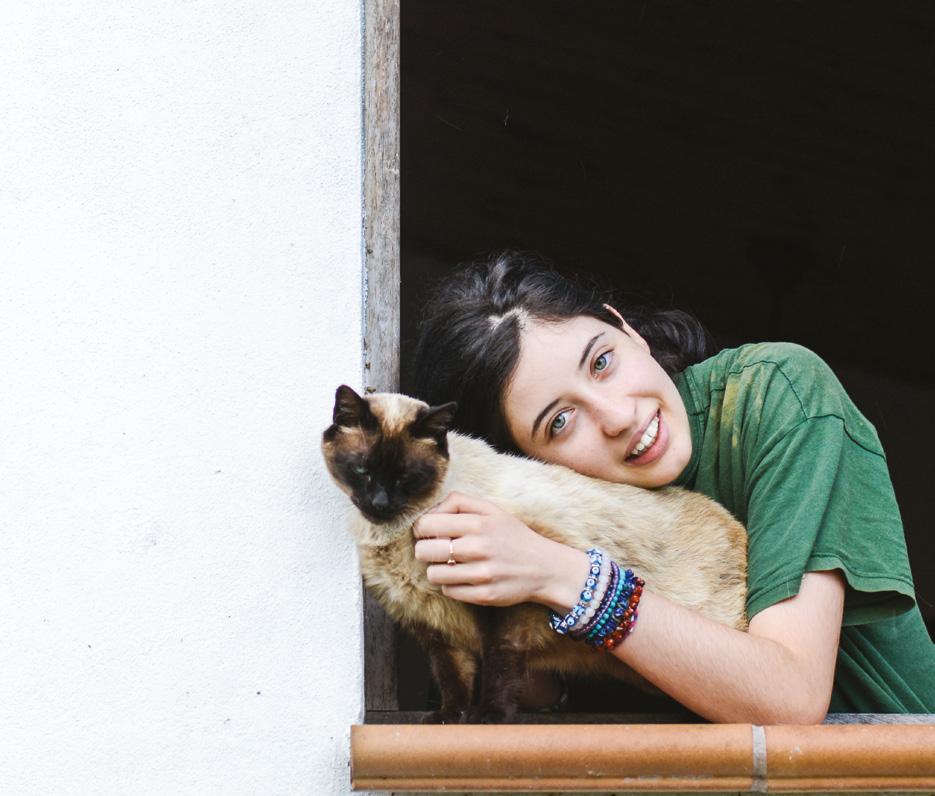



“Big and small actions can make a difference”
Stemming homeless population increase: a surprising number of people lose their pets and often don’t get reunited. Almost half of people surveyed said they had lost a pet in the past and, of those, almost 60% were never found by their owners. Globally, pet owners report that only 50% of owned dogs and 60% of cats are sterilised, meaning the remainder, if allowed to reproduce unchecked, can result in unplanned litters, exacerbating the problem.
Loïc Moutault, global president of Mars Petcare, said: “We know that pets bring enormous benefit to our lives, we want to help ensure all pets get the care they need. For every two dogs or cats that are part of a family or community in the countries surveyed, there is another that is not so fortunate. That is not the world
we want for pets, and we hope this data will help drive targeted interventions to give more pets the life they deserve.
“Big and small actions can make a difference, from considering adopting a pet, to changes that mean more rental accommodation allows pets helping to keep pets and pet owners together. We are setting out to support 30 million vulnerable pets over the next five years and hope this data will allow us – and others – to make interventions that make a big difference.”
Working alongside Mars on this global data initiative is an advisory panel of leading animal welfare experts from organisations, including: Humane Society International, Alliance for Contraception in Cats & Dogs, International Partnership for Dogs and the International Companion Animal Management Coalition.
To mark the release of this data, Mars has made a $500,000 donation to Humane Society International to fund projects in India, South Africa and Mexico to make interventions informed by the data. These programmes will deliver reproduction control, training and care for thousands of animals. This builds on a significant history of work by Mars and its partners supporting almost 10 million vulnerable pets across the world over the last three years. Including donating more than 100 million meals to vulnerable pets, sterilising over 30 thousand free-roaming animals and providing over 100,000 pets with comprehensive preventive care, including wellness checks, preventive medicine and vaccinations.
To find out more about the State of Pet Homelessness Project and to go deeper into





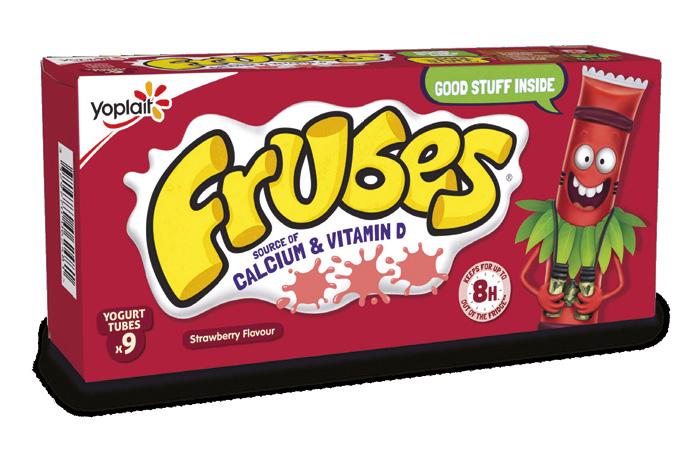






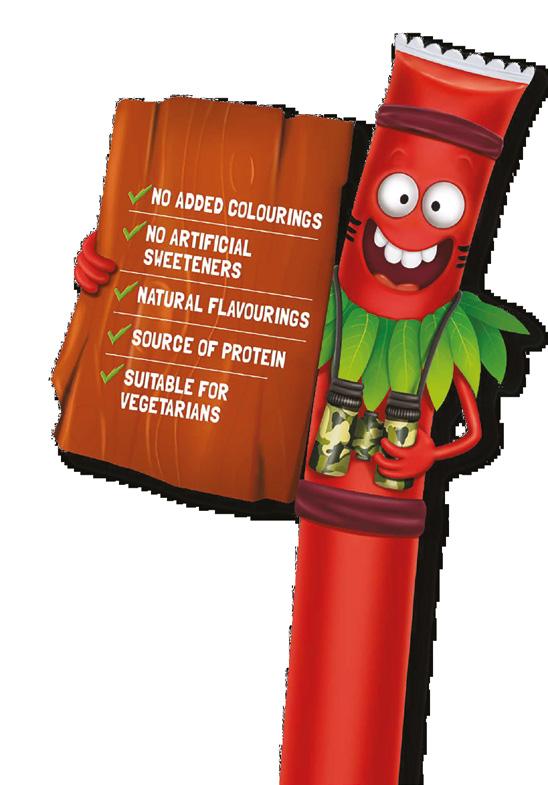
We’re excited to team up with Gloworm to give you the chance to win a family day out to the biggest family festival dedicated to make sure families have fun together.
With more than 100 acts and activities, hands-on fun and outdoor adventure at its new location at Holme Pierrepont Country Park in Nottinghamshire, Gloworm has something for all ages.
We don’t know who to see first! CBeebies stalwart and Gloworm festival favourite Andy Day will be bringing his love of dinosaurs and music with his fun-packed live show featuring his famous dinosaur raps. Bursting with rhymes, actions and catchy lyrics about everyone’s favourite prehistoric creatures, Andy and his Dino Raps will get kids and parents singing along, as well as taking part in the hugely popular Meet and Greet sessions.
Elmer the Patchwork Elephant will be returning to Gloworm for the third time to meet his fans and appear at special Story Time sessions throughout the weekend. Elmer remains one of the most iconic and widely read children’s book series of all time, selling over 10 million copies worldwide since it was first published.

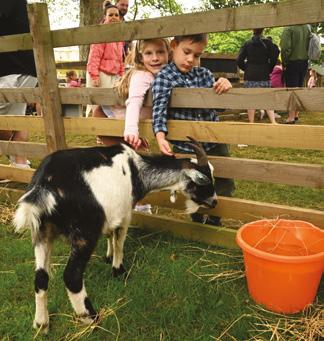
“Lots of brandnew outdoor adventure activities will be available to add to the festival’s fun”


Also CBeebies favourites, Bing and Flop from the multi-award-winning children’s television series, Bing, will appear on the main stage. Loved by millions of children, and streamed over one billion times on BBC iPlayer, Bing shares the small, everyday stories, which can feel so big and shape children’s understanding of the world and their potential within it.
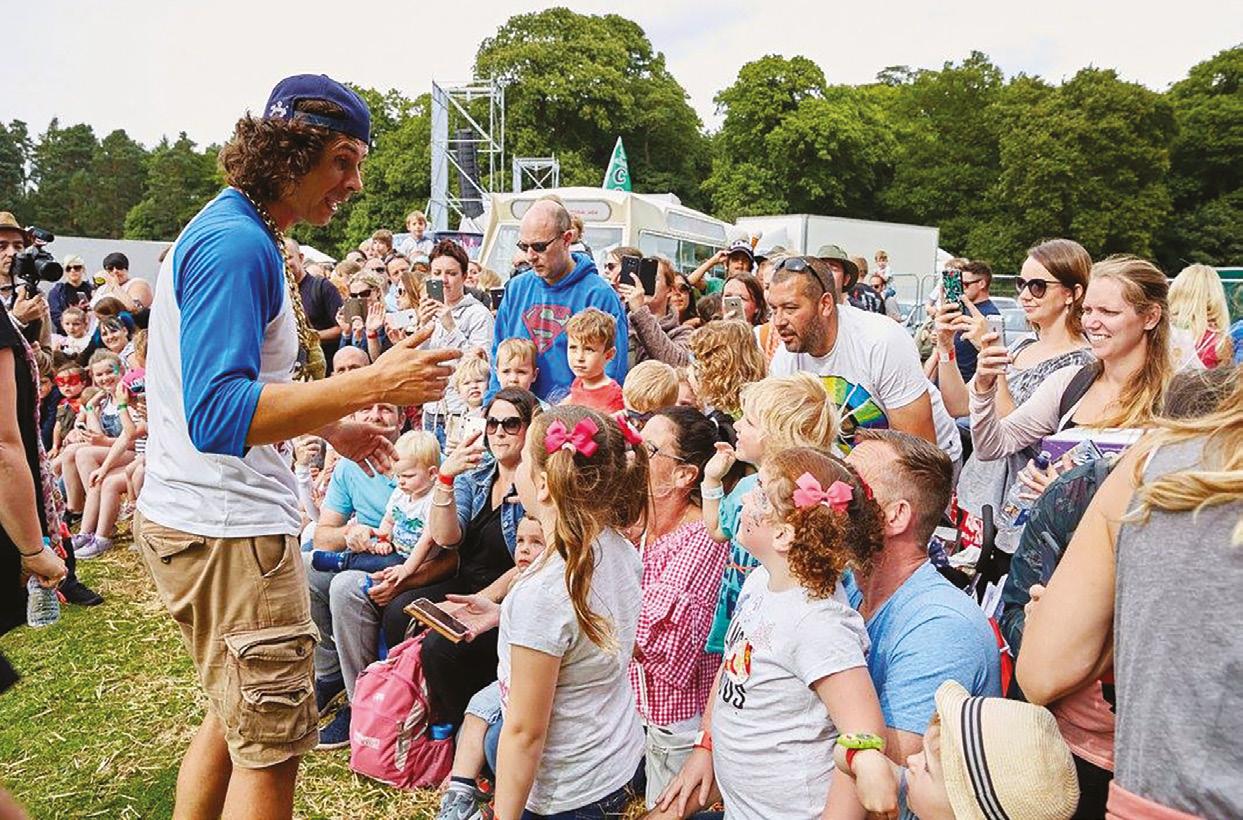


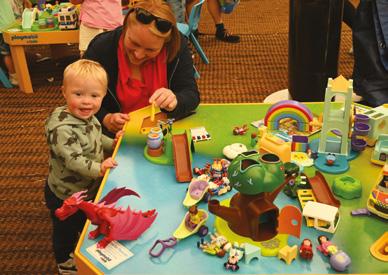
Iconic radio presenter Pat Sharp, voice of a generation and once proud bearer of the best mullet in showbiz, will be making his Gloworm debut. The hugely popular ‘Mr Nostalgia’ will be playing an epic DJ set of hits across the decades. With more than 40 years of broadcasting experience, Pat is still winning new fans both old and young alike, and was booked after being voted TV’s favourite nostalgic TV act. Expect a musical trip back through the eras with plenty of party tunes to get everyone up and dancing.
The new additions join the already announced Mr Blobby, Bodger & Badger, CBeebies TV presenter Maddie Moate, and a whole host of live music from N-Trance; Spice World The Tribute; Noasis; Lolly; Taylor Swift Tribute and Fatboy Tim, plus Nottingham’s own Johnny and The Raindrops, and the popular Playmobil Rave.
The new location for 2024 also means lots of brandnew outdoor adventure activities will be available to add to the festival’s fun. The Sky Trail & Mini Sky Trail, Mini Landrovers, Kayaking, Canoeing and WipeOut, the water-based inflatable obstacle course, will be free to festival attendees throughout the weekend.
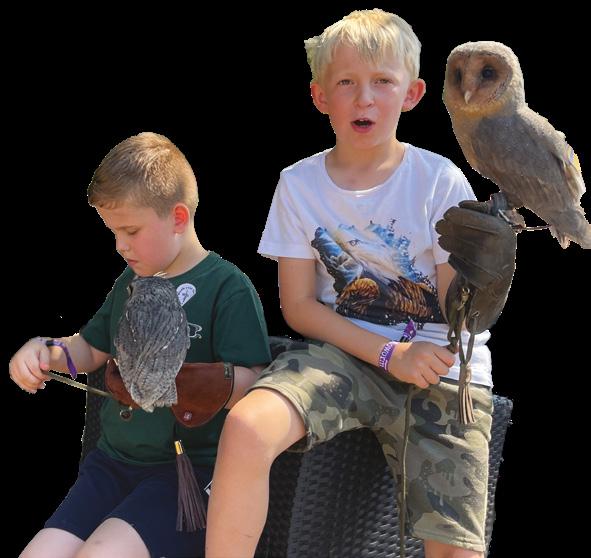
Family First has teamed up with Gloworm to offer one lucky family free tickets to the festival. The prize of a family ticket admits 2 adults and 2 children (aged between 2 and 15 years). Under 2s get in free. A family ticket is currently priced at £140 (Tier 3) until 31 March.
To enter the competition, visit the Family First Facebook page facebook.com/familyfirstuk
Day visitors are welcome onto the festival from 10am until 10pm. Taking place on Saturday 17 August and Sunday 18 August 2024, the lucky winner can choose the day they want to go.
For more information and to book tickets, go to glowormfestival.co.uk
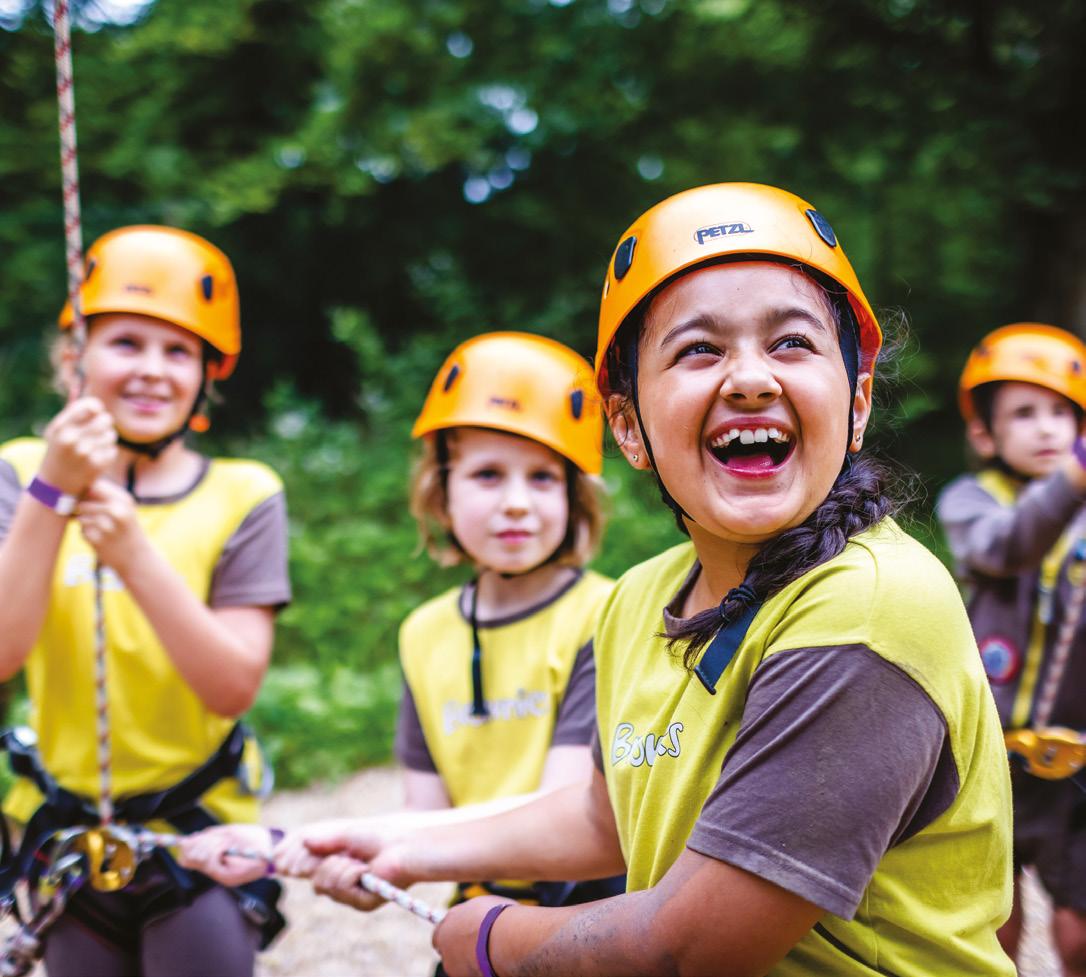
We find out how Girlguiding helps to build confidence and resilience, as well as promote well-being for young girls.
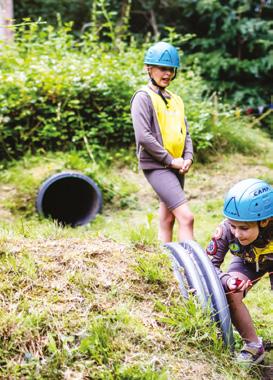

Girlguiding has been a part of millions of girls’ lives for 113 years and counting. Set up because girls wanted an equal world where they could have the same opportunities as boys, impressive progress has been made since it began. But things can still be tough for girls. With many facing anxieties and high expectations in every area of their lives, from school exams to appearance pressures online, they can be limited by gender stereotypes and face barriers to accessing things they need to feel happy.
Girlguiding’s annual Girls’ Attitudes Survey revealed that 61% of girls and young women aged 11 to 21 said that being part of a youth group or club made them feel accepted and 60% felt more connected to others. Girls in Girlguiding are more confident than their peers and nearly nine in 10 of them said they like being the way they are, compared with just six in 10 who have never been in Girlguiding.
Girls today can still earn badges and the modern core programme includes badges for things like mindfulness, self-care and media critic. Girls are also supported to develop emotionally, mentally and physically, so they can make a positive contribution to their community and the wider world.
most of all have fun.
Research from the University of Edinburgh shows that the benefits of Girlguiding continue into later life, outperforming other after-school clubs and activities. Adults who have been involved in Girlguiding or Scouting are 35% more likely to have self-reported excellent health at age 50 compared to their peers and are more likely to have better mental health in later life.
The research also found that those who had been in Girlguiding had a better chance for social mobility, which can have a positive knock-on effect for better health. According to researchers, their findings suggest that going to Girlguiding meetings helps to build skills such as resourcefulness and teamwork, which help people to build resilience against everyday stresses in life.
“Empowering girls for more than 100 years, Girlguiding is committed to doing the same today”

Empowering girls for more than 100 years, Girlguiding is committed to doing the same today, with a keen focus on what drives, challenges and excites girls – being whatever each girl wants it to be. Whether that’s the thrill of doing something for the first time, singing around a campfire or enjoying the buzz of getting a new badge or emailing her MP about the things she cares about – it’s a space where she can be herself, get creative, explore, and
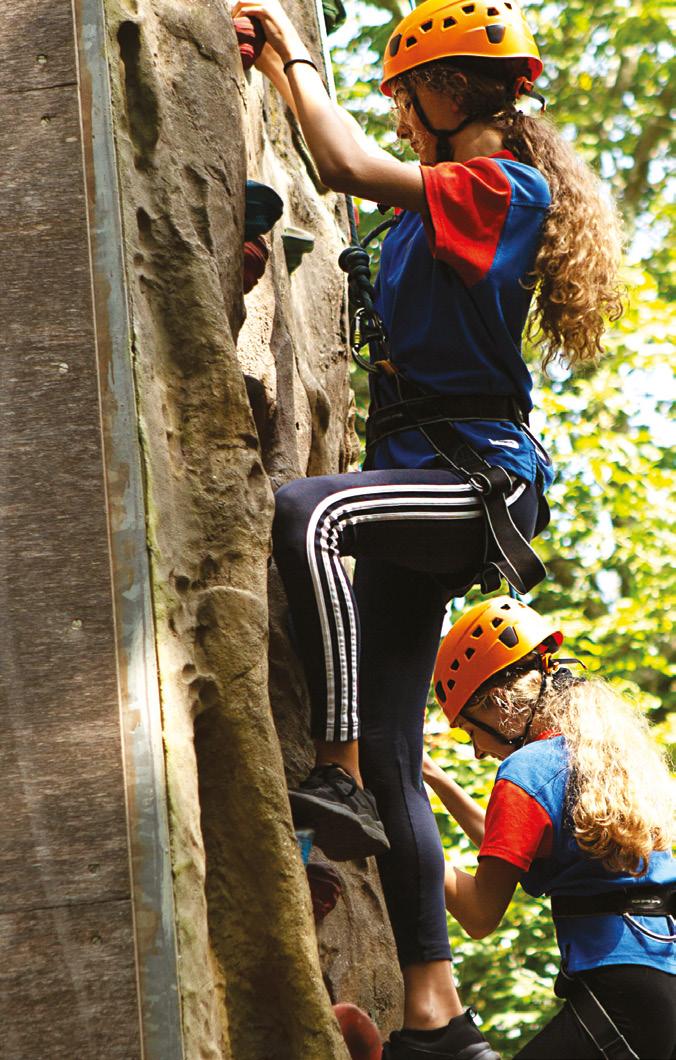
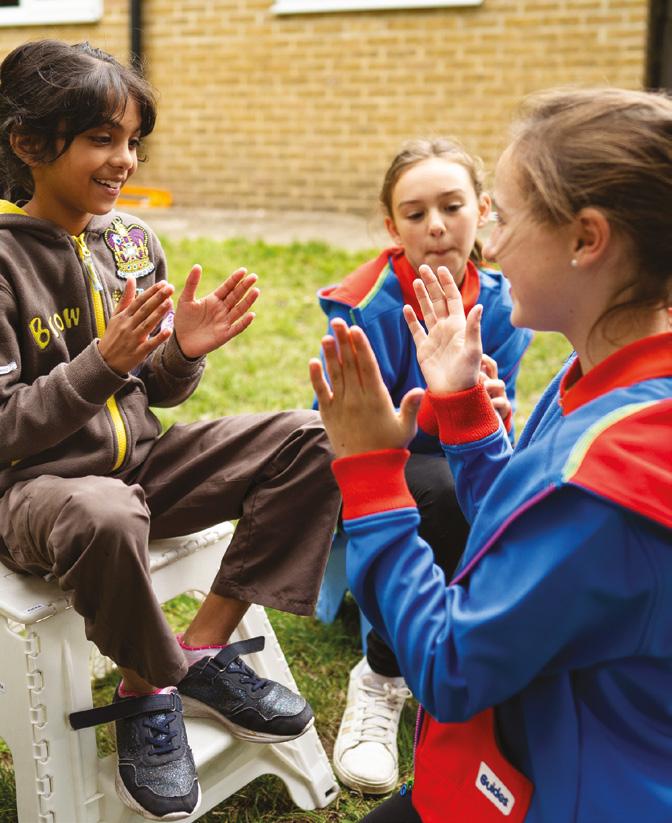
Girls can do anything. Girlguiding helps every girl discover this for herself, whether she’s four or 18 or in between. All girls have a home at Girlguiding – whoever they are and wherever they are. This is a place where she can be herself, get creative, explore and have fun. Where she’ll make special friends and do things she never thought she could.
Girlguiding is what each girl wants it to be. She can choose her own path through our activities and events. It might be giggles in sleeping bags. Songs around a campfire. The buzz of getting a new badge. The sound of thousands of excited girls at their very own music festival. The thrill of doing something for the first time. Coming home exhausted and full of stories.
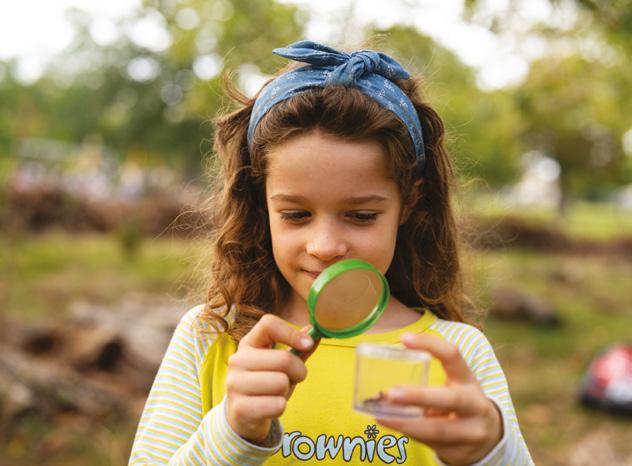
“Every girl can be herself and feel at home”
Girlguiding’s programme helps girls to develop skills such as self-reliance and encourages being active outdoors, which may have lifelong benefits for health and well-being.
Inspiring generations for over a century, it’s estimated that one in three women in the UK were once a Rainbow, Brownie, Guide or Ranger. Past alumni include popular household names such as actress Emma Thompson, presenters Clare Balding, Davina McCall and Zoe Ball, and Paralympic swimmer Ellie Simmonds.
Former Rainbow, professional footballer and Lioness Katie Zelem said: “I’m so proud to be a Girlguiding ambassador. Providing opportunities and the space for girls to have fun, challenge themselves, go on adventures and experience the great outdoors, is so important for the development of confidence and resilience. I want to inspire the girls of the UK to be their brilliant selves.”
“We help girls think big and be bold”
We help girls think big and be bold. We catch them if they stumble and encourage them to try again. We show them a world of possibilities big and small. We’re for girls, with girls, led by girls. We’re Girlguiding
In our relaxed and encouraging all-girl spaces, every girl can be herself and feel at home. No pressure, no judgment – just fun and learning with other girls, guided by our inspiring volunteers. She’ll try new things with friends she trusts and volunteers she looks up to. And this will give her courage, connections, confidence, and memories she’ll never forget. We’ve been by girls’ sides for over 100 years. Today, we’re squarely focused on what drives, challenges and excites girls here and now. We listen to what girls tell us, and this guides what we offer and what we fight for. Joining has never been easier, visit girlguiding.org.uk to register your interest and a volunteer from your local unit will be in touch!

Girlguiding (girlguiding.org.uk) is the UK’s largest youth organisation dedicated completely to girls, with around 370,000 members. Girls can do anything. We help them know that, whether they’re four or 18 or in between. All girls have a home at Girlguiding – whoever they are and wherever they are. We help them think big and be bold in a space where they can be themselves, get creative, explore and have fun.
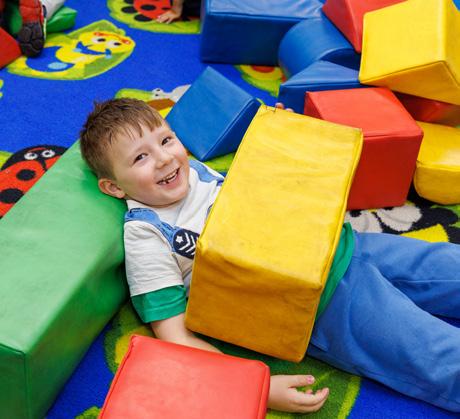
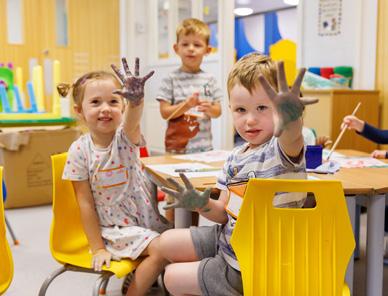
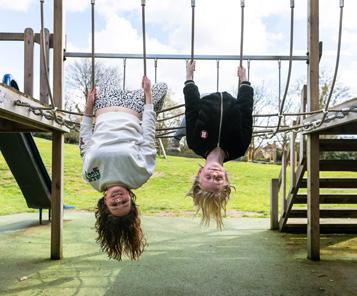







Conservation
scientists and
founders
of Seedball, Dr Emily Lambert and Dr
Ana Attlee, explain why planting wildflowers in your garden is so important for nature and a great way to get kids involved in caring for our planet.
Nature needs us! Recent research shows that since the end of the Second World War, 99% of wildflower meadows have been lost or destroyed. The loss of such beautiful and vital habitats impacts our entire ecosystem from the tiniest insects to mammals and birds that rely on them. Britain is, in fact, one of the most naturedepleted countries in the world. But the good news is that only small changes like planting wildflowers can make a massive impact.
Developing a love for nature at a young age is so important. So, this spring, the rewilding experts at Seedball are calling all parents and their youngsters to spend more time outdoors together, growing wildflowers. Growing wildflowers is not only so important for making a massive difference in saving Britain’s wildlife, but

there are also lots of lovely benefits for children’s social and motor development, including outdoor play, providing for nature and learning about the importance of looking after the planet. Being in nature improves children’s lives, having a positive impact on mood and stress levels, helping them keep active and develop a love of nature, which research has shown results in pro-environmental behaviour as adults. Being out in nature, and gardening, also encourages healthy sensory development and, of course, is a wonderful opportunity to be together as a family –all while having fun.
Together, you can bring back a buzz to your gardens, balcony pots and hanging baskets, and take time in the summer to watch which pollinators arrive and learn more about them. And, of course, while


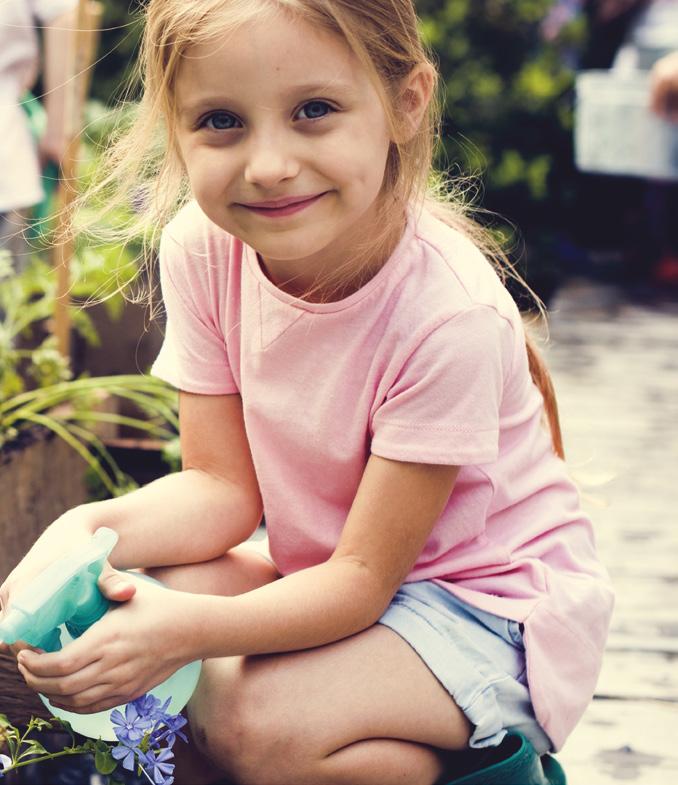
their seed balls are growing, children love to watch their very own patch of garden develop.
“Children love to watch their very own patch of garden develop”
Spending time in the garden gives families a chance to talk about why it’s so important to grow and nurture the UK’s wildflowers, and how together families can grow a brighter future. Sadly our UK pollinator populations are declining and native wildflowers are at an all-time low, but getting outside to grow seed balls is a fantastic and fun way to teach children about the importance of flowers for wildlife, learn about the different wildflowers and the species they attract, all while making a very real impact.
“Developing a love for nature at a young age is so important”
Seedball makes it easy for children to get involved in creating a wildflower patch: simply scatter the seed balls, water them and watch them grow –no gardening skill or equipment is required, and come summer, the garden will be buzzing with wildlife for children to learn about.
Cornflowers
These are an annual plant that come in an array of gorgeous hues. These magnificent blooms are edible and have a cucumber-like taste, making them excellent to grow in the garden! Their rich scent and colour attract a variety of insects, bees and butterflies, as well as night-flying bugs like moths and lacewings, who soon become a tasty treat for nearby bats to feast on!
Common Poppy

A well-loved favourite, the common poppy (or remembrance poppy) is unmistakable with its striking red petals and big saucer-shaped bloom. The common poppy is extremely beneficial to wildlife and encourages a whole variety of bugs and pollinators. What’s more, these scarlet flowers also help to provide food for common garden mammals like hedgehogs, who will come and feast on the insects that are nearby.
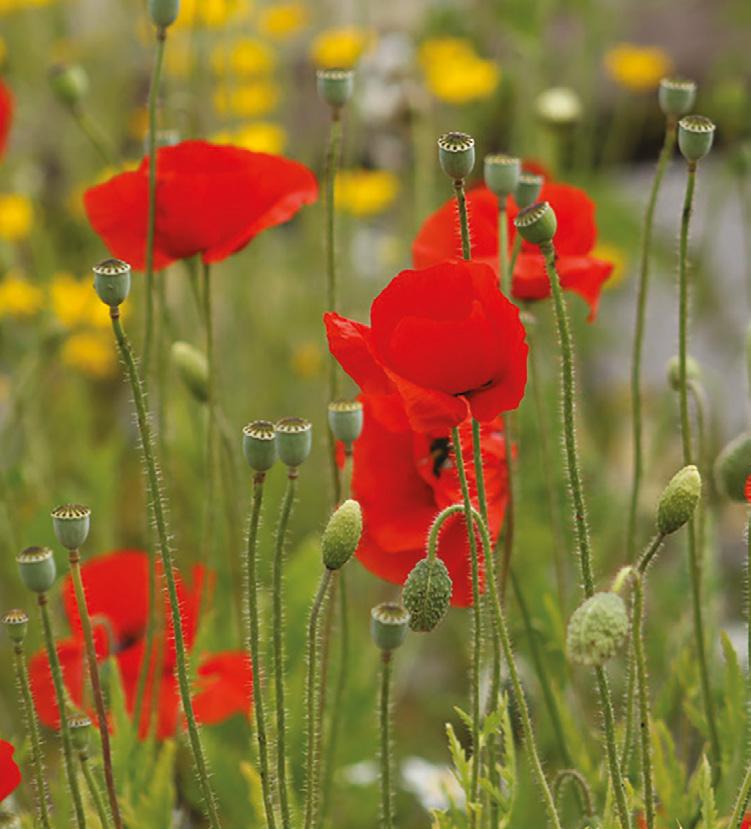
An aromatic perennial herb with clusters of pollen-rich rounded pink flowers. Wild marjoram is also known as oregano. So not only will your garden be providing honeybees, bumblebees and solitary bees a delicious nectar-filled feast, but an extra-tasty addition to your spaghetti bolognese and homemade pizza

A short annual, with bluegrey petals that resemble fuzzy mouse ears! The dazzling yellow centres entice butterflies to land and sip on the nectar. The forget-me-not flowers early in the spring, making it a vital source of food for pollinators emerging from hibernation.
A medium-height annual plant with flowers formed of yellowgolden discs and prominent ray florets. These magnificent wildflowers encourage a whole variety of beneficial pollinators, but once the flower has finished, the seeds will drop and provide a tasty and delicious treat for birds and wildlife.



create their own seed balls to scatter at home or out on walks. The box includes clay, native wildflower seeds and peat-free compost.
Seedball offers an array of native wildflower goodies, including a kit perfect for keeping the kids occupied and entertained. The new Make Your Own Seed Ball Kit contains all of the things needed for children to
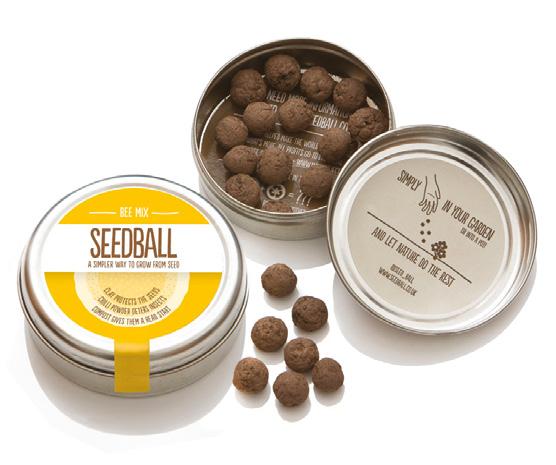
The kit allows them to be involved in every step of the seed’s journey from product to flower. This results in a beautiful garden for the whole family to enjoy, while providing a source of food for bees and butterflies, and helping to pollinate other plants along the way.
There are many ways to increase the population of wildflowers around us, starting in the garden is a great way to encourage more pollinators and wildlife to your patch, and children can enjoy seeing what comes to visit their wildflower patch!
Seedball (seedball.co.uk) was founded by two conservation scientists, Dr Emily Lambert and Dr Ana Attlee, who wanted to boost biodiversity and help wildlife. The unique products Seedball produces are balls made of clay and peat-free compost containing 30-100 seeds per ball, and a touch of chilli powder to deter slugs and snails. The company creates wildflower seed balls in mixed or single variety packages that are developed to help reverse the decline in pollinators and garden wildlife. Seedball is an innovative organisation on a mission to help increase the abundance of British wildflowers and the wildlife that depends upon them.



The Country Trust explains why planting a pair of pants in the garden this spring is a great way to discover how healthy your soil is – and it’s lots of fun, too.
The Plant Your Pants campaign, run by education charity the Country Trust, launches on the first day of spring (20 March 2024), in time for the Easter holidays, and invites everyone to take part in a journey of
soil discovery to find out what really is going on down there. The campaign is inviting children and families to do one fun, simple activity to find out more about their soil health – plant a pair of pants. By planting a pair of pants and discovering what is left of them two months later, people can go on a journey to discover how healthy their soil is.
Along the way, ‘partici-pants’ will be encouraged to look, touch, listen to and smell their soil. Healthy soil will break down or degrade cotton more quickly than soil with low levels of microbial life. If you’re left with just the elastic, it’s a good sign that your soil is active and healthy.
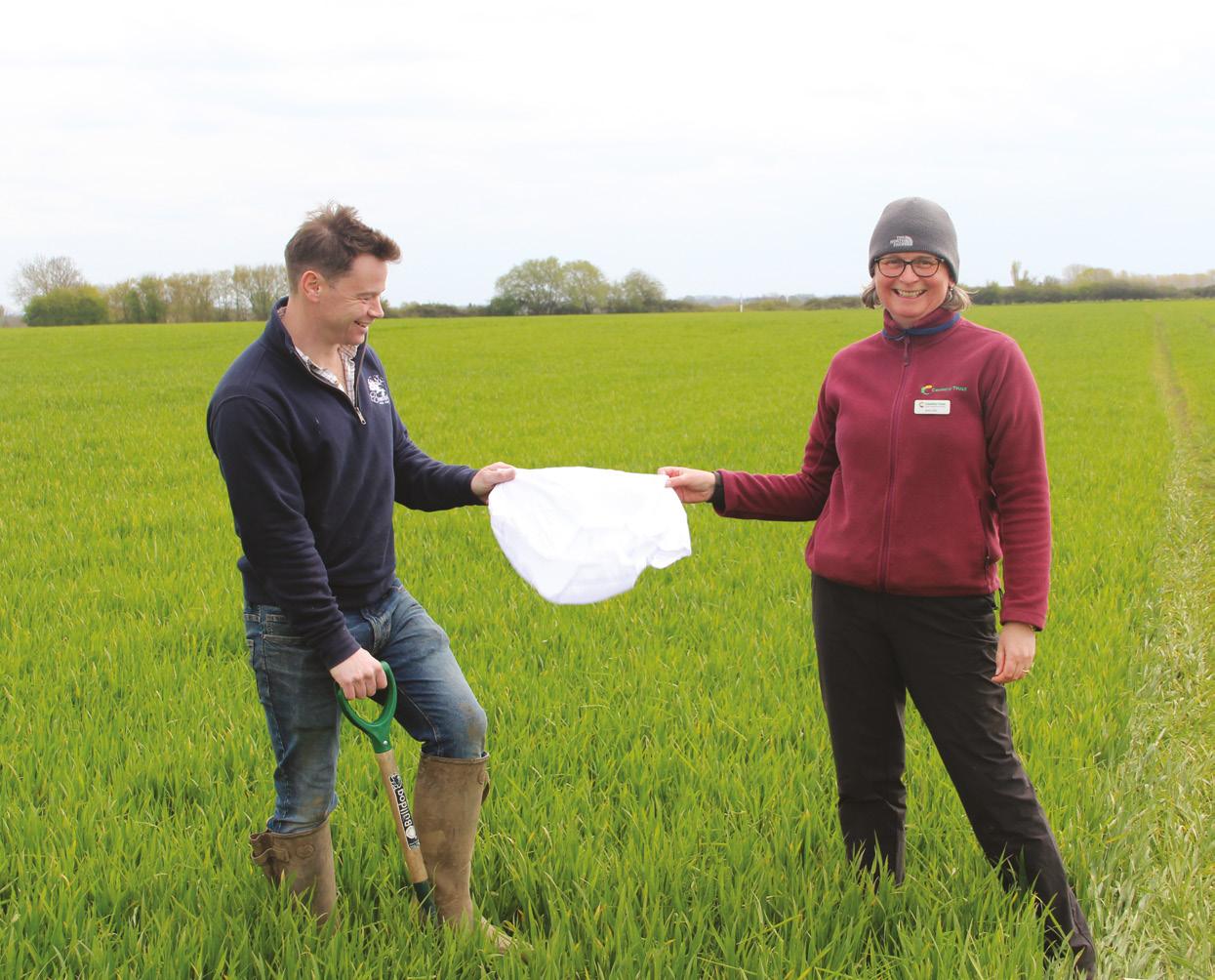
“Gardeners, like farmers, have a big responsibility as stewards of this amazing world beneath our feet”
The Country Trust is an education charity that connects disadvantaged



Leonardo Da Vinci said 500 years ago, ‘We know more about the movement of celestial bodies than about the soil underfoot’. The response to Plant Your Pants last year exceeded all our expectations, and we can’t wait to get the nation planting pants again.
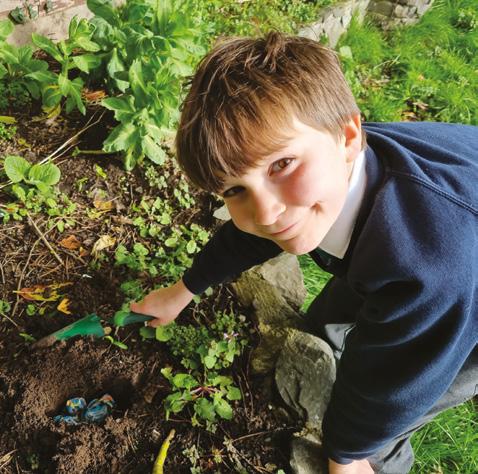
“Just plant a pair of cotton pants in soil and then dig them up eight weeks later!”
children with the land that sustains us all through hands-on, sensory experiences of food and farming. Last year 23,000 children visited working farms with the Country Trust to learn first-hand about how food is grown and the vital importance of soil to all our lives.
The charity’s national Plant Your Pants campaign is wonderfully simple - just plant a pair of (ideally preloved) cotton pants in soil on or around the first day of spring in March, and then dig them up eight weeks later to see what has happened to them.
Jill Attenborough, CEO of the Country Trust, said: “We all depend on soil for our existence but as
“It’s our mission as a charity to enable tens of thousands of disadvantaged children every year to discover that what we eat and grow affects our own health and the health of our planet, through inspiring, transformative visits and activities. Plant Your Pants is a way of sharing that experience with everyone – young and old, gardeners, nongardeners, whether you have a window box, a flowerbed or a veg patch.
“Gardeners, like farmers, have a big responsibility as stewards of this amazing world beneath our feet, and we hope that through participation in Plant Your Pants, we can all experience the excitement of discovery and find out more about how small changes can make a big difference.”
Soil provides 95% of our food, but how many of us really know what is in it, how it is formed and what life it sustains beyond the plants we can see growing in it? Soil shows us how our climate is changing and holds many of the answers to our urgent climate questions. It is one of the most important carbon sinks on the planet with the capacity to capture and store carbon in plant roots and systems which, even on a small garden scale, can be very effective.
Tom Fairfax, a regenerative organic farmer based in Northumberland who hosts the Country Trust Farm Discovery school visits and is a Plant Your Pants campaign champion, said: “Healthy soil is teeming with life, much of which can’t be seen by the naked eye, so getting our hands in the soil and seeing the way it acts on a pair of cotton pants is a brilliant way to experience its magic.
“We have ignored the soil for too long and this has had a negative impact, not only on the environment, but also on the quality of the food grown in it and our health. We all have a role to play in improving our soil, all we have to do is open our senses to the ground around us and listen to what it has to tell us.”
community groups or larger public access gardens. You don’t even need a garden – a window box or patio planter will do.
Between March and the big reveal in June, the Country Trust team, working with farmers and soil scientists, will send ‘partici-pants’ informative and fun updates that will use all our senses to explore the soil and encourage positive action to improve its health. Find out more and register at: countrytrust. org.uk/plantyourpants
“Soil provides 95% of our food, but how many of us really know what is in it”
Anyone can get involved with Plant Your Pants – it’s free to register online and you can add your pants to the interactive map. The activity can be enjoyed by individuals and families at home or by groups at allotment and gardening clubs, schools, youth and
The Country Trust (countrytrust.org. uk) is the UK’s leading national educational charity connecting over 70,000 children from areas of high social and economic disadvantage with the land that sustains us all. The charity believes every child should discover first-hand the connections between the food they eat, their own health and the health of the planet. Through food, farming and countryside experiences the Country Trust aims to empower children to be confident, curious and create change in their lives so that they and society can thrive.
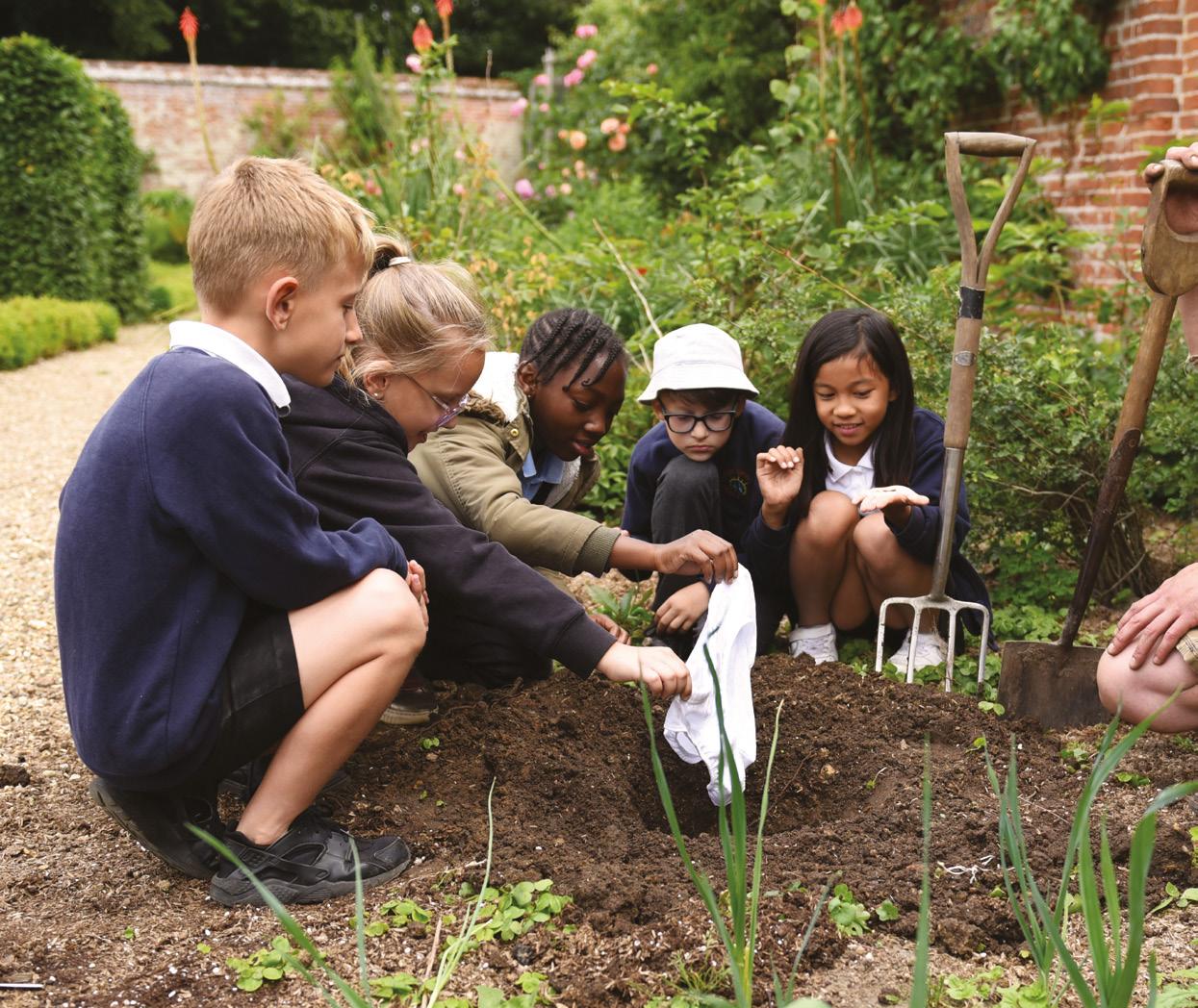






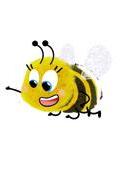
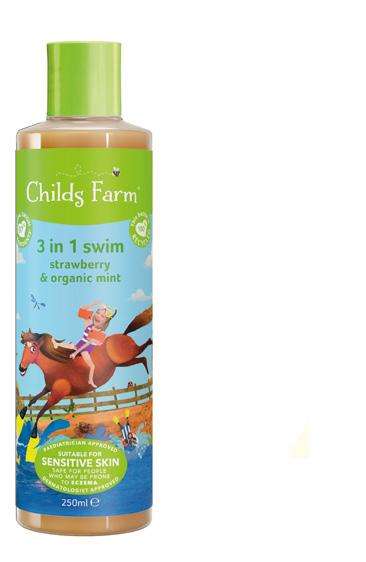



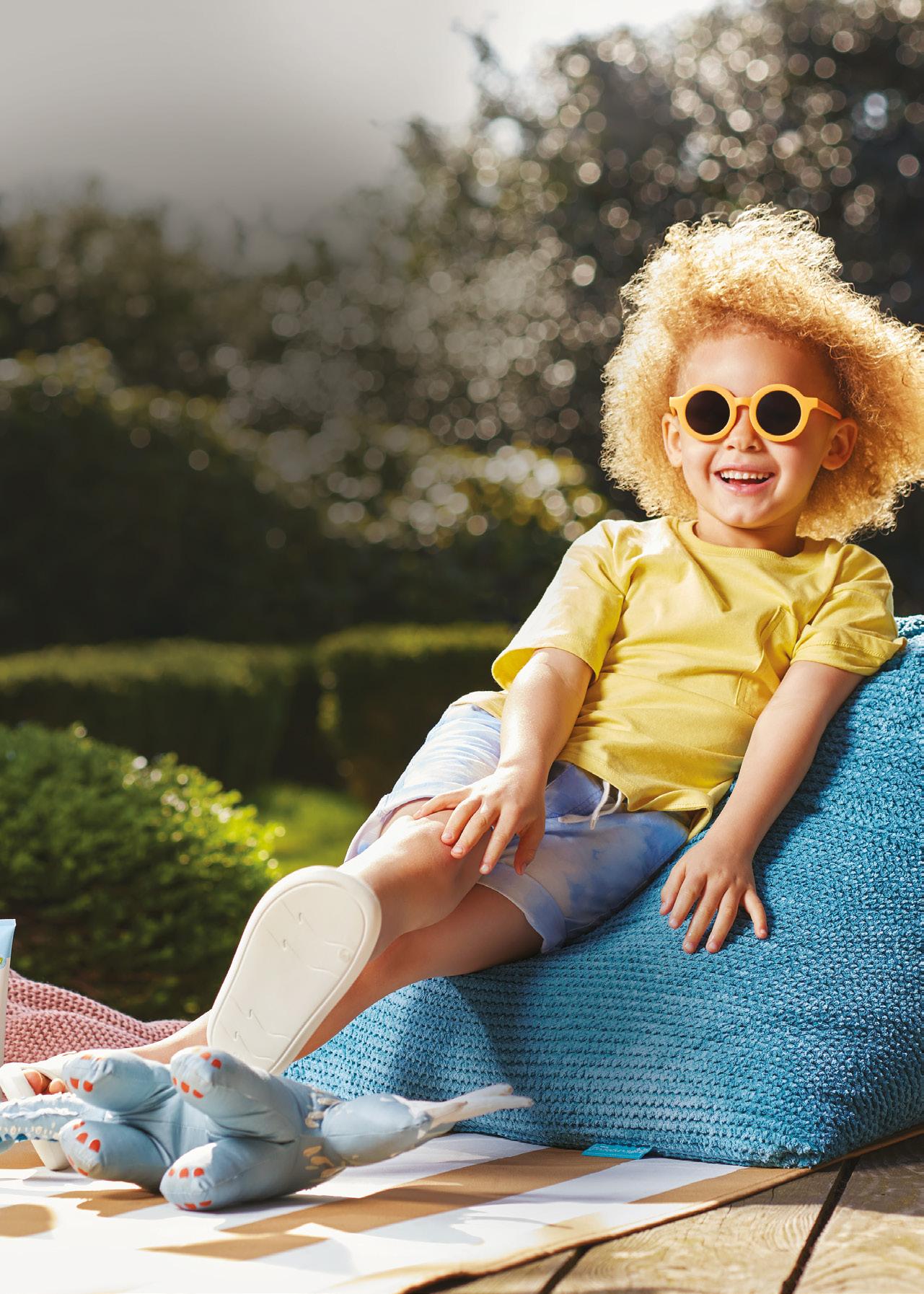
Planning a family trip to the mountains and wondering where to start? Check out these handy hints from Crystal Ski Holidays to help you choose the best resort for your holiday.
When you’re after a fab family resort, keep an eye out for things like dedicated nursery zones for children, highly-rated ski schools, a range of gentle runs and some fun slopes with bumps, tunnels and other kidfriendly obstacles.
Don’t worry about finding somewhere with miles and miles of pistes if you’re still learning – you’ll be better off sharpening your skills on confidence-boosting runs that link up so you can all meet easily for lunch. In bigger ski areas, you can usually get a local pass that covers the parts near the resort, rather than forking out for full area access if you don’t need it.
Choose somewhere with a shorter transfer and you’ll spend more time in the mountains and less time hearing, ‘Are we there yet?’ You can even get from the airport to your accommodation in less than an hour in some resorts, such as Levi, Ruka and Ylläs in Finland. And Austria’s a great option if you’d rather avoid winding mountain roads as lots of the resorts there are in valleys, so they’re easier to get to.

Winter fun doesn’t just mean skiing and snowboarding. Loads of resorts have plenty more things to do that are great for families to enjoy together, from tobogganing to ice skating. Look for somewhere with kid-friendly indoor activities too, like swimming pools and climbing walls.
If you’re heading away in school holidays, you’ll usually find loads going on, from festive fairs and a chance to meet Santa to fun Easter activities specially for families.
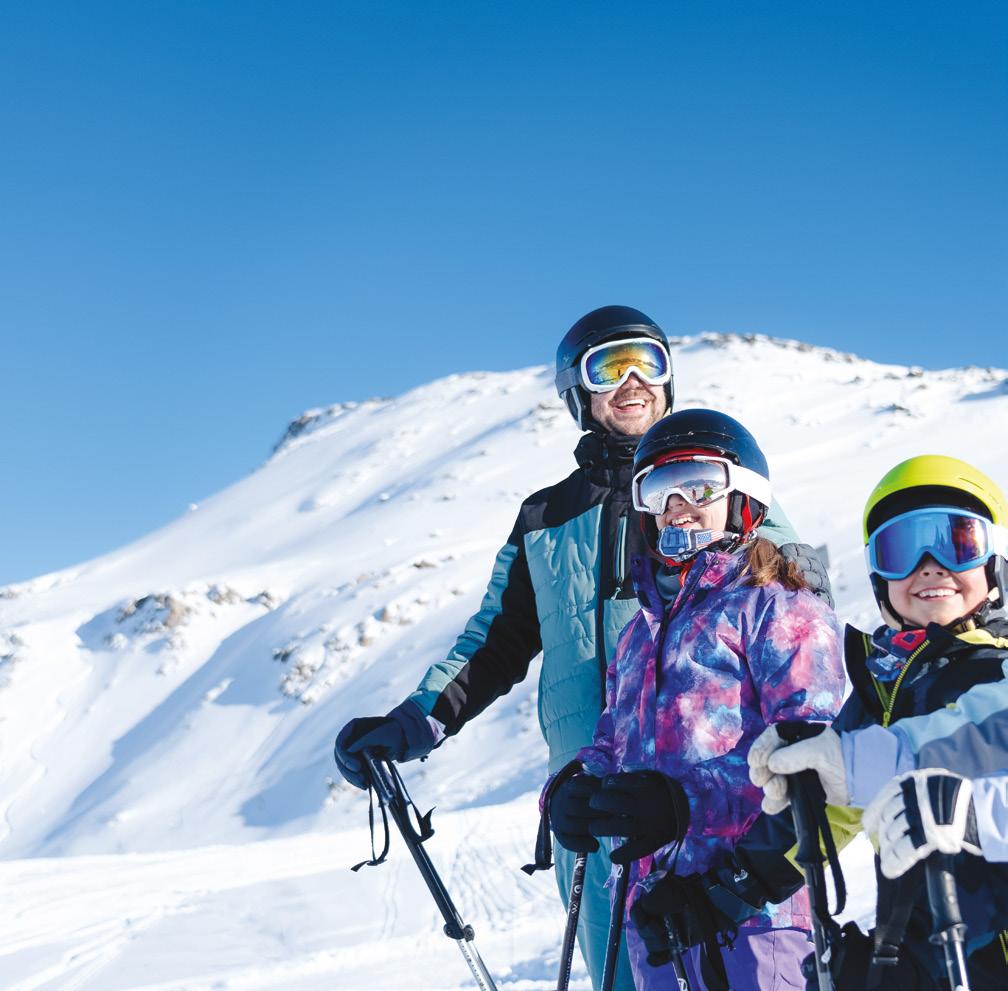
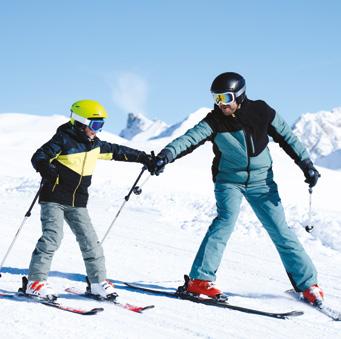
Choosing a more compact resort means everything will be close together and it’ll be easier to get everywhere. Smaller resorts are ideal for simple ski school drop-offs and pick-ups, as well as speedy trips to the shops, or you could go for somewhere a little bigger if you want lots of other activities.

lunch. Kids and grown-ups alike will appreciate being able to practise their ski skills on familiar terrain too.

A modest sized ski area means it’s easier to find your way around the mountain and meet up for a family
The best family-friendly stays are all about convenience. Look for somewhere close to the slopes or that’s ski-in, ski-out so you don’t have the walk too far each morning. And think about whether your family will want the flexibility that comes with an apartment, where you can cook for yourself, eat when you want, and everyone can have their own space. Or maybe you’ll prefer a hotel with extra facilities and meals laid on for you.
If you have younger children, look for places where you can add on Crystal Childcare to get plenty of stories, singing and arts and crafts included for little ones, plus ski lessons for the older kids.
“With over 120 resorts from A to Z, Crystal can help find the ski holiday that’s right for you”
When you’re searching on the Crystal website, use the ‘less than a 1-hour transfer’ filter to see all resorts with the quickest journeys. You can also use the ‘best for families’ filter to find resorts that are right for you.
With over 120 resorts from A to Z, Crystal can help find the ski holiday that’s right for you. Your flights, transfers and accommodation are included, with the option to add lift passes, equipment hire and ski/board school to get everything sorted in one easy package.
Bag your space for just £100 deposit per person and book with confidence knowing you can change your holiday if you need to. We’ve also got your back with our Crystal Snow Promise — and it goes without saying, ABTA & ATOL protection too.

Find your perfect family resort by scanning the QR code and taking the quiz.
adventure at
The picturesque Georgian red brick building of Brandshatch Place Hotel and Spa dates back to 1806 and it was originally built as a country home by the Duke of Norfolk. The stunning hotel building is nestled at the end of a long treelined driveway, surrounded by 12 acres of parkland and gardens.
With a choice of 38 generous-sized rooms (the smallest size being Classic and even these were spacious) and the option to book adjoining Mews rooms, the hotel is perfectly geared up for safe sleeping arrangements, without having to all be in the same room. We visited with our two kids (aged 3.5 and 8 years) who loved having their own bedroom. Adjoining rooms with an interior door between them meant we could have our own space (and not have to go to bed at a ridiculously early hour), but still hear the kids next door and peek through to check on them after bedtime.
The little touches we appreciated in our rooms included robes and slippers, still bottled water and a great selection of teas/coffees – in particular the Clipper hot chocolate and the chocolate chip cookies went down well with the kids. The rooms have everything you need for a family break, including blackout curtains, an ironing board, a hairdryer, toiletries, free Wifi, a 37” flatscreen TV with Freeview and plenty of storage space. You can choose from a Master Suite, Junior Suite, Executive room or a Classic room. These are tastefully decorated in a contemporary style, but with nods to the history of the building.
One of the biggest plus points for our family was the amazing food – head chef Darren Collins is a masterful cook. Using high-quality local ingredients, there was a well-stocked kids menu and extremely high-quality fare for the adults, Brandshatch Place is perfect for families who enjoy a gourmet treat. There is the option to eat dinner in the Dining Room Restaurant, which opens at 7pm and, while it is a formal dining area, it is very much family friendly. As our kids usually start their bedtime routine around this time, we chose to order room service, which is available 24 hours a day. The kids loved eating at their own little table in their room wearing their pyjamas!
Our eldest chose the Handpicked Gourmet burger – and

she said it was the best burger she has ever had! While our youngest had a 10” stone-baked margarita pizza and ate the whole thing – impressive for a toddler. Other options on the kids’ menu included crudities with hummus, Caesar salad, fish & chips, bangers & mash, and grilled sirloin minute steak. It was pleasing to see lots of healthy options on the menu and not just “something with chips”. For dessert, the Warm Belgian Waffles with fresh fruit, whipped cream and maple syrup was also a big hit with the kids.
“One of the biggest plus points for our family was the amazing food”
For the adults, the seasonal menu had a range of options, including chicken, fish, steak and vegetarian/vegan dishes. The adults indulged in steak with triple-cooked fries finished off with
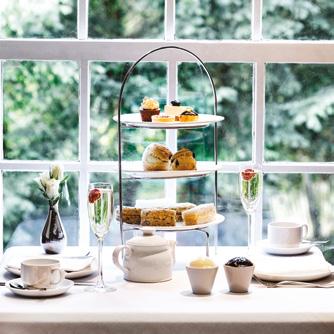



chocolate ganache for dessert. The food was simply delicious. One of the best meals we have had in a long time. It is worth visiting Brandshatch Place for the food alone and would make a lovely setting for a date night (without the kids) or a special occasion meal.
The breakfast selection was also great with numerous cereals, fresh fruit, pastries, muffins and toast to choose from – plus gluten-free options. We ordered Eggs Benedict and a Full English breakfast for the grown-ups and these did not disappoint. Breakfast runs from 7-9.30am Monday to Friday and 8-10am on Saturdays and Sundays, which is great for those children who are early risers.
Brandshatch Place has a 13m indoor swimming pool that is open for children in the
The spa uses ELEMIS and Jessica Nails products and we can highly recommend the Deeper than Deep Hot Stone massage: 55 minutes of pure relaxation being massaged with warm Balinese stones bathed in the frangipani body oil that realign your chakras and soothe aches and pains. The stones are worked deep into the muscles, getting into areas of tension. This is the perfect treatment for busy parents who want to unwind and relax. If you fancy coming back without the kids, the Spa offers spa days, spa breaks and natural wellness retreats.

mornings from 8-10am and in the afternoons from 4-6.30pm. While kids can’t use the steam room or sauna, there is also a hydrotherapy pool that is lovely and warm –plus lots of fun to sit amongst the bubbles.

“There are a range of outdoor games for families to enjoy”
In spring and summer, there are a range of outdoor games for families to enjoy, including a giant Jenga and Connect 4, badminton, croquet and bowls. The hotel supplied a Nature Hunt printout and the kids loved walking around the grounds trying to spot birds, animals and flowers. And if the great British weather is not on your side, the hotel has a selection of indoor board games to choose from, including Cluedo, Scrabble Jenga, jigsaws, chess, snakes & ladders, ludo and more. If you forget your wellies, the hotel has a selection in the lobby that can be borrowed for a muddy walk.
For the ultimate in pampering, make time to visit the Brandshatch Place Spa, which has seven treatment rooms, a relaxation room, and health club, including a gym, functional training room, personal trainers and ondemand classes. Finish your workout with a smoothie or coffee in the Atrium bar or simply relax in the lounge area.
To celebrate the school holidays, Hand Picked Hotels has launched the School Holiday Break, a special offer available for families to book for the Easter break, May half-term, Summer Holidays and October half-term 2024. Ideal for those who want to escape to the countryside or coast, it is available across 16 hotels in awe-inspired locations across the length and breadth of the UK.
The School Holiday Break allows children under the age of 12 to stay free* at Hand Picked Hotels, as well as giving families £100 Hand Picked credit, which can be spent across their award-winning restaurants and bars during the stay.
Starting with the most important meal of the day, a freshly cooked Hand Picked Hotel breakfast is included within the package for each morning, setting the whole family up for a day packed with adventure. At lunchtimes, evenings and for afternoon tea, the Hand Picked Hotels’ talented chefs can prepare delicious children’s menus alongside dining options perfect for adults.
A Hand Picked Hotel family break truly is for the whole family as the collection prides itself on being dog friendly. With around 31% of UK households owning a dog, Hand Picked Hotels knows that four-legged friends are part of the family. With designated dog-friendly bedrooms with easy access to outside spaces, as well as treats on arrival, Hand Picked Hotels offer a five-star treatment for all.
Hand Picked Hotels
(Handpickedhotels.co.uk) was founded in 2001 by owner and chairman, Julia Hands MBE.
* Applies to UK hotels only as part of the Half Term Break package. View the full terms and conditions here: handpickedhotels.co.uk/termsand-conditions/experiences
Georgina Probert looks at some of the best outdoor family-friendly activities to be found in West Kent this spring.
Kent is not called the Garden of England for nothing. With excellent travel links into London, busy and bustling towns, as well as picturesque villages and beautiful rolling countryside, there is so much here for families to enjoy. We look at just a few of the fun and fascinating activities and destinations to visit with your family.
Hever Castle (hevercastle. co.uk) is a mustvisit if you are coming to Kent. It has a huge open-air sandpit with climbing equipment and a slide, which is great for children of all ages. There’s also a play castle for older kids –be prepared to get lost in the winding corridors and many levels. We spent a good 15 minutes trying to get the kids out of there, as there were so many hiding places. There’s also a children’s play area with a zip wire, swings, climbing frames and more. If you visit when the weather is warm, the Water Maze is so much fun. The idea is to walk on the stepping stones to reach the tower in the middle and stay dry. But beware that some of them are booby-trapped and will squirt water at you
from different directions. We advise taking a change of clothes, as you will more than likely get wet. There’s also a (dry!) hedge maze right next to the actual castle, as well as a mix of long and short walks around the castle grounds. Stand on the loggia and admire the view of the lake. For more adventurous families, you can hire a boat and row around the lake.
“Stand on the loggia and admire the view of the lake”
A quaint little village, Shoreham is a great place for a slow family stroll. Shoreham has a mix of stunning properties and the adults spent most of
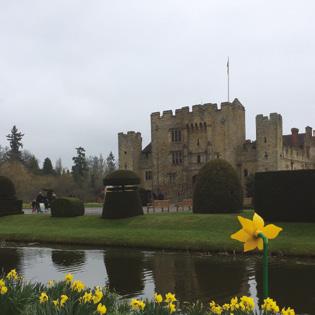
our walk deciding which house we would buy if money was no object. It is a quaint little village, with plenty of charm. You can follow the river and play ‘pooh sticks’ over the bridges. We walked from Shoreham along to the Castle Farm (castlefarmkent. co.uk) in Eynesford, which has the most amazing lavender fields that bloom from late June until late July. On a warm day, Eynesford is a great place to stop and have a paddle in the River Darent. At the Ford at Riverside, the water is very shallow and safe for children to play in. Adults can sit on the grassy bank and enjoy the view.
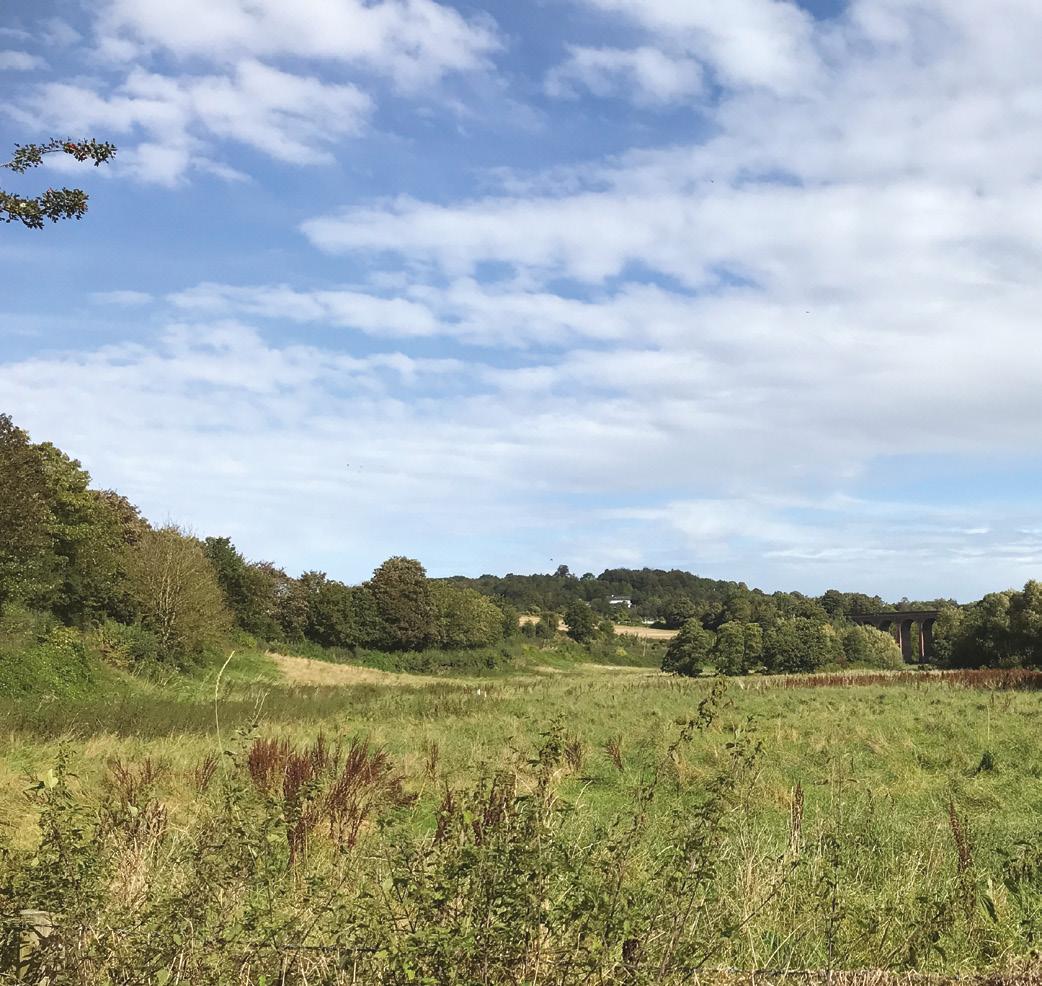
“You can follow the river and play ‘pooh sticks’ over the bridges”
Just a little further is Lullingstone Country Park (kent.gov.uk/leisureand-community/kent-country-parks/ find-a-kent-country-park/lullingstonecountry-park), which has 460 acres of chalk grassland and ancient woodlands with trails and walks, as well as a small playground and cafe. If you make the walk to Lullingstone, you will find Lullingstone

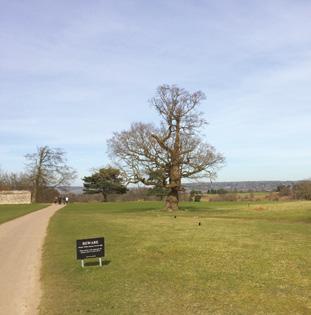
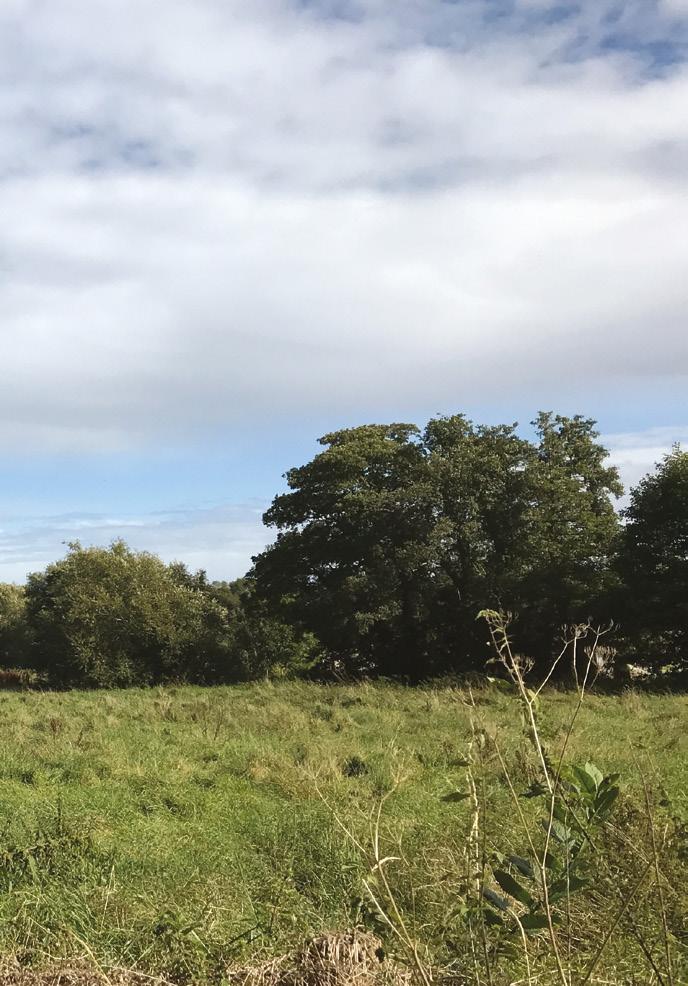
note is that parts of Knole overlap with the golf course, so be sure to look out for the signs that tell you when to give way for golfers.
Knole House is open to visitors and if you climb the steps in the Gatehouse Tower you can enjoy panoramic views from the top. There’s a bookshop with an area dedicated to children’s books, toys and games, and a great café with indoor and outdoor seating where you can get drinks, snacks and light lunches.

Castle & The World Garden (lullingstonecastle.co.uk), which is one of England’s oldest family estates, dating back to the time of Domesday. The Manor House and Gatehouse were built in 1497 and have been home to the same family ever since. Both Henry VIII and Queen Anne are known to have been regular visitors. Tom Hart Dyke’s innovative World Garden, laid out in the shape of a map of the world, pays tribute to the plant hunters of old and brings horticulture up to date with its daring plan to grow exotic blooms, outdoors.
“Knole is a great place to explore nature”
There are several National Trust (NT) properties to visit in West Kent, including motes and castles! Our favourites are Knole Park in Sevenoaks, Emmetts Garden in Ide Hill and Chartwell in Westerham, but there are many more to be explored in the county.
Set in acres of parkland and woodland, Knole (nationaltrust.org.uk/visit/kent/knole) is a great place to explore nature. Our kids spent hours climbing trees, spotting deer and riding their scooters along the paths. One thing to
Nestled in the lovely village of Ide Hill, Emmetts Garden (nationaltrust. org.uk/visit/kent/emmettsgarden) boast beautiful gardens, orchard walks and a recently refurbished children’s playground. We loved that most of the play equipment was made from wood and natural materials, and there were plenty of things for our kids to climb on, make noises with and explore. The woodland behind Emmetts also has lots of low-hanging trees, which are great fun to climb on. There are circular walks that come out in nearby Toys Hill, so you can walk off the delicious cakes and scones that are for sale in the Emmetts Garden cafe.
“If you visit when the roses are in bloom, you will enjoy some lovely sights and smells!”
The former family home of Sir Winston Churchill, Chartwell (nationaltrust.org. uk/visit/kent/chartwell) is steeped in history. You can follow the main paths that take you around the house and its many gardens, including the Rose Garden designed by Lady Churchill, and the Walled Garden, which is surrounded by an apple orchard and wildflower meadow. If you visit when the roses are in bloom, you will enjoy some lovely sights and smells! But there’s also plenty of space for kids to run around in the wider grounds, with walks around the lake, and a huge area of woodland. If you are prepared to trek up a steep hill, in the woodland are wooden swings and play equipment to be found, including a children’s fort, tree house, bomb crater and Canadian camp.
Knowsley Safari Park offers a fabulous mix of education, conservation and family fun. Located just off the M57, it’s easy to reach from anywhere in the northwest.
I visited Knowsley Safari Park with my brother and his family (children aged three, seven and nine years old) and there was a little bit of something for everyone. My brother, who can be hard to impress (and with high standards as he works for Chester Zoo!) was highly complimentary of the general ambience and
environment, maintenance and amenities.
Blessed with a rare dry day, we arrived bright and early for opening time and easily parked, right next to the facilities and Foot Safari. Toilets were clean and accessible, and coffee from the Coffee House was most welcome: ethically sourced beans were the first indication that conservation and preservation are high on Knowsley’s agenda.
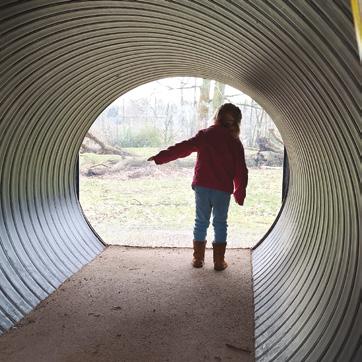
We decided to maximise on our early arrival and explore the Foot Safari first, heading for the Amur Tiger Trail where
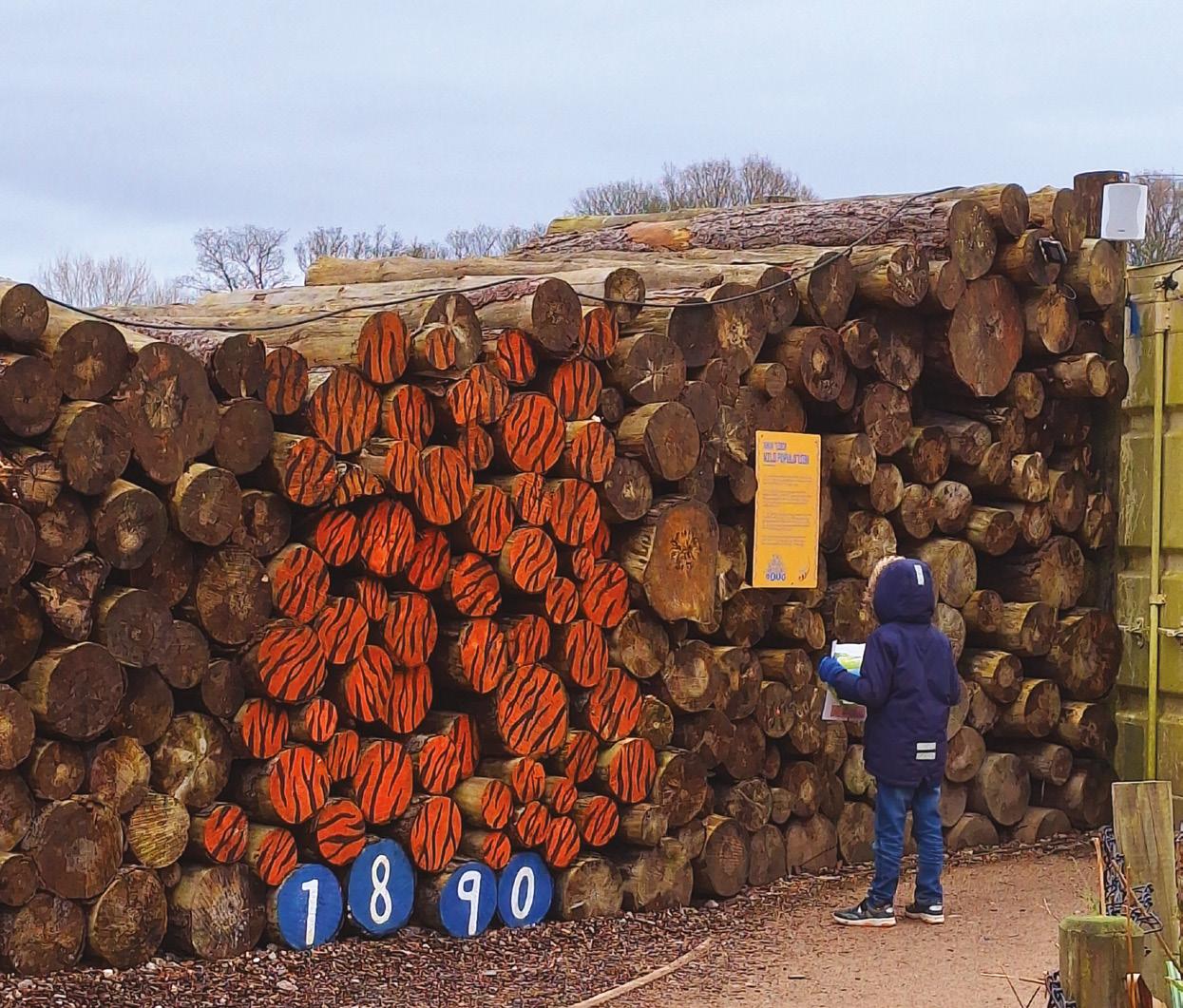

we had incredible views of the majestic creatures. The walking trails were quiet, spacious and well-maintained, and provided opportunities to learn about the animals – the maps and signs were colourful, concise and, most importantly, childfriendly. Small, discreet play areas, wobble bridges over streams and fun facts kept the children entertained. As adults, a visual yet sombre display reminded us of the decline in tiger numbers and why they are an endangered species.
Next, we encountered towering giraffes, mischievous bush dogs and inquisitive meerkats. Their separate enclosures oozed a rustic charm and were well planned, but not over manicured – mini adventure playgrounds for these curious creatures.
“Knowsley Safari Park offers a fabulous mix of education, conservation and family fun”
Talking of playgrounds, that’s where we headed next, encouraged by the younger members of the party: the fairground rides, giant sandpit and climbing frames being hard to miss! Although starting to get busier, it felt as though we still had space to breathe and the children were able to access all the different play areas. Be prepared, however, to spend some extra pennies here, as the fairground rides operate on a token system: £12 per wristband for unlimited rides or £1 a token. Easy to overspend with 3 children!
Distraction from the fairground swings came in the form of the Sea Lion show –an absolute must. This was a highlight for all ages and the noises of sheer delight echoed around the small arena. Guided by an experienced trainer and motivated by a
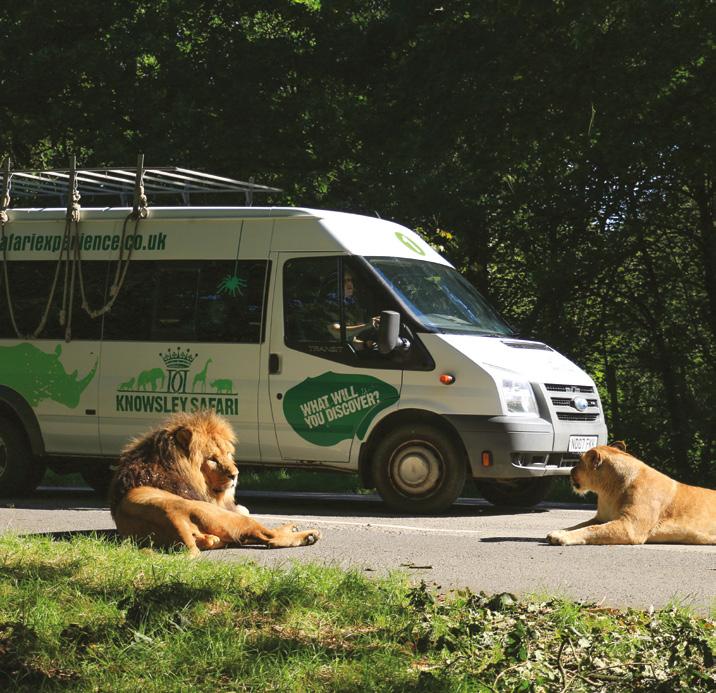
“The 550-acre safari drive is the longest in the UK and home to many different animals from around the world”
reward system of fish, Louie and Arthur (the sea lions) stole the show, showcasing their talents in the water and on land. Educational and entertaining in one mighty splash. If you don’t know the difference between a seal and a sea lion then you’ll certainly find out!
Another little tip is to not miss the viewing area outside, down a few small
steps where you can watch the sea lions swim. So graceful; a true moment of mindfulness. There were other talks available and with careful planning you could also, for example, watch a live display of the birds of prey or listen to a talk about the Nubian giraffes.
Lunchtime beckoned – having brought a picnic, we easily found somewhere to sit and recharge (there are plenty of picnic tables). If we’d fancied some hot extras however, there were outdoor food outlets selling tasty snacks.


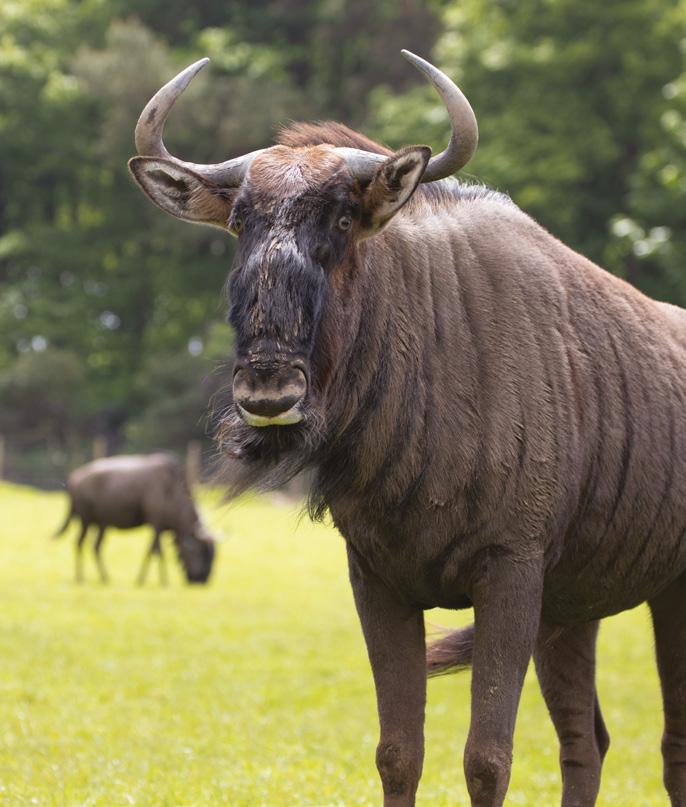
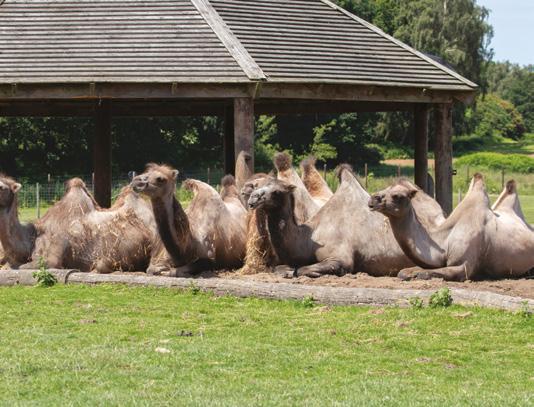
“Eastern Asia showcased camels, while Eurasia boasted the European bison – Europe’s largest living land animal”
It was now time to capture the magic of the Safari Drive. The 550-acre safari drive is the longest in the UK and home to many different animals from around the world. Entrance tickets allow you to drive around as many times as you want, so real value for money. The million-dollar question, of course, is whether to drive through baboon territory or to take the car-friendly (monkeyfree) route? My sister-in-law insisted on playing it safe, but we still saw lots of playful monkeys as we drove around the perimeter of the enclosure. The monkeys definitely do not uphold any green cross code etiquette and we did spot a few cars with baboons on the bonnets... and was that a windscreen wiper?
As we drove through the different zones – African Savannah, African Woodland, Southern and Eastern Asia and Eurasia, we were in for a treat. The African Savannah offered southern white rhinos, ostriches, buffalo and, of course, another majestic
cat: the African lion. Sprawled out in front of us, we were literally metres away from the pride relaxing in afternoon slumber (it’s recommended that if you want to see them at their most active, it’s best to visit first thing in the morning or late afternoon).
Eastern Asia showcased camels, while Eurasia boasted the European bison –Europe’s largest living land animal. A little patience is required at times, as queues do form at the most exciting places; lucky for us, due to a rare sighting of Father Christmas’ reindeer, my three-year-old niece entertained us with a good old sing-a-long of Jingle Bells.
On arrival, maps are provided, but for additional information, it is worth picking up a guidebook. These are beautifully presented, with a few activity pages included for children. Knowsley also offers the free “Knowsley Safari” companion App that includes facts and tips to enhance your visit.
Knowsley is one of those places that keeps on giving. It offers animal adoptions, animal experiences, parties, kids clubs for animal lovers... the list goes on. We had a brilliant day – loads to see and do, but at the same time, I didn’t feel too exhausted at the end!
For more information on Knowsley Safari Park or to book tickets, visit: knowsleysafariexperience.co.uk.

Mum of two teenage boys, Alex Youdan can usually be found standing on the edge of a muddy sports field! Outdoor adventures and walking Monty the Sprockerpoo take up a lot of her spare time, but she also enjoys curling up with a good book or an addictive series on TV (can’t wait for Bridgerton!). She has also been a primary school teacher for the past 20 years.
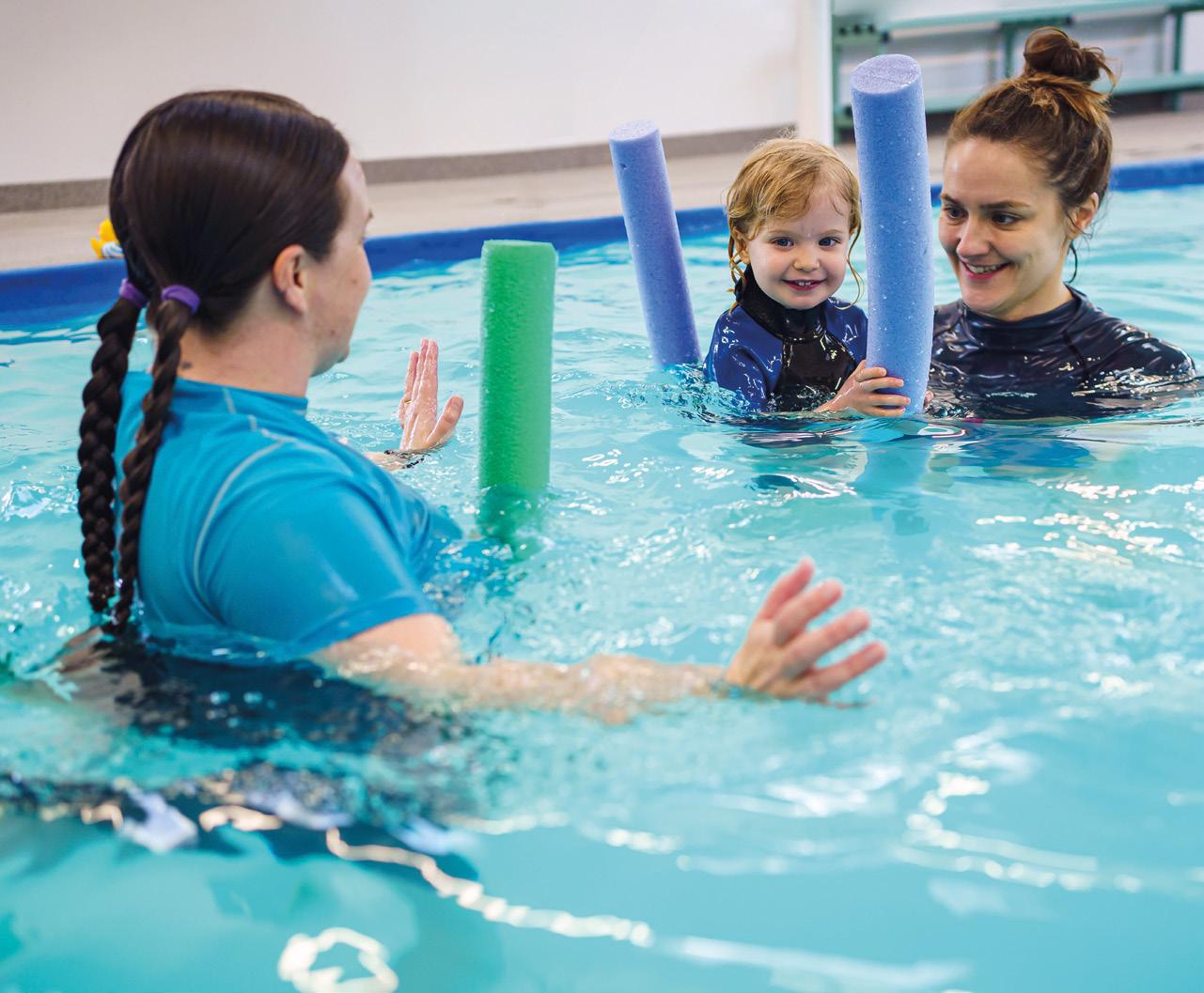


Joy Sable speaks with principal dancer at the Royal Ballet, Steven McRae, about why boys shouldn’t
be
afraid to try ballet and how fatherhood has added a new dimension to his dancing.

Cearly and it is vital children learn from a young age just how beneficial – and fun –exercise can be. Dance is one of the most enjoyable forms of exercise and its benefits are extraordinary. While many girls go to a weekly ballet class, dance is often overlooked as a suitable pastime for a boy.
all forms of dance, having personally experienced just how helpful lessons can be.
“Physically there are huge benefits,” says Steven. “The way that a dancer trains, you are essentially combining the attributes and technical requirements of all the Olympic sports into one. The strength involved, the quality of movement…it is not just a case of brute strength.”
He also says classes helped him socially, describing himself as a very shy child. “I was not comfortable speaking or communicating in that way, whereas the world of dance enabled me to
“The most important thing is that the passion is ignited and fuelled”
There are enormous gains to be had from taking any type of dance class. Steven McRae is a principal dancer with the Royal Ballet who, as well as having a supremely successful classical ballet career, is an amazing tap dancer too. He is a keen advocate for
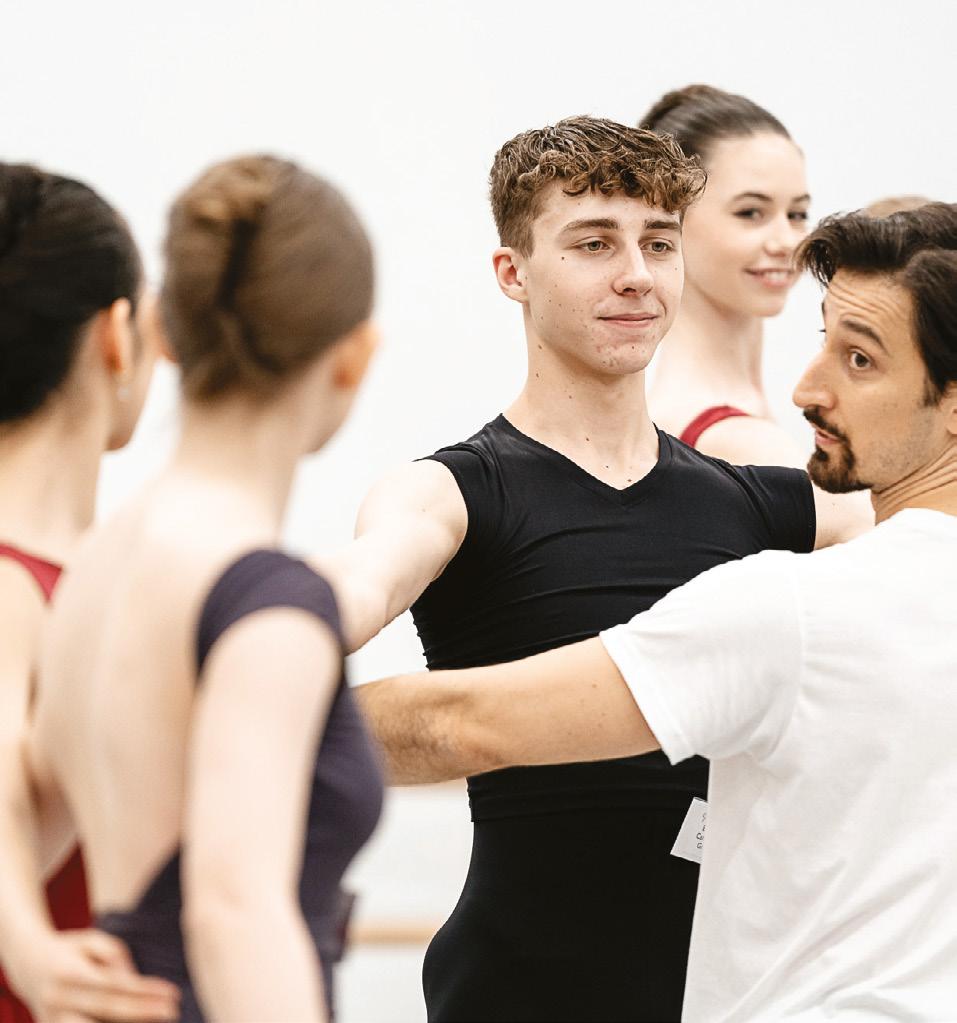
communicate and experience so many different things without even having to say a word, which in turn ended up encouraging me to have a voice. I love public speaking now. Dance helped me with that, in terms of having the confidence to stand in front of a room of people.”
For those who want to dance professionally, mental strength and resilience are key requirements in delivering a top performance at all times, but for children who take a dance class just for fun, there are still enormous benefits.
“In terms of young children at grassroots level, the mental health benefits are huge because it is an opportunity for them to escape the daily pressures of academic schooling. They can go to a lesson and feel a sense of freedom. They are sharing this unique artform – but it is also a sport – with other children of similar age perhaps going through similar things.”

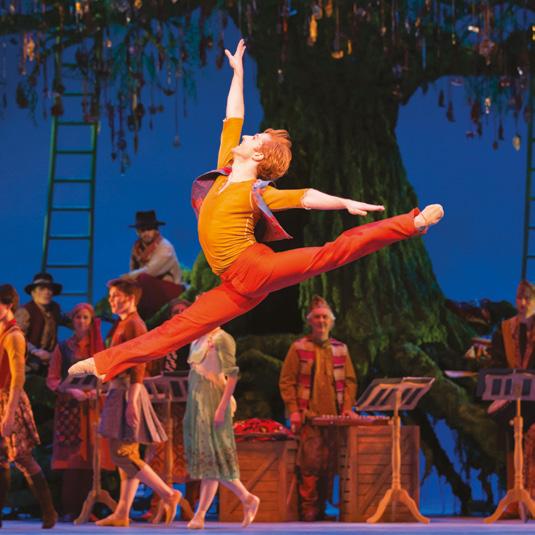
Fatherhood has had a profound effect on Steven and his approach to work – for the better
“The mental health benefits of ballet are huge”
Steven is eager for more boys to try ballet, even if they do not intend to consider it as a career. “The cliche has always been boys don’t do ballet, they are going to be teased. But I would honestly say to any parent, if your child has some sort of interest in it, or perhaps is really shy or is just not that into a particular sport, take them along to a dance lesson. Maybe don’t send them to a hardcore ballet lesson to start off with. Take them to a musical theatre class, or a tap class, something where they can really be free, express themselves and just dance along to the music. I don’t think children need to be doing hours and hours – just one lesson a week at a young age gives them that taste and let them lead and guide where it goes from there.
“I think sometimes dance schools scare off people because the traditional hardcore ballet training at a young age can be seen as quite intimidating, so it is just finding a fun path for kids to interact with dance for the first time – I think that is key. The most important thing is that the passion is ignited and fuelled and if that passion is there, then you can build on that, but it has always got to come from the child.”
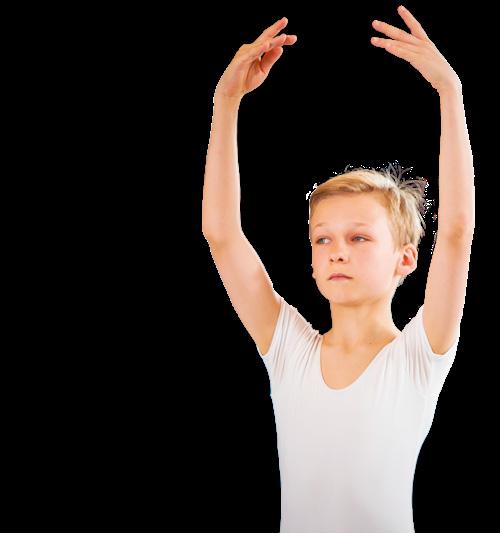


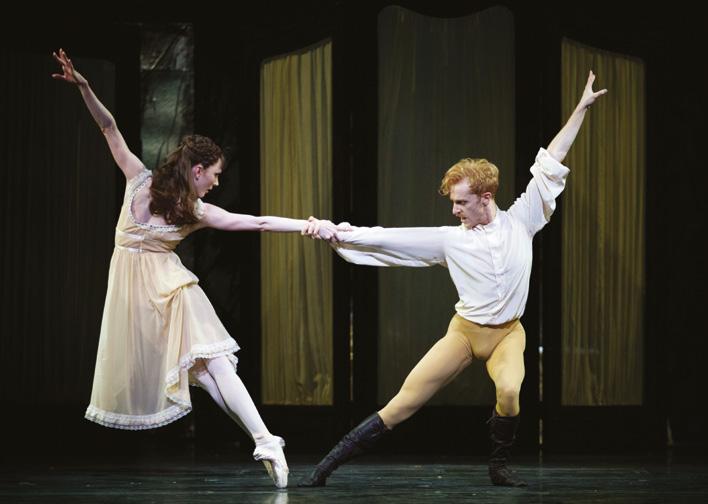
“The cliche has always been boys don’t do ballet, they are going to be teased”

Passion certainly fuelled Steven’s love of dance. He left his family in Sydney, Australia as a 17-year-old to train at the Royal Ballet School in London. Now he looks back on that separation as “brutal” but says that the sacrifice was necessary for him to further his career. During training he met another dance student, Elizabeth Harrod, and the two dancers married and now have three children – a girl and two boys.
Fatherhood has had a profound effect on Steven and his approach to work – for the better. “Our profession requires a huge amount of dedication and focus. It is not your typical nine-to-five job. It is very easy to become quite selfish because you have to do what is absolutely best for you to deliver what needs to be delivered on that stage.
“Of course, any parent knows that the second you have a child there is no such thing as the selfish element any more, because you are never number one. Your child is always number one. It has really taught me the importance of finding a healthier work/life balance – that was very much non-existent before I had children.”
It has also given an added dimension to his dancing. “Having the children has heightened the highs and the lows in terms of life experience. If there is a scene in a production about death, I’ve had moments where I’m on stage and my children
are flashing in front of my eyes. It does emotionally turn the intensity up because there are these little people in my life that are the absolute world to me, so you cannot help but be impacted by that.”
Steven has had two big injuries during his long career and his children have seen how he has endured major surgeries and intense rehabilitation sessions to return to the stage. “It’s been very valuable for them to witness it first-hand. Professions like ballet conjure up these potentially glamorous images in people’s minds and they don’t really understand what it takes to get out there and perform at this level. My children have learnt you have to really go beyond a normal level of dedication to deliver and produce what is required for that particular profession.”
Steven’s experiences point to a life of exceptionally hard work, which has brought great rewards but can also be fun. So perhaps the question should not be, “Why should my son do ballet?” but “Why not?”
If you are interested in finding out about dance classes near you, the Royal Academy of Dance has a register of teachers specialising in classes for children of all ages. Visit royalacademyofdance.org for more information.
This Easter, the RAD is holding a celebration of boys and men in dance on the weekend of 6th – 7th April in London. Alongside a dance competition, there will be workshops on all kinds of dance. Details from the RAD website (see above).
The Royal Opera House runs a Create & Dance programme for primary and secondary schools across England, with classroom-based and digital activities. The Royal Opera House also holds several subsidised matinees, especially for schools, throughout the year. Find out more details at roh.org.uk


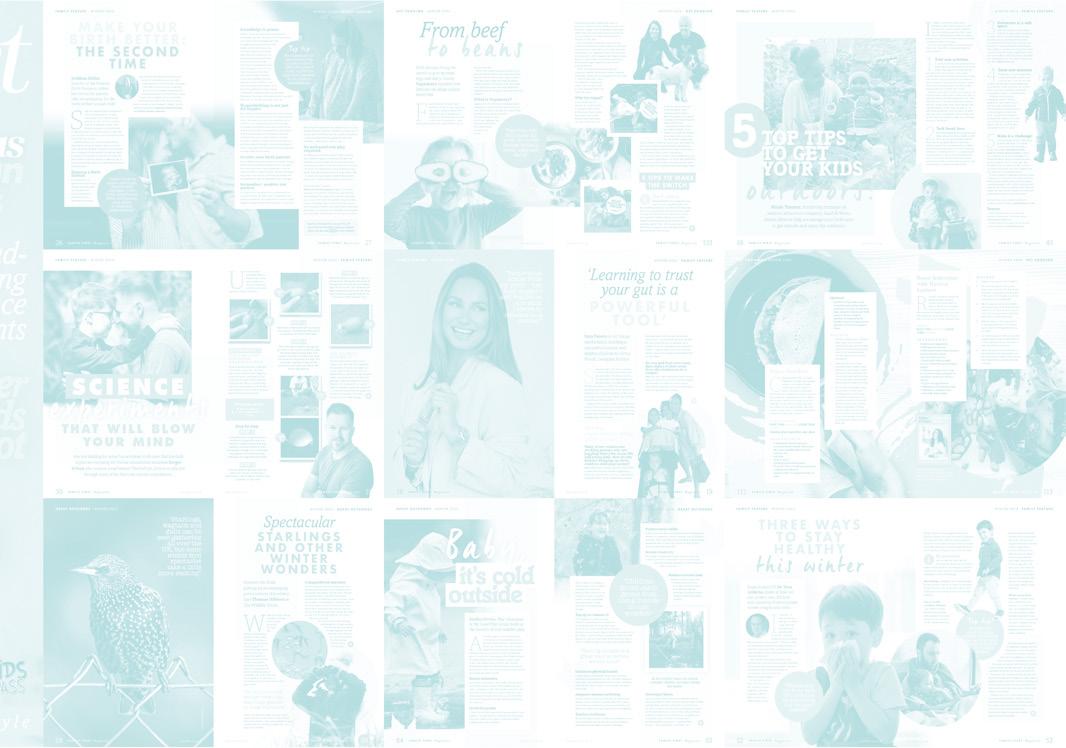





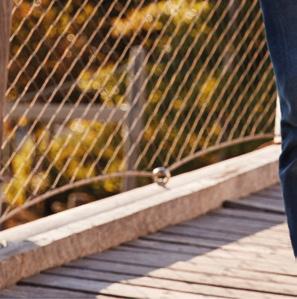




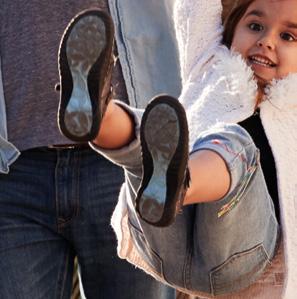






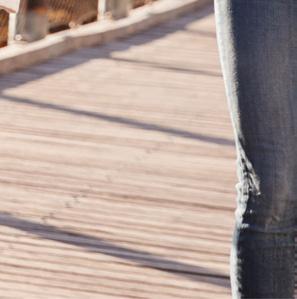





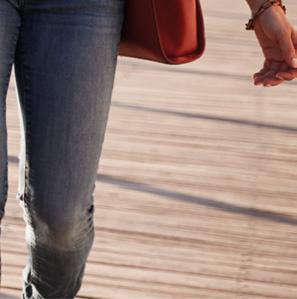


Norton 360 Deluxe

Norton 360 Deluxe provides powerful layers of protection for your devices and online privacy against cyberthreats - all in a single solution.



Plus, we scan the Dark Web for your personal information and notify you if it’s found.

When connecting to Wi-Fi your online privacy has protection with bank-grade encryption from our Secure VPN.



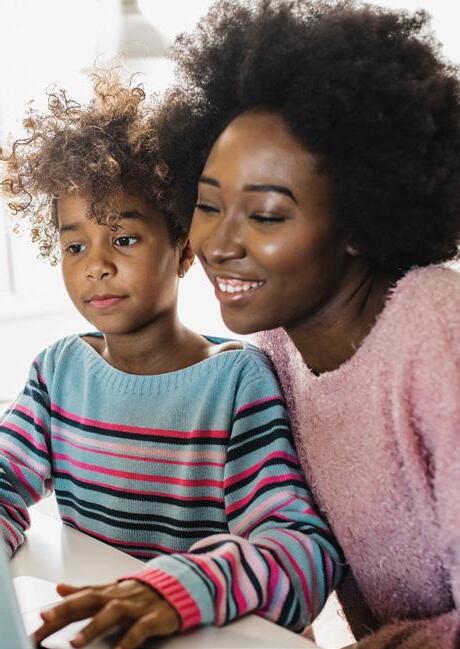





Real-time Threat Protection
Advanced security with antivirus helps protect against existing and emerging online threats to your device, and helps protect your private and financial information when you go online.
Secure VPN
Browse anonymously and more securely with a no-log Virtual Private Network (VPN). Add bank-grade encryption to help ensure the information you send and receive is secure and private.
Parental Control‡
Manage your children’s activities online. Help them explore, learn, and enjoy their connected world more safely on their PCs or smartphones.
Password Manager
Tools to easily generate, store, and manage your passwords, credit card information and other credentials online – more securely.
PC Cloud Backup1,2
Store important files and documents as a preventive measure against data loss due to hard drive failures, stolen devices and even ransomware.
Dark Web Monitoring§
We monitor and notify you if we find your personal information on the Dark Web.
SafeCam for PC2
Alerts you to attempts to access your webcam and helps you block unauthorized access to it.
Smart Firewall for PC or Firewall for Mac Monitors communications between your computer and other computers and helps block unauthorized traffic.
Sports writer Caroline Kings speaks to Olympic triathlete and new mum Jessica Learmonth about balancing motherhood with training.
Idon’t know what you were doing three weeks after giving birth, but getting on a bike and contemplating an Olympic Games was not what I was doing – a ‘marathon’ feeding session, maybe, but that was the extent of it.
British triathlete Jessica Learmonth does have her sights set on the Paris games this summer despite giving birth just last September to Freddie, who is bright-eyed and gurgling during our interview.
Jess is warm, down-to-earth and pragmatic about life. She was a really sporty child – she was a freestyle national champion, as well as playing golf and football for Leeds United’s women’s academy – but didn’t necessarily see herself as a professional athlete.
In her twenties, like many of her peers, Jess had a 9-5 job: hers was in a gym, saving up to go travelling with her partner. “I was just a normal person with a normal job,” she says.
Doing a triathlon was her challenge to lose some weight when she returned from travelling aged 22. She was naturally really good at it, recording great times and “getting her foot in the door” with British Triathlon (which, by coincidence, is based in her hometown of Leeds).
“I came off the HRT and two weeks later in December 2022, I was pregnant! It was a real surprise”

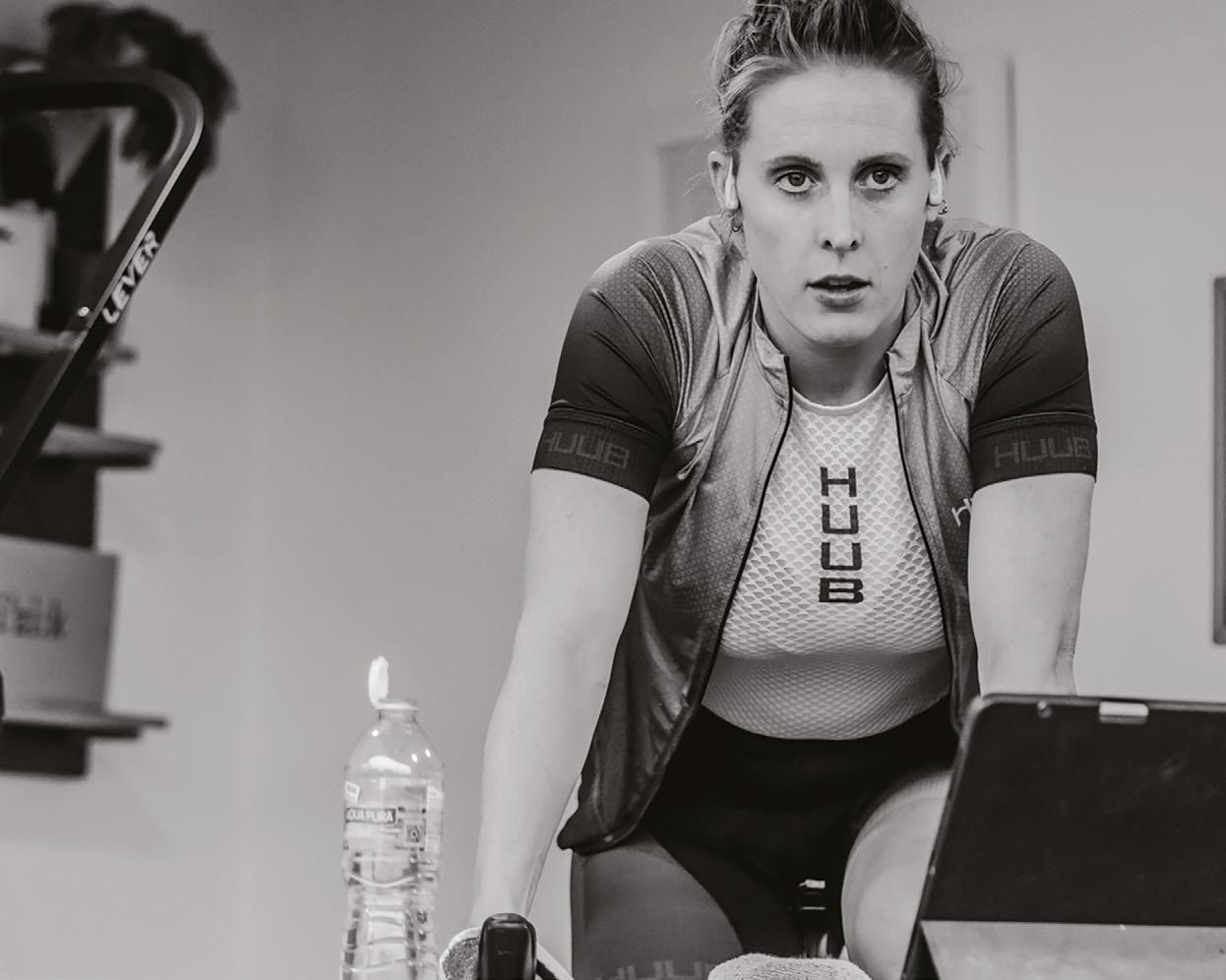
This unexpected turn of events, which led to Jess becoming a professional athlete, has stood her in good stead when it comes to being a mother, as that happened by surprise too. “I thought I would have to retire to have children. I hadn’t had a period for years and had started on HRT to try to regulate my cycle. I came off the HRT and two weeks later in December 2022, I was pregnant! It was a real surprise,” says Jess.
“I had just recovered from a serious hip injury; I was on crutches for six months, so the pregnancy was a silver lining after my injury and recovery process. I was preparing to start the training, qualification and selection process for the Paris 2024 Olympic Games and so I had to have a very different conversation with British Triathlon.”
“I thought I would have to retire to have children”
Luckily, British Triathlon has been immensely supportive of Jess and her pregnancy, unlike other sports and sportswomen who hit the headlines last year. They understood that the Paris Olympics were on the horizon and asked Jess to come back once she’d had the baby to discuss her future plans, making it clear that they would support her however she felt about competing at the highest level. Throughout the pregnancy and since, they have provided specialists to monitor her pelvic floor, check her blood and even assist with breastfeeding.

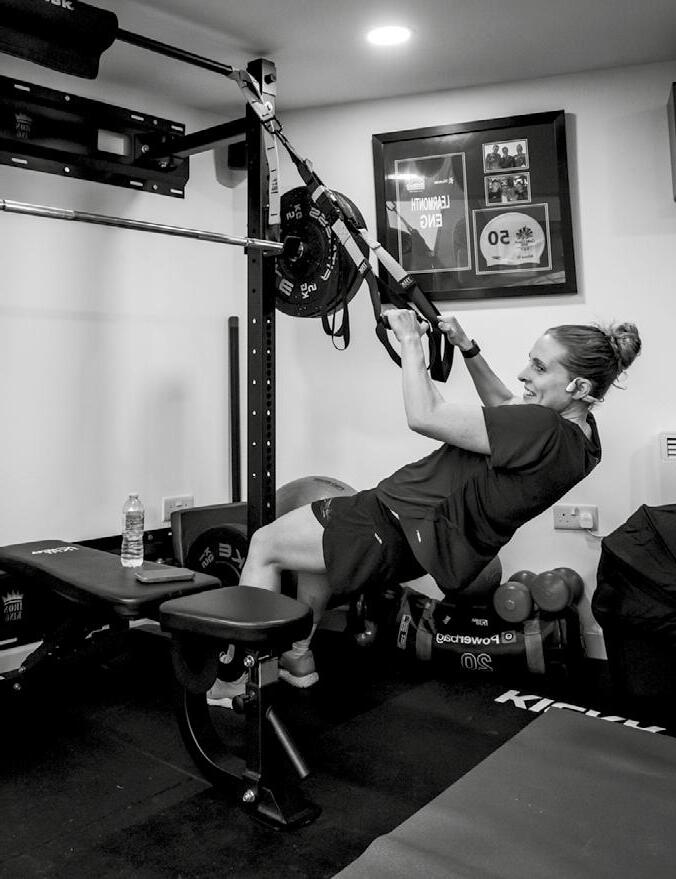
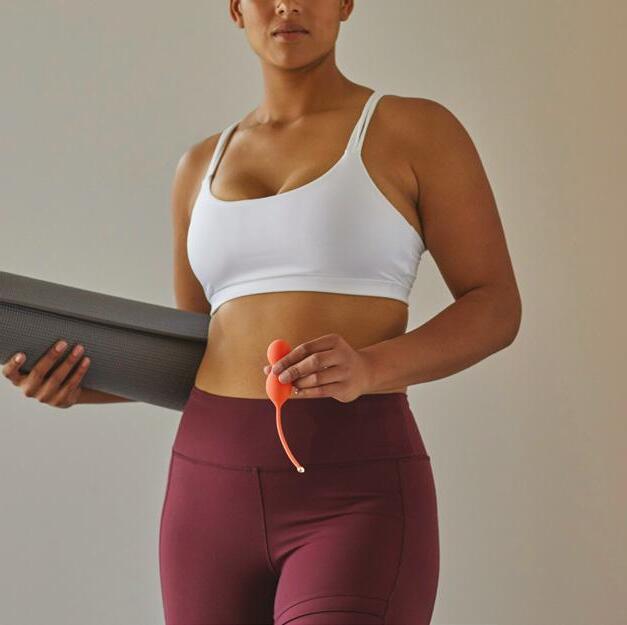
2023 was very different to how Jess and her team had anticipated it. She didn’t compete because of her pregnancy, but she did continue to train. She admits that for elite athletes there isn’t much guidance on training and pregnancy because the majority of sports research is performed on men. “I had to find my own way, really. I trained quite a bit and I stayed active in the gym. I did everything I could apart from ride [on a bike] outside.”
A few people tutted as she ran around the Yorkshire country lanes, but most people were supportive of her keeping fit. She ran the day Freddie was born and actually tore her calf muscle. Jess felt strong and healthy throughout the nine months,
enjoying a smooth pregnancy and she attributes that to exercise. She was training about 25 hours a week, which she doesn’t advise if that’s not your norm! “But I think if you are active and you live an active lifestyle, then keep doing that.”
“I’m just going to love this and do my best”
Training is a little more complicated with Freddie around, but Jess is still managing about 15 hours a week. Before you start comparing yourself to her, let’s remember that this is Jess’s job and she has experts on hand to make sure she’s fit and able!

As well as the routine check by the doctor, Jess’s pelvic floor was checked at 4, 6 and 12 weeks after giving birth by a pelvic health physiotherapist. Fortunately, there has been more research in this area of women’s health: running too soon after having a baby might have serious health implications in the future, such as a pelvic floor prolapse (see the box for more information on the importance of pelvic floor health checks). Jess didn’t return to running until the recommended 12 weeks after having Freddie.
Jess admits that she’s had to change her perspective on training now that she’s a mum: “My mindset has completely flipped, which is difficult for athletes. I’m so used to being strict and dedicated and now I can’t go swimming sometimes. If he’s had a bad night, then I’ve had a bad night and if I have a race then there’s extra planning around who can look after him.”
Breastfeeding is one of those challenges that Jess is facing, which also involves taking on more calories. Luckily, she made sure that Freddie could take a bottle from very early on, which has come in useful this year as she starts to try to qualify for Paris.
The British female triathlete squad is strong, which is great for Britain’s medal chances at the Olympics, but means it might be difficult for Jess to make it across the Channel. She will have to enter qualifying races like everyone else and be successful to be selected. She has missed a considerable amount of race time due to her pregnancy and the hip injury before that.
Her experience at the Olympic Games and big competitions stands her in good stead, though. She competed at the Tokyo Olympics, which were delayed because of Covid to 2021 and won a gold medal, but says that she would like to be able to attend a ‘normal’ Olympic Games: in Tokyo, there wasn’t a crowd and they had to fly home two days after competing due to the pandemic. She even mentions competing at the 2028 Olympic Games if she can perform to a high enough standard and isn’t ‘aged out’.
But Jess will likely take all of it in her stride. She hasn’t been striving for sporting greatness since she was a child like many other athletes and is aware of how fortunate she is. “I could be working full time and I’m not, so I’m just going to love this and do my best. I go to races and think, ‘Well, this is brilliant!’” And we’re sure Freddie thinks so too.
“My mindset has completely flipped, which is difficult for athletes”
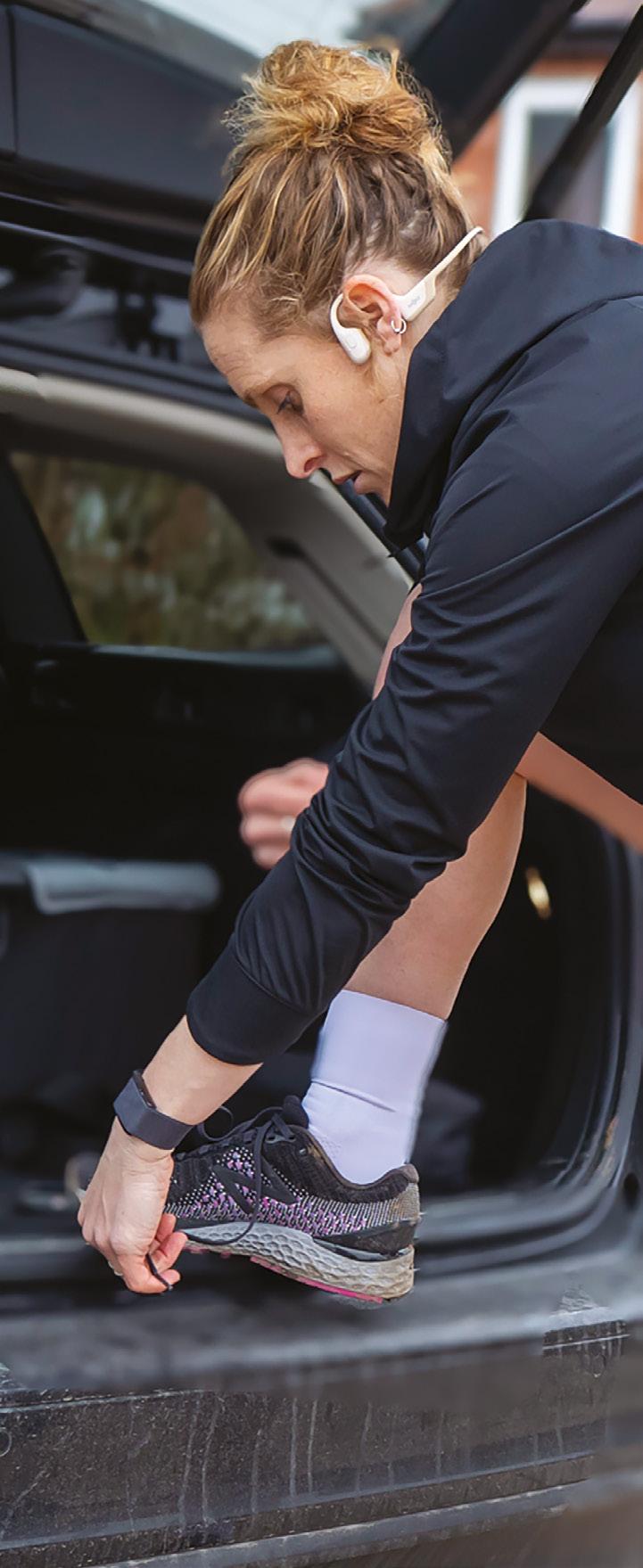


Women’s health physiotherapist, Aishling Burke, explains the importance of seeing a health professional after having a baby.
Studies have shown that postnatal exercise has a positive impact on a new mother’s mental and physical health. However, knowing when to start can be daunting. I see a growing group of women who were regularly exercising pre-baby, itching to return to lifting weights or pounding the streets within a matter of weeks after the arrival of their little one.
My initial advice is to acknowledge what you have just done and be kind to yourself! Post-Covid, the six-week postpartum check has been combined with the appointment for baby’s first set of jabs, so it usually occurs at eight weeks post-birth. It’s after this check and the ‘all clear’ from the doctor that many women feel it’s safe to return to exercise, but every woman is different and there isn’t a ‘one size fits all.’ This is where pelvic health physiotherapists come in.
Also known as women’s health physiotherapists, we are therapists located within many NHS trusts or in private practice, who specialise in the treatment and rehabilitation of women at various stages in their lives. No matter how fit an individual was before baby, pregnancy and delivery
can really take its toll on the body and it’s important that we know how best to recover and return to exercise. All too often, I see women in clinic 15-20 years post-baby whose issues could’ve so easily been rectified at a postnatal review.
A postnatal review by a pelvic health physiotherapist can provide a detailed assessment and programme to aid recovery and get you back to exercise. This consultation allows the therapist and mother to speak openly about:
Baby’s delivery.
Screen for any pelvic floor muscle issues, discussing the muscles’ function and the role pregnancy can play on these structures.
Chat about bladder or bowel function and any problems that might have occurred in pregnancy or postpartum (leakage/ urgency/increased frequency).
Rule out pelvic pain (or pain with intercourse).
Assess for abdominal separation.
Check for any musculoskeletal issues (aggravating factors, e.g. repetitive lifting and holding of baby causing back pain, prolonged fixed postures like perched on the edge of the bed with nightly feeds) or wrist pain (the nightly scrolling while searching for answers to common postnatal issues in the middle of the night).
Pelvic health therapists are uniquely placed to help and support women at this huge milestone and often work closely with Pilates and yoga practitioners who all can play a huge part in an individual’s rehabilitation post-baby.
Aishling Burke is a men’s and women’s health physiotherapist based in Kent at Restore Physiotherapy (restore-physio. co.uk).
Caroline Kings is a writer and the co-founder of We Are Girls in Sport (wearegirlsinsport.com), which aims to help girls find a sport they love and stick at it.
Thanks to Jess’s sponsors Aqua Pura, Shokz, HUUB, New Balance and Thule for the use of these images.

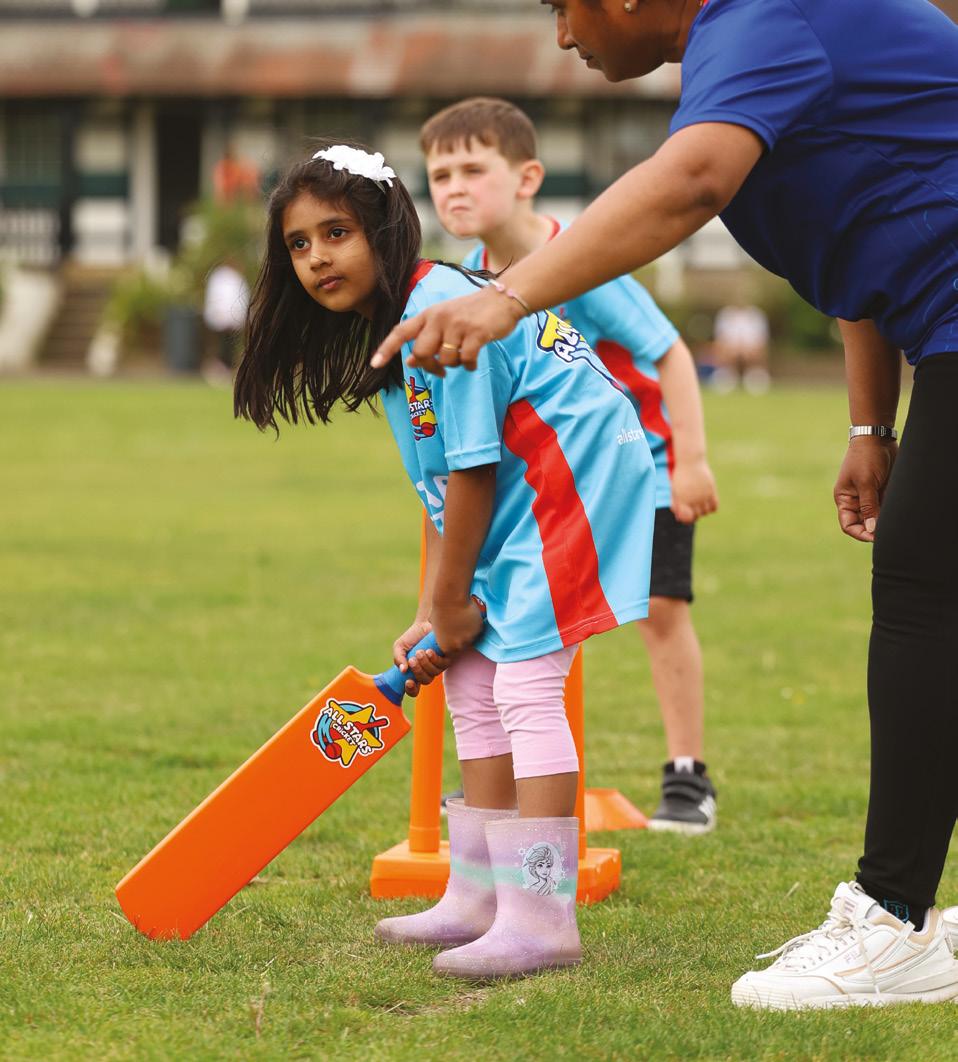
Research from the England and Wales Cricket Board (ECB) shows more than 1.1 million children played cricket in 2023 through ECB programmes. Could your child be next?

Has your child caught the cricket bug yet? With the England Men’s Test series against India and England Women playing against New Zealand, cricket has been dominating the sporting headlines for weeks. So if you’re looking to introduce your kids to an exciting, healthy and fun way to pass the time, cricket could be the perfect option – at exactly the right time!
“Different versions of cricket are available for people at all stages of life”
Across England and Wales, more than 2.6 million people now play cricket. Nine out of 10 (89%) say playing cricket makes them feel good about themselves and almost four out of every five (78%) say cricket has helped them to develop essential skills for both their personal and professional lives.
Research has shown that cricket also helps young people to achieve greater levels
of confidence, happiness and a sense of worth. Cricket’s lifelong appeal is another brilliant reason to get your child involved. As we age, some sports become inaccessible. But different versions of cricket are available for people at all stages of life, meaning there’s never any need to stop playing.
The ECB, the game’s national governing body, is committed to making cricket the most inclusive sport in England and Wales. “We want cricket to be open to all, so that its positive impact reaches as far and as wide as possible and its benefits can be enjoyed by everyone, regardless of gender, background or disability,” says ECB chief executive Richard Gould. Its two key national programmes for children’s cricket –All Stars and Dynamos Cricket – have taken the sport to 350,000 youngsters since their launch in 2017 and 2021 respectively.
“The emphasis is on fun, with soft balls and light wooden bats making it easy for anyone to take part”

For children just setting out on their cricket journey, the ECB’s flagship All Stars initiative is the perfect introduction for any young bundle of energy. Over an eight-week programme, children are introduced to basic skills such as batting, throwing, bowling and catching. They also develop teamwork and communication skills. But more than anything, they have nonstop fun and make friends along the way. All Stars isn’t a competitive cricket environment. It’s a place for your child to develop a love of cricket in an engaging, happy and exciting environment. In fact, it’s so much fun that mums and dads are encouraged to take part too! Each session lasts 60 minutes and they’re run at more than 2,200 registered clubs and centres across England and Wales. Every coach and venue is safe and fully accredited. The programme is designed to be inclusive and adaptable, helping to make fun first experiences of cricket accessible to all. And all children taking part receive a free backpack full of goodies – including a cricket bat, ball and personalised T-shirt. 83% of parents say their child’s confidence has been boosted by taking part in the ECB’s All Stars and Dynamos Cricket programmes.
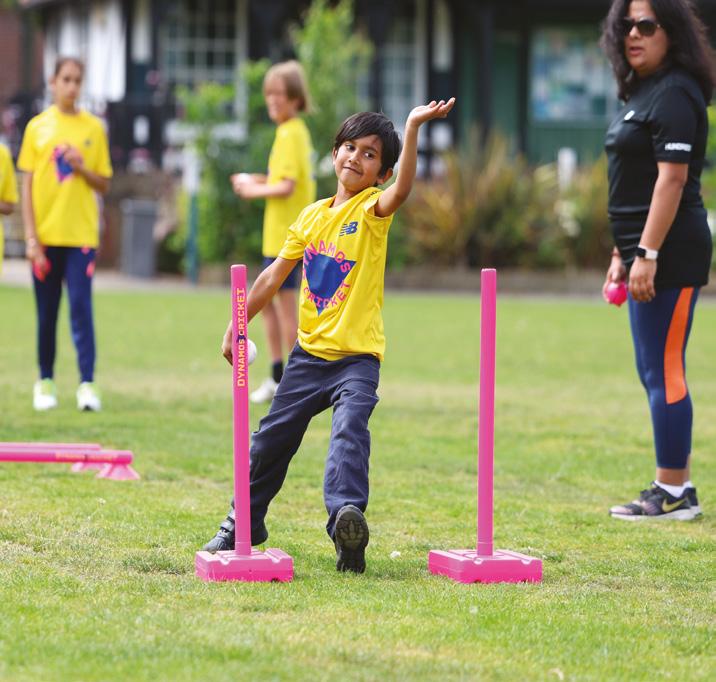
Designed for children that little bit older, Dynamos takes cricket to the next level –regardless of whether your child is brand new to the game or has already taken part in the All Stars programme. Once again, the emphasis is on fun, with soft balls and light wooden bats making it easy for anyone to take part.
Like All Stars, Dynamos is an eight-hour programme in which parents are welcome to take part. As well as developing their confidence and social skills, the children are introduced to game play with an exciting countdown cricket match, similar to the match format played at The Hundred. There are lots of goodies, too. A personalised New Balance T-shirt comes as standard, alongside access to the brilliant Dynamos Cricket app full of videos, challenges, demonstrations and interactive quizzes that encourage your child to keep active.

As well as being a doctor in Nottingham, Henal Desai is also an All Stars and Dynamos Activator, running sessions in her local area. From her own first-hand experience, she says cricket can have a powerful and lifelong impact on youngsters who get involved with the sport.
“This isn’t just about exercise and being outside in the fresh air, which both help with a child’s well-being, it’s about contributing to all areas of their life,” she says. “At these All Stars and Dynamos sessions, they’re getting to know children from different walks of life in an inclusive and welcoming environment. You don’t just
“You see them evolve as a person, from a shy child to someone who’s learned both cricket and life skills”
talk about cricket, you talk about school, life, what they’re doing at the weekend.
“You see them evolve as a person, from a shy child to someone who’s learned both cricket and life skills – particularly communication, teamwork and the power of a supportive friendship group. Over a matter of weeks, you’ll see someone trying to figure out what cricket is, and a few weeks down the line they’re holding the bat properly, hitting the ball, smiling and having a great time learning new skills. That gives me a purpose beyond anything I could have imagined.”
This summer, there’s an absolutely packed schedule of cricket in England and Wales to keep your children excited, engaged and keen to continue their own cricket activity. Both England Men’s and Women’s teams face off against Pakistan in May. The Women’s team have a series against New Zealand in June. The Men’s team challenge West Indies. And, domestically, the fourth edition of The Hundred will put you on the edge of your seat all across the country. So don’t miss the opportunity to get your child involved and reap both the mental and physical benefits of cricket. It could be the start of a lifelong adventure!
The ECB is the national governing body for cricket in England and Wales. It oversees England’s national teams as well as domestic and recreational cricket. Its All Stars and Dynamos participation programmes are designed to get children active and having fun nationwide. For more information, visit: ecb.co.uk/play.
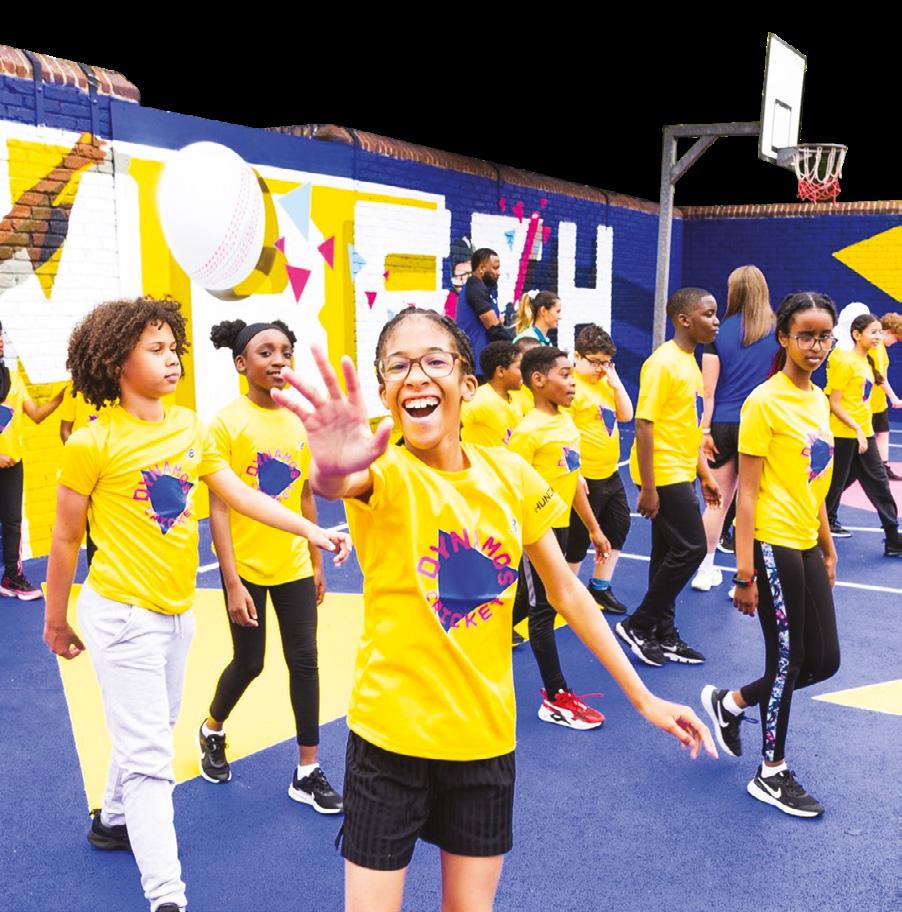
Family First rounds up the best places in the UK that you can take your kids for a meal out during the Easter holidays – and they eat for free!
With the Easter holidays fast approaching, parents are eagerly searching for ways to entertain and treat their little ones without breaking the bank. One fantastic option for families looking to save some pennies while enjoying a meal out is taking advantage of the many restaurants offering ‘kids-eat-free’ deals. From classic pub grub to international cuisine, there are plenty of options to cater to every taste bud and budget.





Beefeater Grill
Restaurant - Two kids (under 16) get a free unlimited breakfast with every adult breakfast purchased. Find out more: beefeater. co.uk/en-gb/school-holidays
Bella Italia - Kids can enjoy a free meal, all day, every Thursday and for just £1 on Sunday to Wednesday between 4pm-6pm when an adult meal is purchased. Find out more: bellaitalia.co.uk/kids
Bill’s - Up to two kids can eat free all day from 25th March to 12th April (excluding Saturday and Sunday), if one adult orders any main dish (breakfast, lunch or dinner). Find out more: bills-website.co.uk/events/kids-eatfree-march/
Brewers Fayre - Up to two kids (under 16) can eat a free breakfast with any purchase of a £10.99 adult unlimited breakfast. Find out more: brewersfayre.co.uk/en-gb/ school-holidays
Dobbies Garden CentresEnjoy a free children’s breakfast with any adult traditional or full breakfast or a free child’s hot meal or pick n mix lunch box with any adult main course. This offer is available every day and also includes a free child’s drink. Find out more: dobbies.com/restaurants/offers




Morrisons Cafés - Kids (under 16) eat free all day, every day when an adult buys a meal over £4.50. Find out more: my.morrisons. com/kids-eat-free---tscs/
Pausa Cafés at Dunelm - All day, every day, for every £4 spent by an adult in the cafe, kids can enjoy a free mini meal deal (includes a main, two snacks and a drink). Find out more: dunelm.com/info/about/pausa-coffee-shops
Premier Inn - Two kids (under 16) can eat breakfast for free with every adult purchase of a full breakfast or meal deal. Find out more: premierinn.com/gb/en/why/food/ breakfast.html
Preto - Kids (under 10) can eat for free all day at the weekend, from midday during the school holidays and from 4pm on weekdays with a paying adult. Find out more: preto.co.uk/offers/ children-eat-free



Purezza - Children (under 10) get a free mini pizza with every adult meal purchased – all day, every day. Find out more: purezza.co.uk/ kids-eat-free/
Tesco Cafés - Choose a kid’s sandwich, piece of fruit, two snacks and a drink for free with any adult purchase in a Tesco Café during the school holidays, Monday to Friday. Find out more: tesco.com/zones/tesco-cafe/kidsmenu
The Real Greek - From 29th March to 14th April, kids (under 12) eat free when an adult spends £10. Find out more: therealgreek.com/offers/
In the heart of the birthing world, where fear and beauty intertwine, stands Emma Armstrong — a beacon of strength, humour, and unapologetic authenticity.
Mother of two and conqueror of life’s tumultuous waves, Emma is not your ordinary birth influencer. She is a doula, a hypnobirthing practitioner, and an accidental illustrator turned author, whose journey into the realm of childbirth was ignited by personal loss and fueled by an indomitable spirit.
Emma entered the birth world at a time of profound personal upheaval. Losing her mother to cancer during her first pregnancy, she faced the stark reality of life and death, of beginning and end, all at once. This crucible of loss and love didn’t dampen her spirit; instead, it catalysed her transformation into a guiding light for women navigating the journey of childbirth.
With a vocabulary as colourful as her illustrations and a wit sharp enough to cut through the most overwhelming subjects, Emma has made it her mission to demystify childbirth. She tackles the dense fog of fear surrounding birth with humour and grace, breaking down the “boring, overwhelming shit” into something fun, resonant, and palatable. Her approach is not just about educating; it’s about empowering women and couples worldwide through content and courses that are as enlightening as they are engaging.
Emma’s reach and impact are nothing short of phenomenal. Her bestselling course and flashcards have touched the lives of over 40,000 individuals, while her online community boasts over 160,000 members. But numbers only tell part of the story. Behind each figure lies a transformation narrative of women and couples who have found their strength and voice through Emma’s guidance.
“Emma’s reach and impact are nothing short of phenomenal. Her bestselling course and flashcards have touched the lives of over 40,000 individuals.”
Her journey is a testament to the power of facing fear head-on. Emma understands that fear operates on a low-frequency vibration, fostering a negative energy that can limit our beliefs and close our minds to alternative narratives and possibilities. Through her battles with body dysmorphia, anxiety, depression, loss, grief, and anger, she has learned that true power lies in mastering fear, not in fleeing from it. This realisation is at the heart of her mission: to ignite a spark within others, helping them to discover their inner fire and potential.
Emma’s passion is palpable. She fiercely advocates for autonomy, choice, and inner self-exploration. Her book, “The Fearless Birth Book,” is more than just a guide; it’s a manifesto for reclaiming the birthing experience. Emma cuts through the mass of opinions, ideas, and, frankly, bullshit that surround birth, focusing instead on the fears and limiting beliefs that hold women back. Her message is clear: fear is the root of many problems, but it can also be the catalyst for growth and transformation.
Emma Armstrong is not just a birth expert; she’s a companion, a confidante, and a guide. She offers tools, tricks, tips, and, most importantly, a spark to help women navigate their birth journey with confidence and power. In a world full of fear and uncertainty, Emma stands out as a fearless goddess, inspiring others to embrace their strength and emerge from their experiences transformed.
In every word she writes, every class she teaches, and every illustration she creates, Emma embodies the fierce energy, compassion, and love essential for navigating the complex world of birth. Her story, mission, and impact are a beacon of hope and empowerment for anyone looking to find their way through the beautiful, challenging, and transformative experience of bringing life into the world.
Find Emma on instagram: instagram.com/ thenakeddoulaofficial

“Her journey is a testament to the power of facing fear head-on.”





















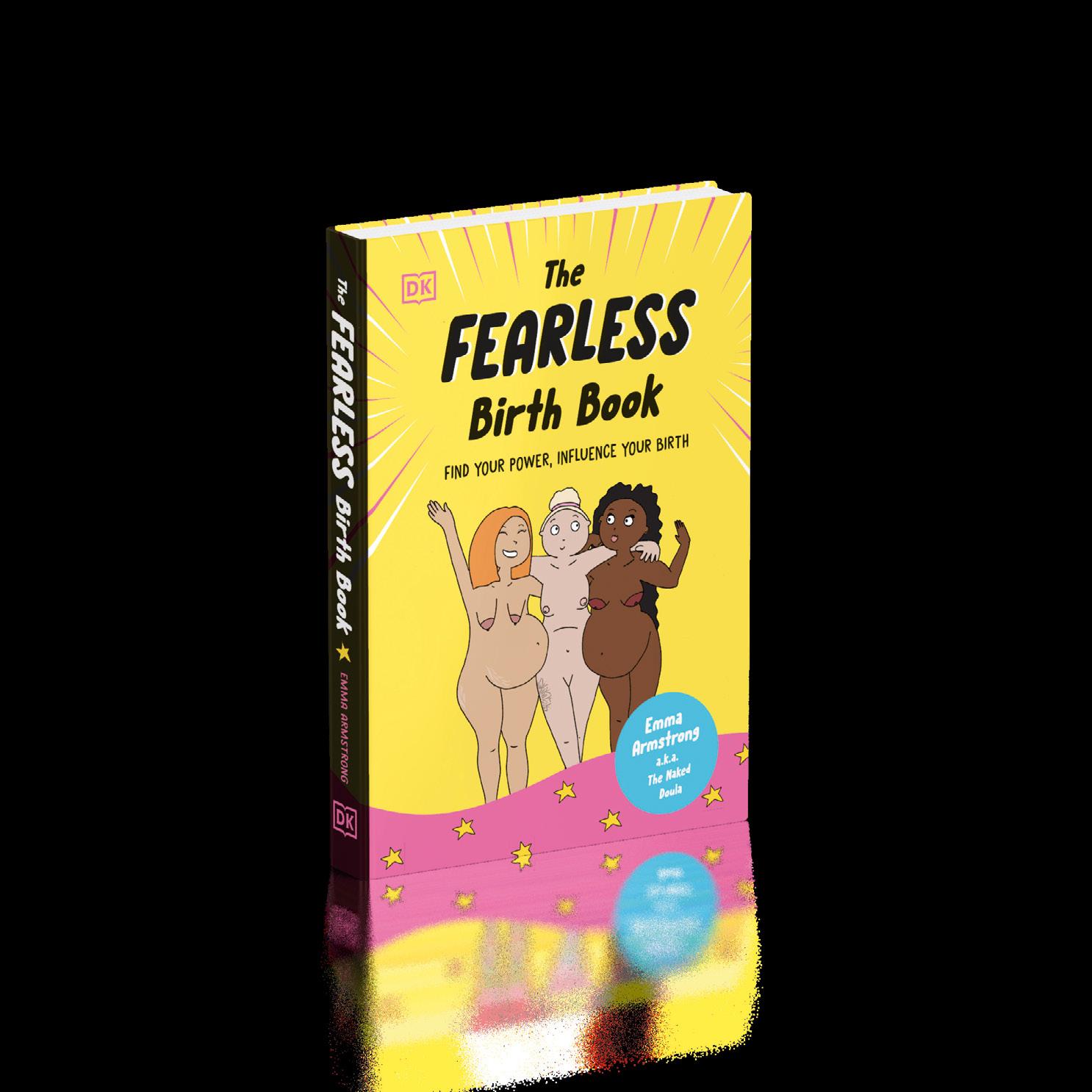

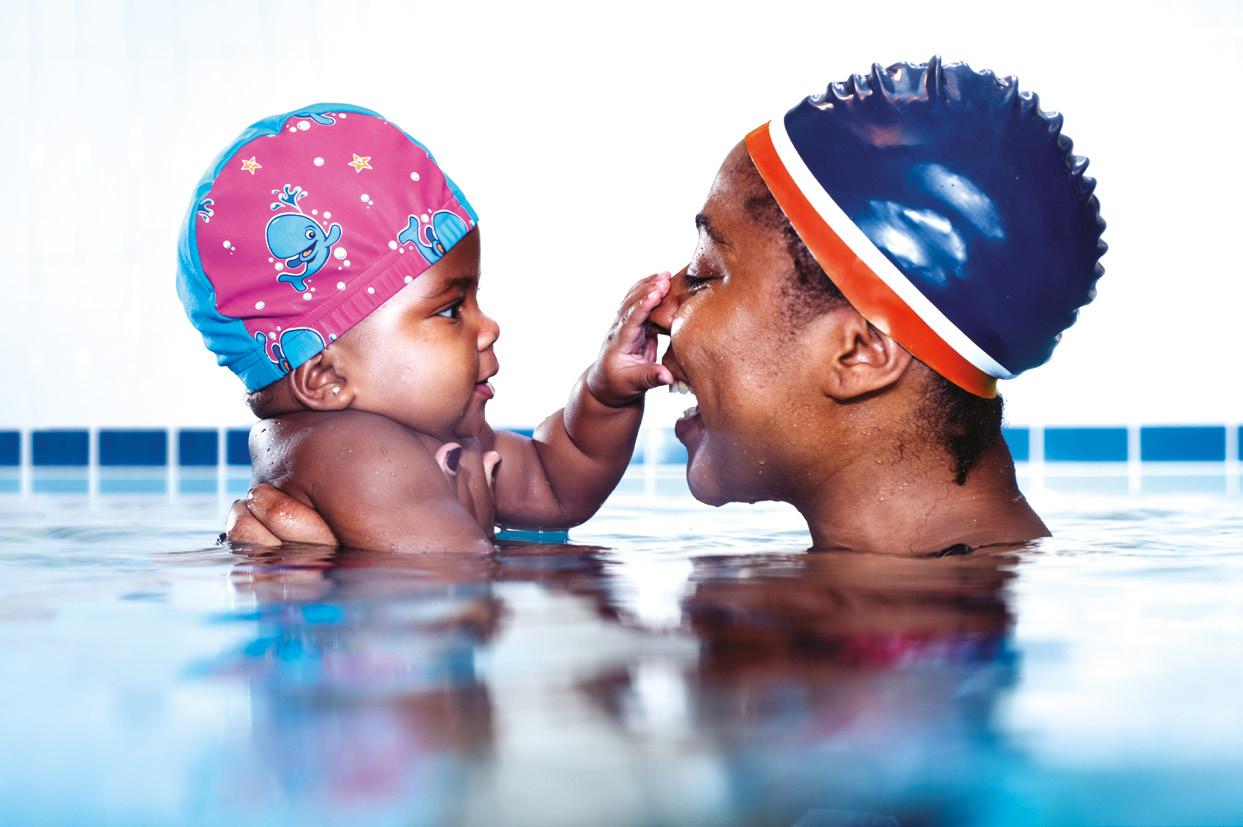
Water Babies explains the many benefits of taking your baby swimming.
There are endless benefits of teaching your little one how to swim. From supporting their development as they grow to learning key water safety skills, babies and toddlers thrive when they learn to swim from a young age.
Drowning is sadly still one of the leading causes of death in children. There’s no better peace of mind than knowing your little one can keep themselves safe both around and in the water. Introducing them to the water from birth will help prevent a fear from developing later and make them feel confident should they ever be in an emergency situation. Little ones will learn a skill for life, which will stay with them as they grow.
Having structured lessons with expert teachers will help your child learn key water safety skills, which will help them both in and out of lessons. For example, right from day one at Water Babies, you and your little one will learn how to enter and exit the pool
safely and together will learn techniques which one day could save a life.
Throughout their lessons, your baby will develop the strength to hold on to the side of the pool and move across the wall. And when they grow into toddlers, this skill will progress as they’re a bit more keep to jump in! So we’ll teach them how to do this safely. The end goal will be for your child to be able to independently swim to the side and climb out to safety, wherever they are.
In a 2023 survey of Water Babies customers, the top three reasons and priorities for why their family chose to start baby swimming lessons were:
To develop my child’s water confidence (85.96%)
To teach my child to swim (80.05%)
To teach my child safety skills (63.55%)

This is why water safety is at the heart of what is taught in lessons, but in a fun and engaging way to support little ones as they learn.
In a 2023 survey of Water Babies customers, the top three reasons and priorities for why their family chose to start baby swimming lessons were:
Swimming strengthens their heart and lungs as well as their arm, leg and neck muscles.
Bouncing and splashing in the water stimulates the vestibular system, aiding balance.
Swimming results in increased lung volume, better breathing techniques, strong heart and lung functions, and improved general fitness in little ones who swim in the early years. Doing regular exercise as a child can lead to a lifetime of activity, which will only improve their health throughout their life.
Babies typically start walking earlier if they’ve been baby swimming.
Babies who swim regularly also have improved appetites and sleeping patterns after swimming – which is a win-win for everyone!
Being in the water also helps your baby to move independently before they can crawl or walk and supports muscle tone and growth. It’s a safe place for them to explore their balance and kick those legs. This will help them to become a lot more coordinated out of the water too when they’re standing on their own two feet!
Baby swimming also supports little ones’ intellectual and social skills, especially in a group lesson with babies of similar ages.

“Swimming helps to support babies’ physical development”

Research has indicated baby swimming results in increased social, academic and personality development. Not only this, but in baby swimming lessons there are a lot of cross-lateral movements (actions which cross the midlines of the body) when reaching for a ball for example. This helps develop their hand-eye coordination, and will eventually progress into swimming strokes as they continue to learn. Also, those cross-lateral movements help to build nerve pathways, helping the brain to store and retrieve information.
At Water Babies, every lesson advocates holistic learning through creating water quests and adventures tailored to every
stage of their swimming journey, prioritising child personal development, and nurturing every little mind, body and soul through swimming.
We believe water confidence builds life confidence. The thrill of grasping a new skill or achieving something they’ve been working on will give your little one the confidence to try and learn new things, both in and out of the pool from a young age.
The focused time in the water strengthens the bond between you and your baby, through holding them close and skin-to-skin contact in the comforting warmth of the water. Your baby can smell you, feel your heartbeat, and hear your breathing, which all help calm and relax them (and you). This stimulation reminds them of the security and safety of the womb. The warmth of the water is the perfect place to connect with your baby, away from the bustle of daily life. And, it’s also a place for you to have fun too.
Water is a leveller, a place where everyone can flourish and have fun in a noncompetitive environment. Swimming has a whole range of benefits for babies and toddlers with disabilities and learning difficulties or little ones who aren’t able to, or struggle to, be active and move in traditional dry-side activities. As well as the physical rewards swimming brings (things like the buoyancy in the water helping to reduce pressure on the bones and joints), water provides a weightless environment as well, so babies can use more muscles and move freely, which helps to develop muscle tone and strength. By focusing on the achievements of your little ones and not their limitations, their confidence will grow and grow.
At Water Babies, our classes are completely inclusive, and our teachers support families whose children need extra special care within classes.
Whether you’re going on holiday, want to attend some family swimming sessions or want to start some lessons, baby swimming is a great activity to do with your little one. Not only are there lots of benefits, you’ll also have lots of fun as well as you learn a skill for life.
Start your baby swimming journey with Water Babies today. For more information, visit: waterbabies.co.uk

Can you spot the blue rubber ring?
What better way to stimulate your children’s brains than to challenge them to complete a brainteaser? Only those with the sharpest minds can solve both of the puzzles, so put your detective skills to the test with these brainteasers created by OutdoorToys.

Can you find the child playing with a toy plane?
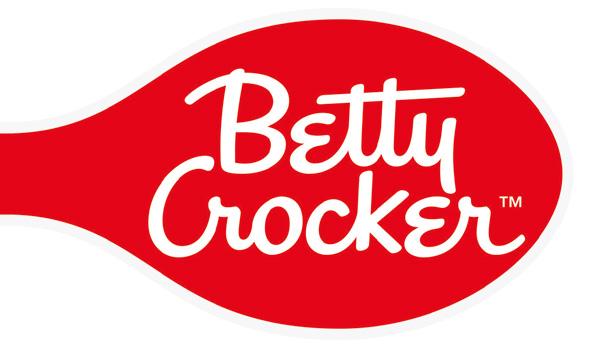


Hanna Dilley, founder and chef of Benji’s Bites Toddler Food, explains why it’s beneficial to get your kids involved in cooking and offers top tips on how to make it fun!
Cooking together as a family is a great way to bond and spend time with your children, as well as teaching them important life skills. If you introduce your children to cooking in a fun and engaging way, it can be a pleasure for children of all ages and encourage a love of cooking and baking. If your children are quite young, start with the basics of simple chopping, mixing or stirring. If they are older or more capable, look for recipes that are more challenging – both in their skill set and palate.
I have two boys, Benji and Reuben, who are now aged six and eight. They love to get involved with cooking and baking at home. We try to cook a family meal together once a week, usually on a weekend when we have more time. I love seeing their interest in food grow and they’re always learning new skills. My youngest can be fussy at times, but he is more likely to eat his dinner if he’s helped to make it! It can sometimes be stressful, and it’s mostly always messy, but I believe teaching your children how to cook is one of the most important skills they can learn. So why you should get your children involved in cooking?
Fosters healthy eating habits – If your child is in the kitchen with you, it’s a great opportunity to talk about different foods and where they come from. If they
watch you cook a meal from scratch with fresh ingredients, it sets them up for a future where they are able to make informed choices about what they eat and take control of their health.
They are more likely to eat what they’ve cooked and try new foods – If your child has been involved with the preparing and cooking of the meal, they are more invested and, therefore, more likely to want to eat what they’ve cooked. They are also more likely to try new foods.
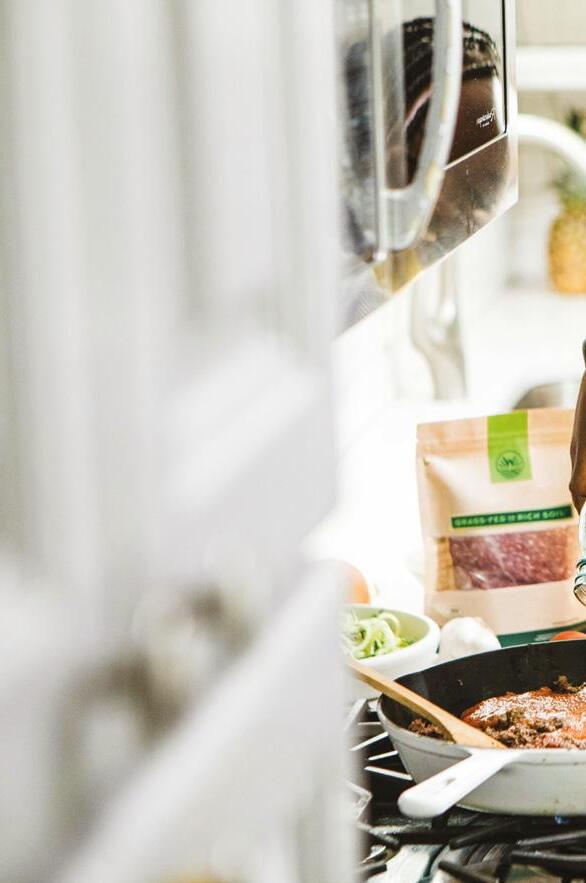
Quality family time together – Cooking as a family provides quality time together, with the added benefit of no screens. It gives you a chance to chat with your child and it can be really fun. Regular family cooking sessions will help to create positive memories that they will cherish for years to come.
Develops fine motor skills and teaches academic skills –Especially for toddlers and younger children, cooking and baking helps them develop fine motor skills such
(see recipe on page 102)

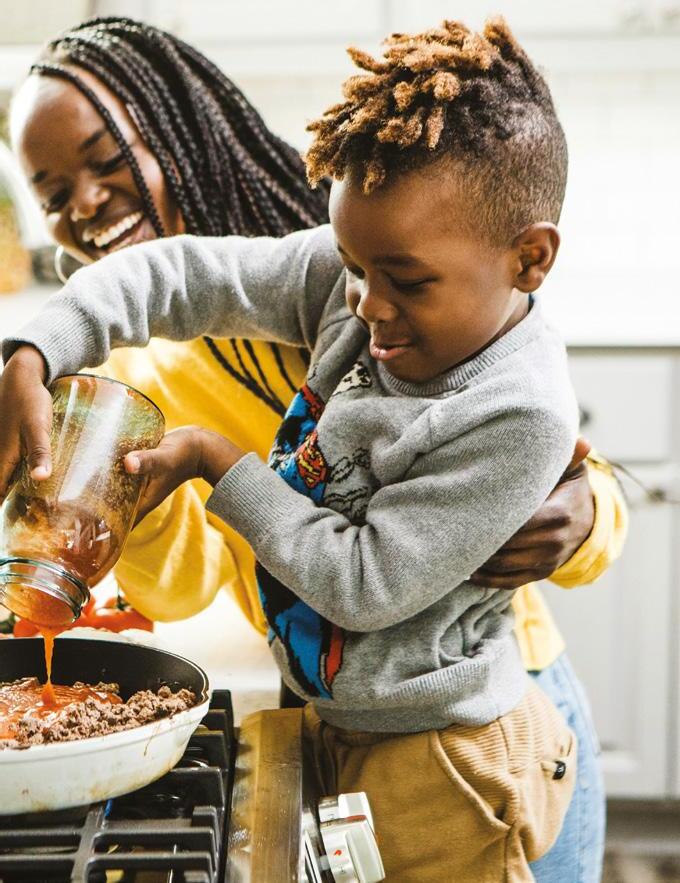
as chopping, measuring, mixing, rolling and kneading etc. For older children, cooking can provide real-life examples of science, maths, reading comprehension and problem-solving.
Boosts a child’s confidence – Cooking and baking are a great opportunity to allow your child to be creative. It shows them independence, teaches them new skills and allows them to be proud of what they’ve created, boosting their self-confidence.
“Cooking as a family provides quality time together”
Teaches life skills – Getting kids cooking from an early age allows them to become more independent and self-sufficient when they are older. Over time, they will learn lots of techniques and recipes, so that when they leave home or go to university, they will have the confidence to plan meals, shop for ingredients and cook a variety of meals for themselves. Cooking also teaches children about the importance of good hygiene, food safety and nutrition.
Carve out the time - Try to make a family cooking session a priority in your busy week. Setting the intention every week keeps it on
everyone’s agenda, whether it be the same day each week or a day that works depending on what else is going on. If cooking a full meal feels too much, you could start by asking your kids to help chop some fruit for breakfast and build from there.
Provide them with choices - Give your child a choice of what you cook together and what tasks they want to do. Giving them some control will keep them engaged and interested. It will also teach them to think about the different foods they might want to cook.
Take your kids shopping - This is a great opportunity (if you can face it!) to discuss the different types of food they can find in the supermarket. Give them challenges to find certain ingredients.
Get all the ingredients and equipment out and ready to go - This prevents your kids from getting bored or distracted while you’re looking for ingredients. It also shows them everything that will go into the dish, so they get a better understanding of the full meal.
Be patient and let them be messy
- Things will naturally take a little longer and get a little messier. Let go of your expectations and embrace the mess! Allow your little ones to take their time with their tasks and don’t worry if they’re slow or messy. Try not to interfere too much or take over. If you let them make their own mistakes, they’ll learn from them and improve over time. Just factor in extra time in the meal preparation.
Get them involved in setting the table and clearing - Teach your children about all aspects of having a family meal, including setting the table and clearing up as they go, as these are also important life skills.
Hanna Dilley is the founder and chef of Benji’s Bites Toddler Food, which helps busy parents give their little ones quick, tasty and wholesome meals that can be easily adapted to suit their children’s tastes and appetites. The small frozen cubes allow parents to choose both the meal combination and portion size, helping to reduce the stress of feeding little ones. They are available to buy online at benjisbites.co.uk , with UK nationwide delivery available.

Mum of two and founder and chef of Benji’s Bites Toddler Food, Hanna Dilley shares her top three recipes that parents will love to cook with their kids.
Eggs are a great source of nutrition for babies, toddlers and kids – full of protein and vitamins. Shakshuka is a great versatile dish, which means you can add lots of different ingredients depending on what your little ones like or what needs using up in your fridge or cupboard! In this recipe, I’ve added chorizo for flavour, lots of veg, cannellini beans for more plant points and feta to add some more protein and fat. This recipe involves cooking on the hob, so little ones will need supervision or you may want to do the frying for them.

Eggs are a great source of nutrition for babies, toddlers and kids – full of protein and vitamins
For the Shakshuka:
- 2 tbsp olive oil
- 1 small onion, finely chopped
- 2 cloves garlic, crushed
- 130g cooking chorizo, chopped
- 1 red pepper, thinly sliced
- ½ courgette, finely chopped
- 1 tsp smoked paprika
- 1 tsp cumin
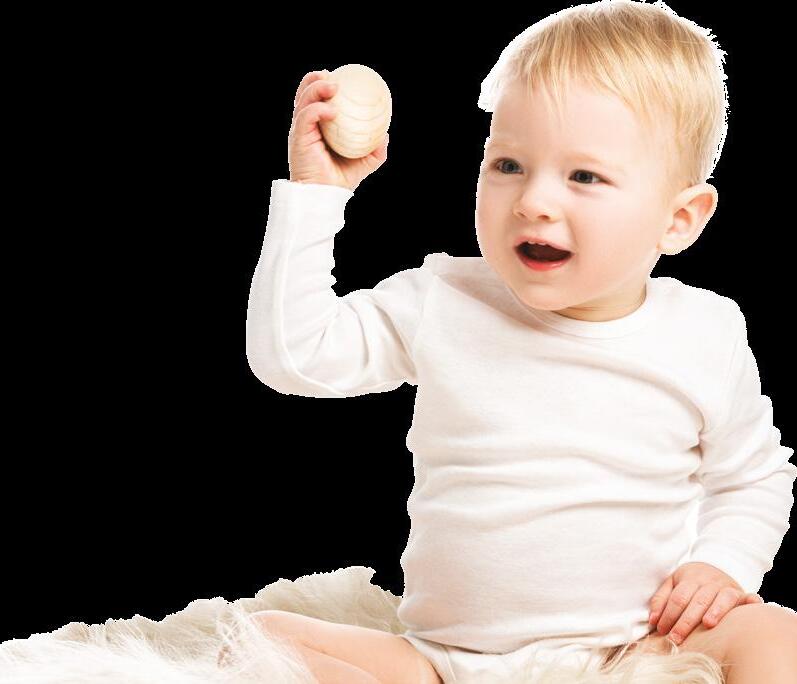

- 1 tbsp tomato puree
- 800g chopped tomatoes (2 tins)
- 235g cannellini beans (one 400g can, drained and rinsed)
- 6 eggs
- 100g feta cheese, chopped
- chopped fresh coriander (optional)
For the Flatbreads (makes 4):
- 170g of plain flour (or strong bread flour if you have it)
- 100ml warm water
- pinch of salt (optional)
- tablespoon of olive oil METHOD
1. Heat the oil in a pan that has a lid, over a medium heat.
2. Crush the garlic and cut the onion, pepper and courgette.
3. Add the garlic and onion to the pan and fry for 5 minutes, until softened.
4. Add the chorizo and fry for a further 2 minutes.
5. Add the sliced peppers and courgette and fry for 5 minutes.
6. Measure out the cumin, smoked paprika and tomato puree in a small bowl.
7. Add to the pan and mix well. Cook for 5 minutes.
8. Add the tins of chopped tomatoes and tin of drained
1. While the veg is cooking, and the adult is stirring the pan, your child can measure out and sieve the flour into a large mixing bowl.
Stirring the pan (with supervision)
Cracking the eggs
Mixing and kneading the dough
Rolling out the flatbreads

2. Add the olive oil and salt then add the warm water bit by bit and let your little one mix the dough together with their hands – it will get sticky!
3. Lightly flour the surface and knead the dough for about 5 minutes (adults might need to take over or use a dough hook in a food processor!).
Make it plant-based
Add slices of vegan feta into the shakshuka mixture at the end to cook, instead of the eggs.


4. Leave for 10-15 minutes.
5. Heat another large frying pan or griddle pan to a medium-high heat.
6. While the eggs are cooking, divide the flatbread dough into 4 balls. Lightly flour the surface and roll each ball out thinly.
7. Cook each flatbread for a couple of minutes on each side, being careful not to burn them.
Measuring, sieving and weighing out ingredients Chopping the peppers, courgette, and feta (with childsafe knives)
Leave out the chorizo and add tofu if desired.
Add whatever ingredients you have in your cupboard/ fridge or your child’s favourite flavours. You could add any type of veg, chicken, ham or sausage to replace the chorizo, any type of canned beans, whatever you like!
The shakshuka mix can be kept in the fridge for leftovers or frozen. Just eat/take out any remaining eggs as these won’t reheat very well.
Tacos are another great family meal option. They are so versatile, so you can choose any fillings you like. Plus, they’re fun to assemble and eat – put everything on the table and let everyone dig in!
- 2 tbsp olive oil
- 2-3 boneless skinless chicken breasts, cut into strips
- 1 lime
- ½ tsp cumin
- ½ tsp smoked paprika
- ½ tsp ground coriander
- ½ tsp garlic powder
- handful cherry tomatoes, chopped into quarters
- 1 avocado, mashed
- 80g cheddar cheese, grated
- small pot of Greek yoghurt or sour cream
- 1 little gem lettuce, roughly chopped
- 8 small soft or hard tacos (corn or wheat)
- coriander/parsley (optional)
1. Cut the chicken breasts into thin strips.
2. Put the chicken strips into a large, sealable food bag and add the cumin, paprika, garlic powder and ground coriander. Add 1 tbsp olive oil and the juice of half the lime.
3. Seal the food bag and mix the chicken around until it is well coated by the spices and oil – a fun job for the kids to do!
4. Refrigerate the chicken while you prepare the other fillings. Serve each one in a separate bowl so everyone can choose what they want to add to their tacos.
5. Cut the cherry tomatoes into quarters.
6. Peel and de-stone the avocado and mash with a fork.
7. Grate the cheddar cheese.
8. Roughly chop the gem lettuces.
9. Cut the remaining half of the lime into wedges for squeezing over the tacos.
10. Heat a frying pan over a medium heat and add the remaining
1 tbsp of olive oil.
11. Cook the marinated chicken for 5-10 minutes until cooked, turning regularly.
12. When the chicken is cooked, set the table with all the different fillings.
13. Gently heat the tacos per the packet instructions.
14. Serve all together and dig in, letting everyone assemble their tacos how they like. Embrace the messiness!
Measuring the spices
Mixing the chicken marinade in the bag
Cutting the tomatoes and lettuce
Mashing the avocado
Grating the cheese
Frying the chicken (with supervision)
Setting the table with all the different fillings
Swap the chicken for jackfruit, tofu, chickpeas or black beans and marinade the same way. Use plant-based alternatives for the cheese and sour cream/ yoghurt – there are a few different options available in the supermarkets.
For the main filling, you can use anything you like: fish, beef, pork, tofu, jackfruit, mixed veg, seafood, beans, etc. Add red pepper, courgette or onion to the chicken marinade mix to add more veg to the meal.
Make an extra bag of the marinated chicken and freeze before cooking. When you need an easy dinner, defrost overnight in the fridge and cook as above.
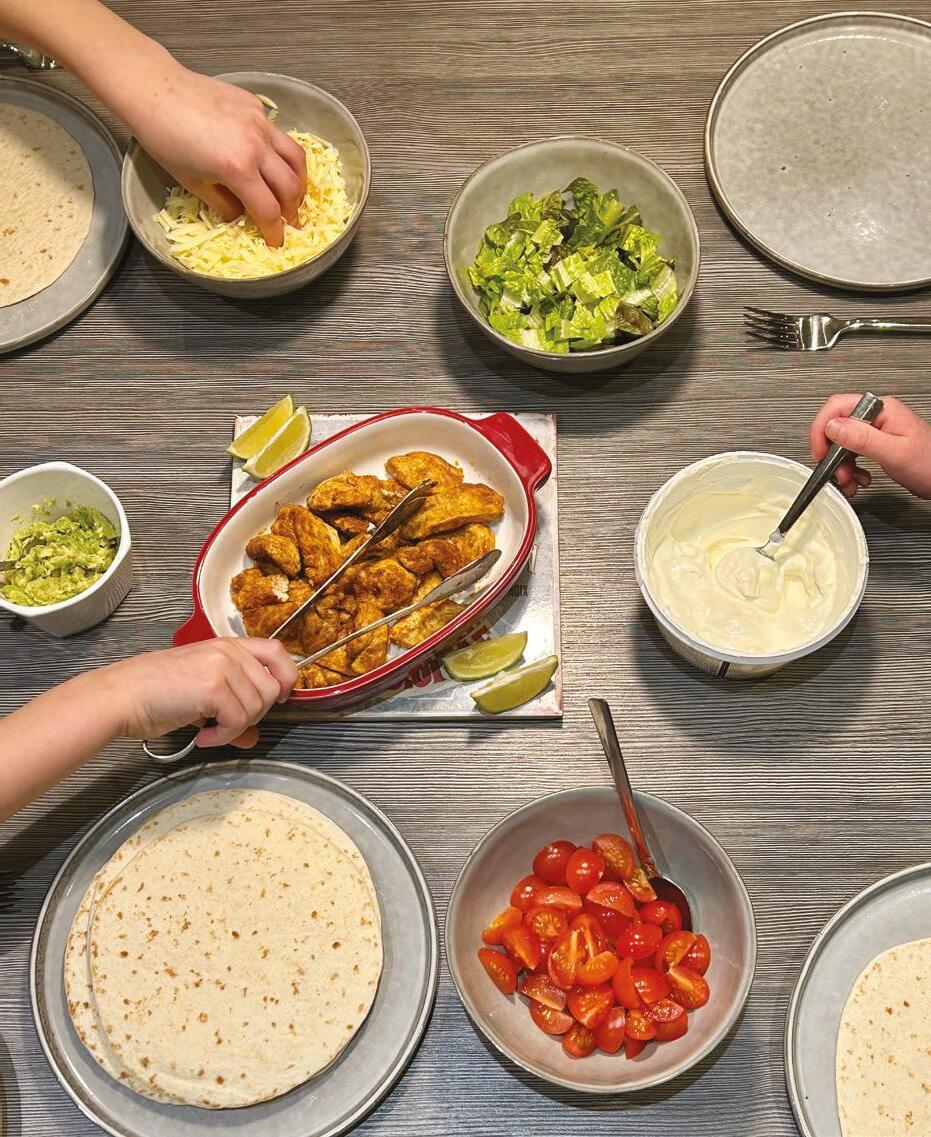



Banana pancakes are a great family treat – whether it be for a weekend breakfast or an afternoon snack! We started cooking them as a family every Sunday at the start of lockdown and it’s now a Sunday family tradition. Using mashed bananas makes them healthier, and adding yoghurt and fruit makes it a more balanced meal.
- 350g self-raising flour
- 1 heaped tsp baking powder
- 2 ripe bananas
- 2 eggs
- 250ml milk of your choice
- ½ tsp vanilla extract (optional)
- Coconut oil to cook
1. Sieve flour and baking powder into a bowl.
2. In a separate, large mixing bowl, mash the bananas with the back of a fork.
3. Add two eggs to the bananas. Help your child crack the eggs into a separate bowl first so any shell is easy to get out!
4. Add the milk of your choice, and vanilla extract if using, and whisk well.
5. Add the flour and baking powder to the wet ingredients and stir with a
whisk until fully combined.
6. Let the mixture stand for about 5 minutes while you heat the pan.
7. Add a small amount of coconut oil (or butter) to a frying pan on a medium heat. Make sure the oil is well distributed – a job for the adult!
8. Add a large spoonful of mixture to the pan: do a few at a time, but leave space between each one for the pancakes to spread a little.
9. Let them cook for a few minutes, until the mixture starts to bubble and the bottom is starting to brown. Using a spatula, flip the pancakes over and cook for another few minutes, until cooked through.
10. Serve with toppings of your choice – we love yoghurt, stewed fruit, berries, grapes and a little squirt of agave maple syrup (no honey for babies under 12 months).
Measuring, sieving and weighing out ingredients
Mashing the bananas
Cracking the eggs
Mixing the batter
Spooning the batter into the pan
Flipping the pancakes (with supervision)
Use a plant-based milk (we use oat milk)
Swap the eggs for aquafaba (the water in a can of chickpeas) – use 3 tbsp of aquafaba for each egg. Whisk the aquafaba separately before adding to the wet ingredients.
While the pancakes are cooking in the pan, and before you flip them, add any filling of your choice –blueberries, strawberries, chocolate chips, raisins, grated apple etc.
Wrap any leftover pancakes in foil and keep in the freezer for a quick treat. Defrost when needed and pop in the toaster to reheat.



